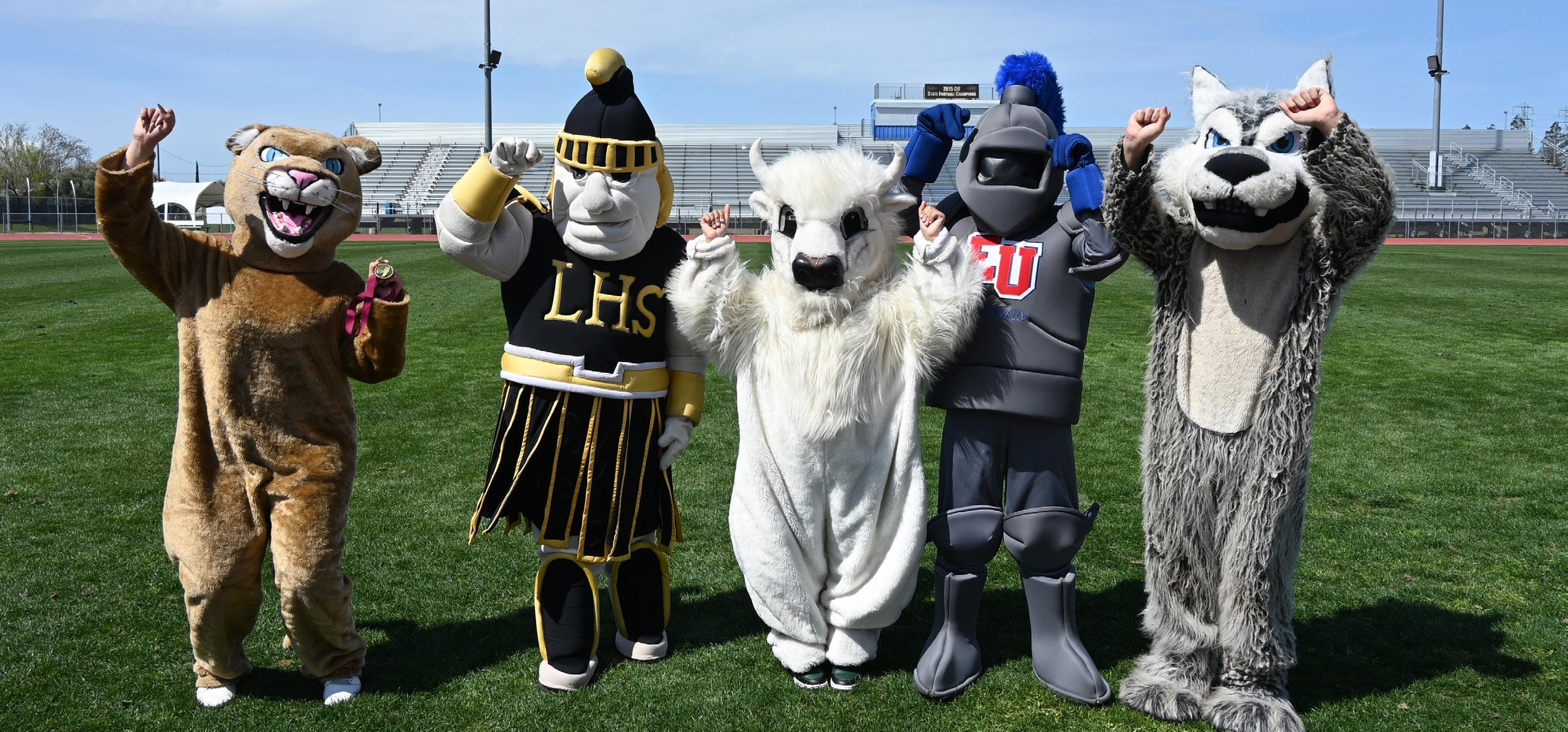2022-2023 SMART ACTIONS & DECISIONS


State of the District






State of the District



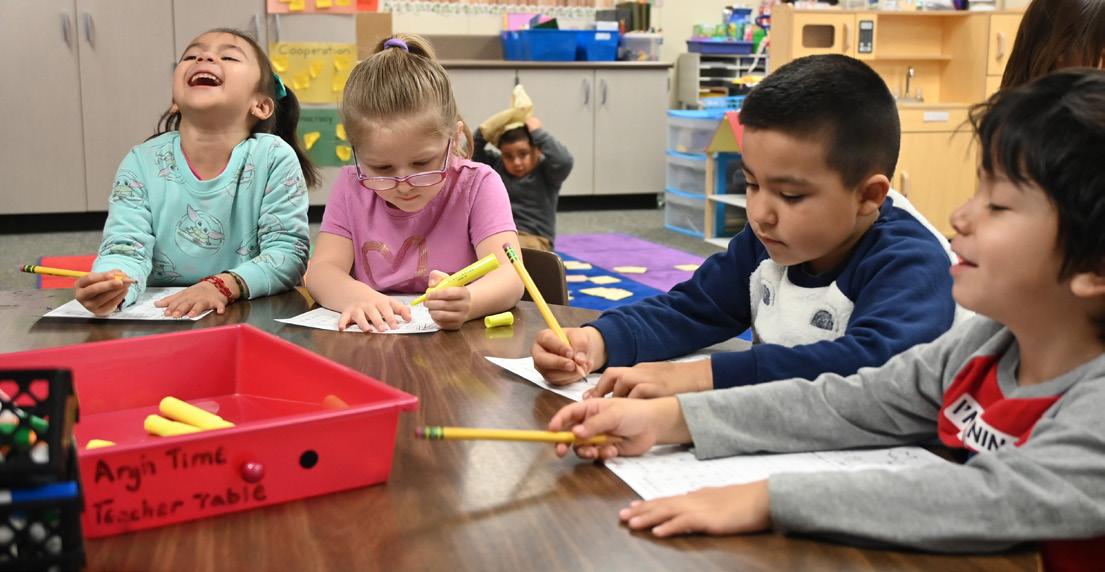
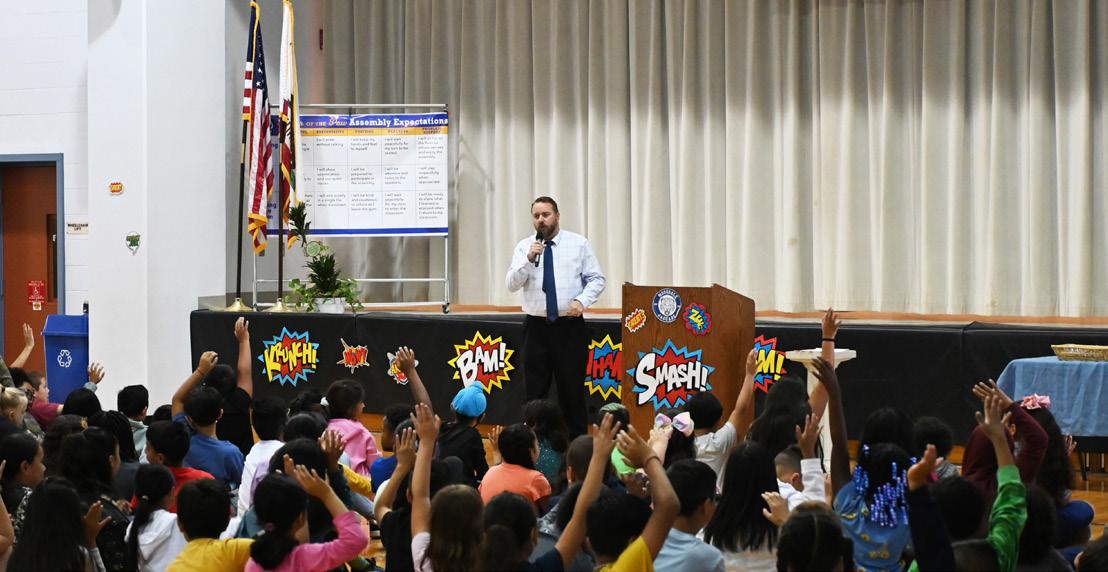
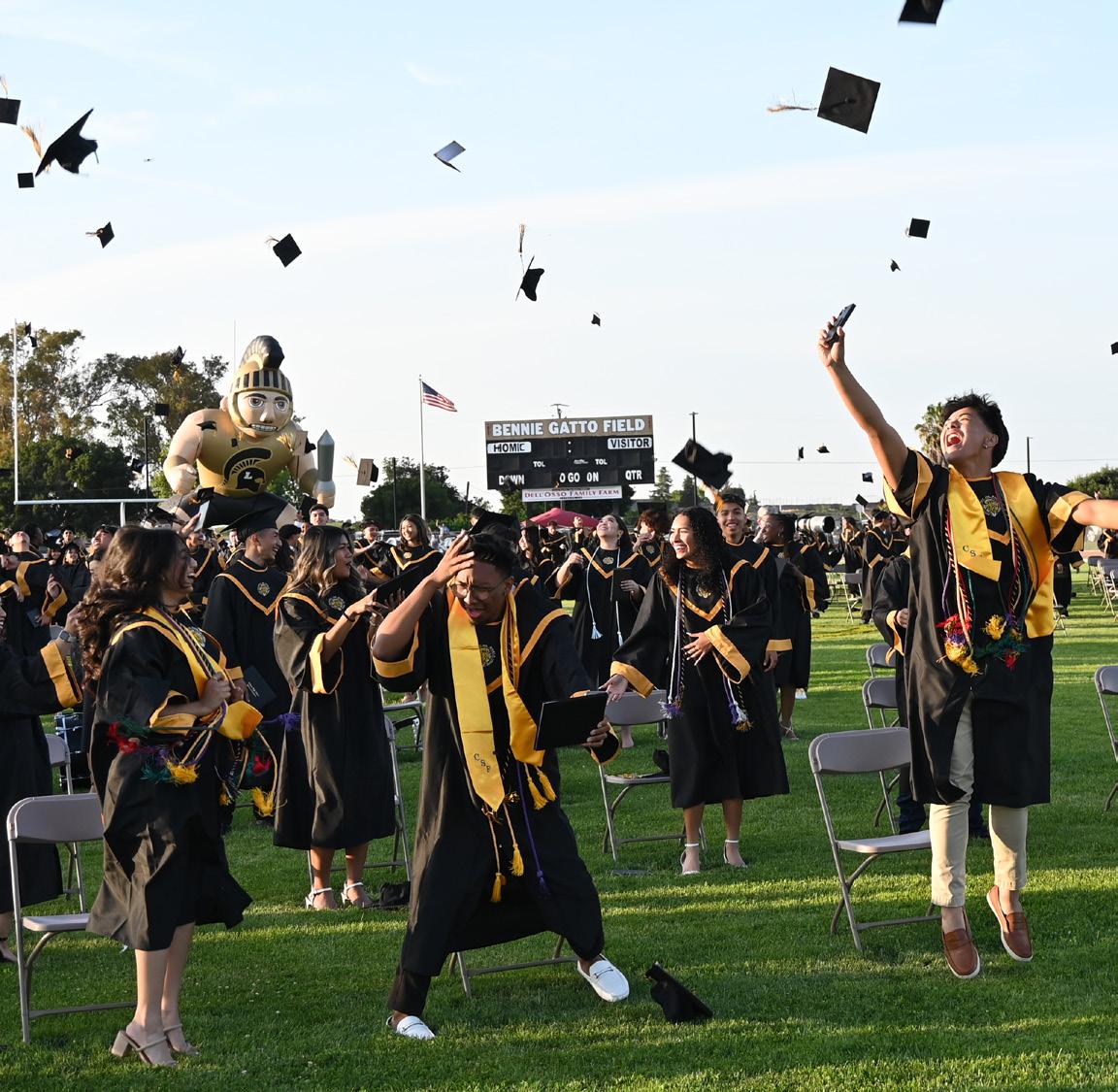
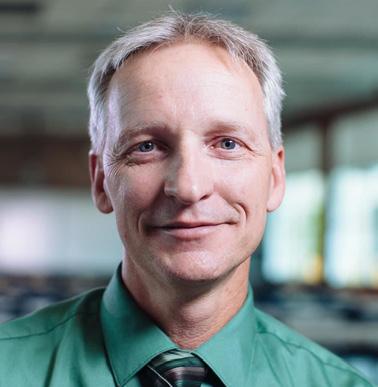
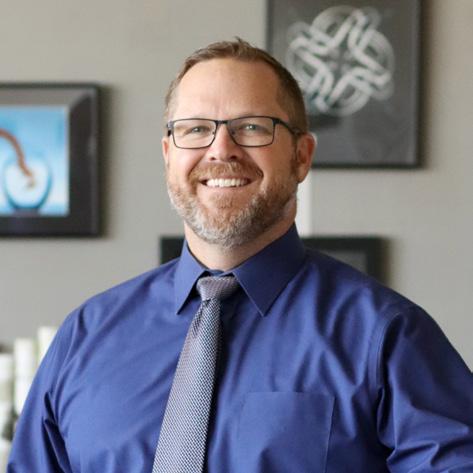

I am very proud of the tremendous progress made over the past five years to redefine what it means to be studentcentered. It has been a journey that has required dedication, collaboration, and steadfast commitment to rebuilding a foundation so that all systems can work together to support each student’s learning standards.

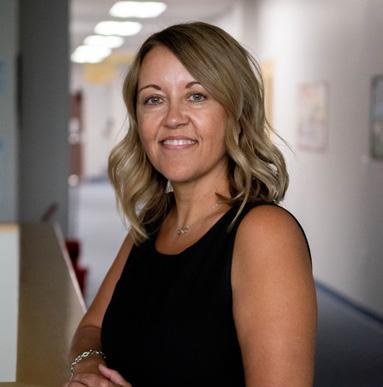
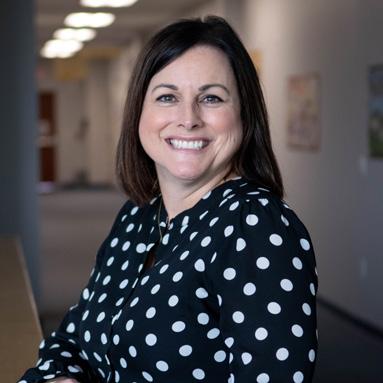
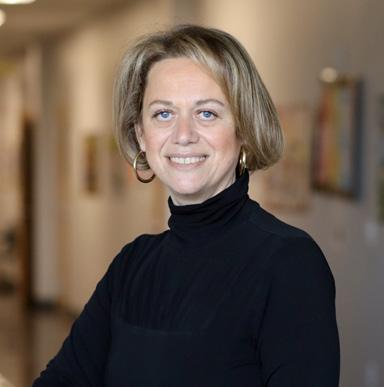
Our journey started with establishing a culture of purpose and trust. We dedicated efforts to cultivating a vision, ensuring that every division within our organization receives the necessary support. Our vision extends beyond mere words on paper; it serves as the foundation of our collective culture and a guiding principle for decision-making. We firmly believe that unity among all leads to heightened success and fosters a sense of belonging for everyone involved.
Embracing a student-centered approach ensures their needs are at the forefront of every decision made. Through targeted initiatives, personalized learning strategies, and continuous professional development for our educators, we have collectively created an environment that fosters student engagement, facilitates growth, and paves the way for their success in the classroom.
While we have made significant progress striving for systemic refinement through data analysis and strategic planning, our journey towards educational excellence where all students are meeting grade level
standards is ongoing. In the 2023/24 school year, district and whole community educational partners will begin to draft the next three-year strategic plan: the Local Control Accountability Plan. This comprehensive plan accounts for every student’s identified learning need through actionable steps, services, and multi-tiered systems of support.
We recognize that meeting student needs on a systemic level requires time, training, unwavering dedication from faculty and staff, and importantly, partnership from the community. At home, there are many ways parents can support their child academically. In the new school year, I encourage every parent and caretaker to engage with their child’s teacher by asking two fundamental questions: “What does my child know now?” and “How can I support their learning from home?” Our steadfast work over the past 5 years to rebuild systemically, ensuring every student receives fair and equitable access to high-quality, public education, has positioned every teacher to answer these questions.
As we reflect upon this past year, you will notice a key theme throughout this publication: program refinement and fidelity. We are ever committed to children realizing and reaching individual success, and we invite you on this journey with us.
Dr. Clark Burke Manteca Unified Superintendent Superintendent’s Cabinet Victoria Brunn Chief Business & Information Officer Clark Burke, Ed.D. Clara Schmiedt Exec. Dir. Secondary Education Jenni Andrews Exec. Dir. Elementary Education Dante Alvarez, Ed.D. Senior Director Roger Goatcher Deputy Superintendent
Manteca Unified’s Board of Trustees plays a crucial role in shaping the direction and goals of the District.
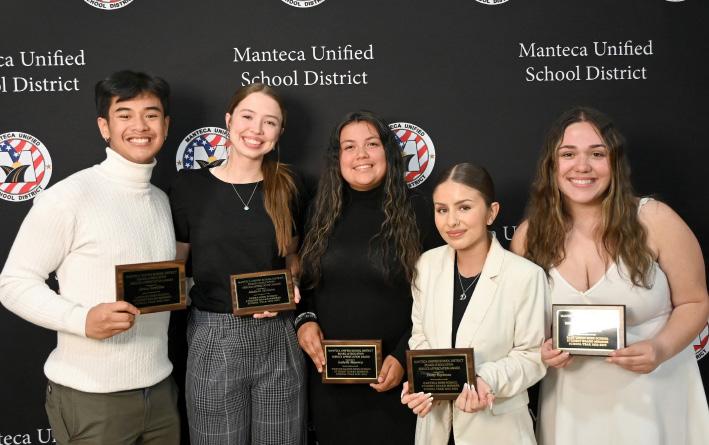

The superintendent, leaders, teachers, and staff collectively translate these guiding principles into practical strategies, policies, and classroom practices, creating an environment where students can thrive academically, socially, and emotionally.
Through Board action and engagement, their efforts to create a positive educational environment contribute significantly to the school’s achievements and the well-being of its students.

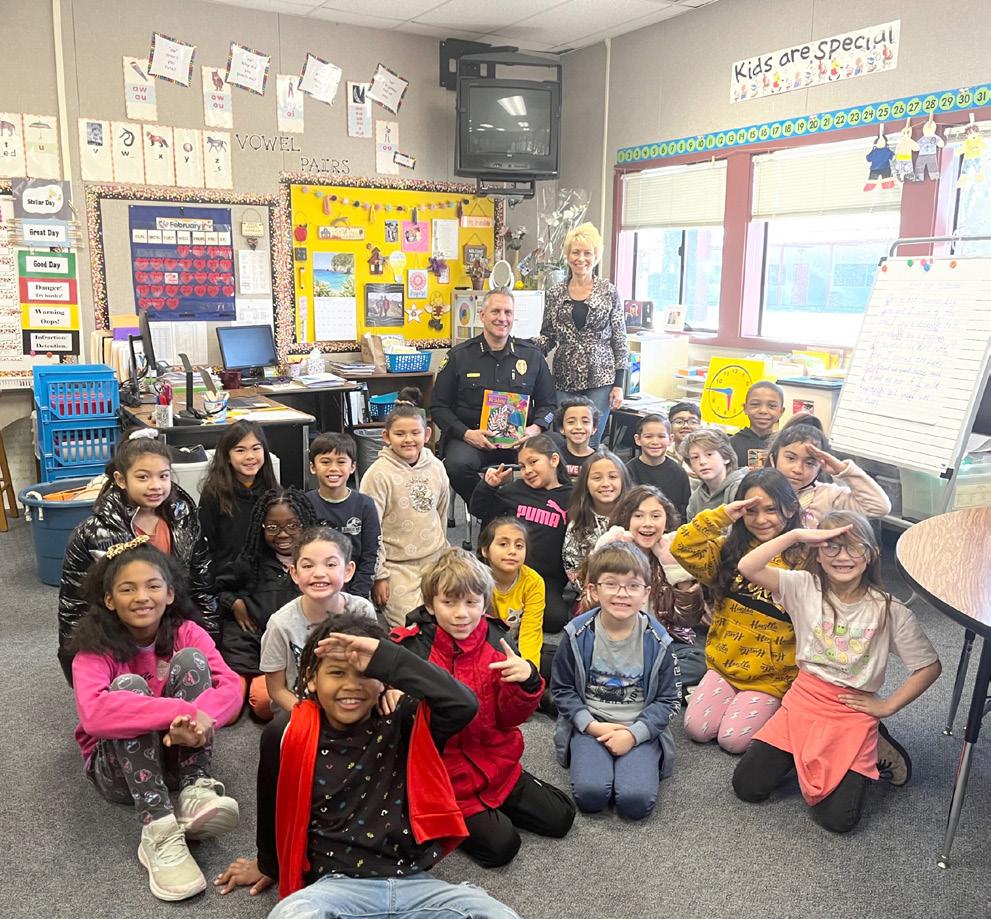
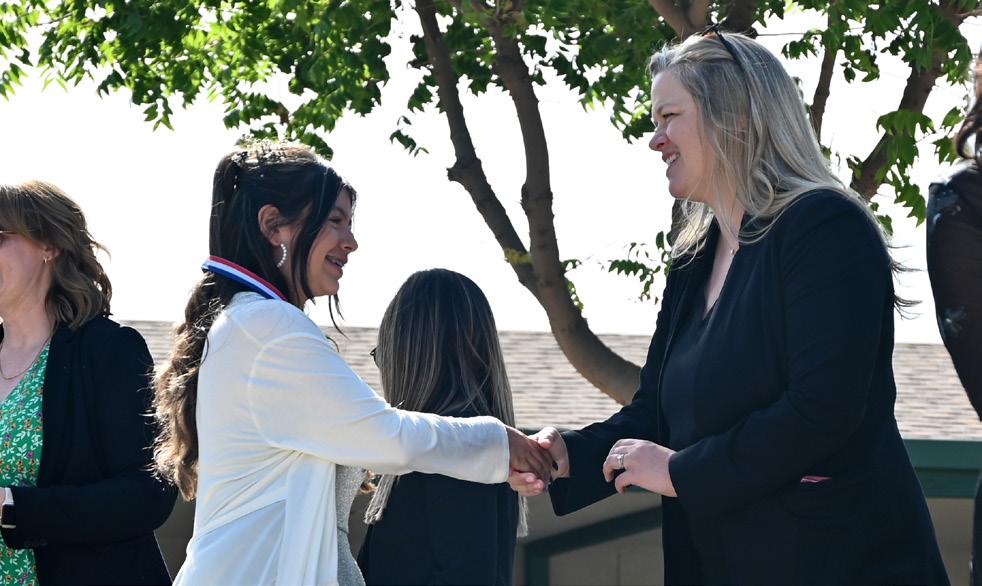
We are grateful for these deeply committed citizens who make students a priority and share our passion for education.
12
Board Meetings
1
1 Study Sessions
LCAP/Budget Meeting

2


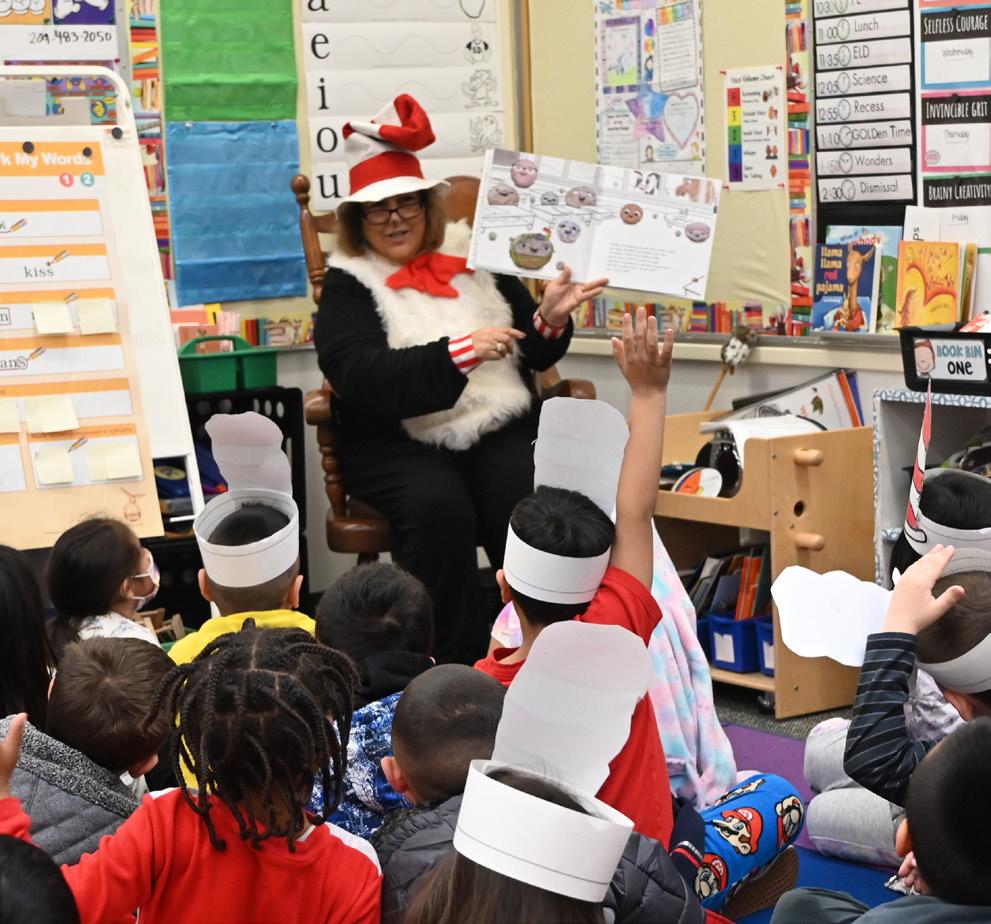
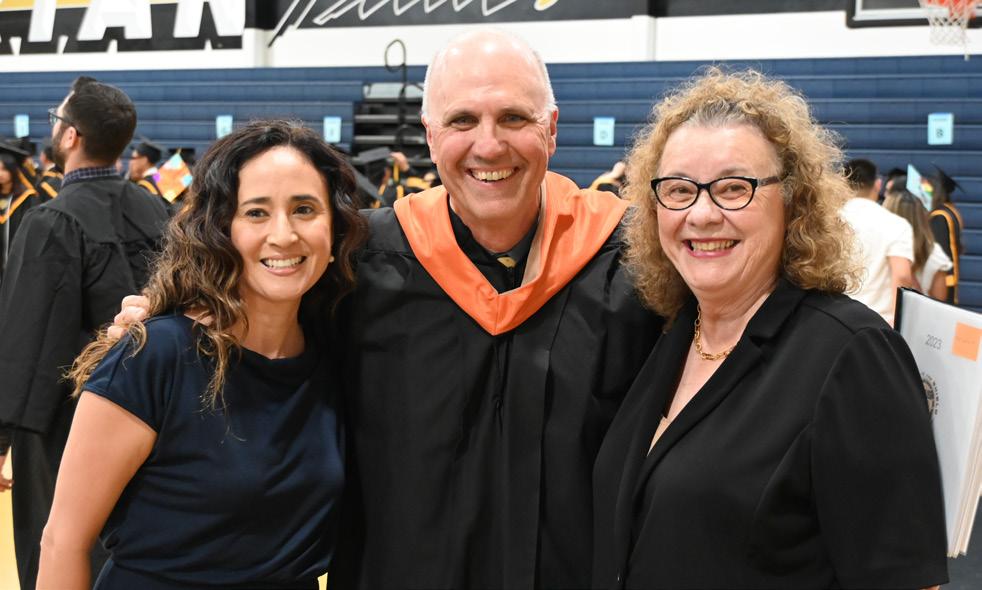
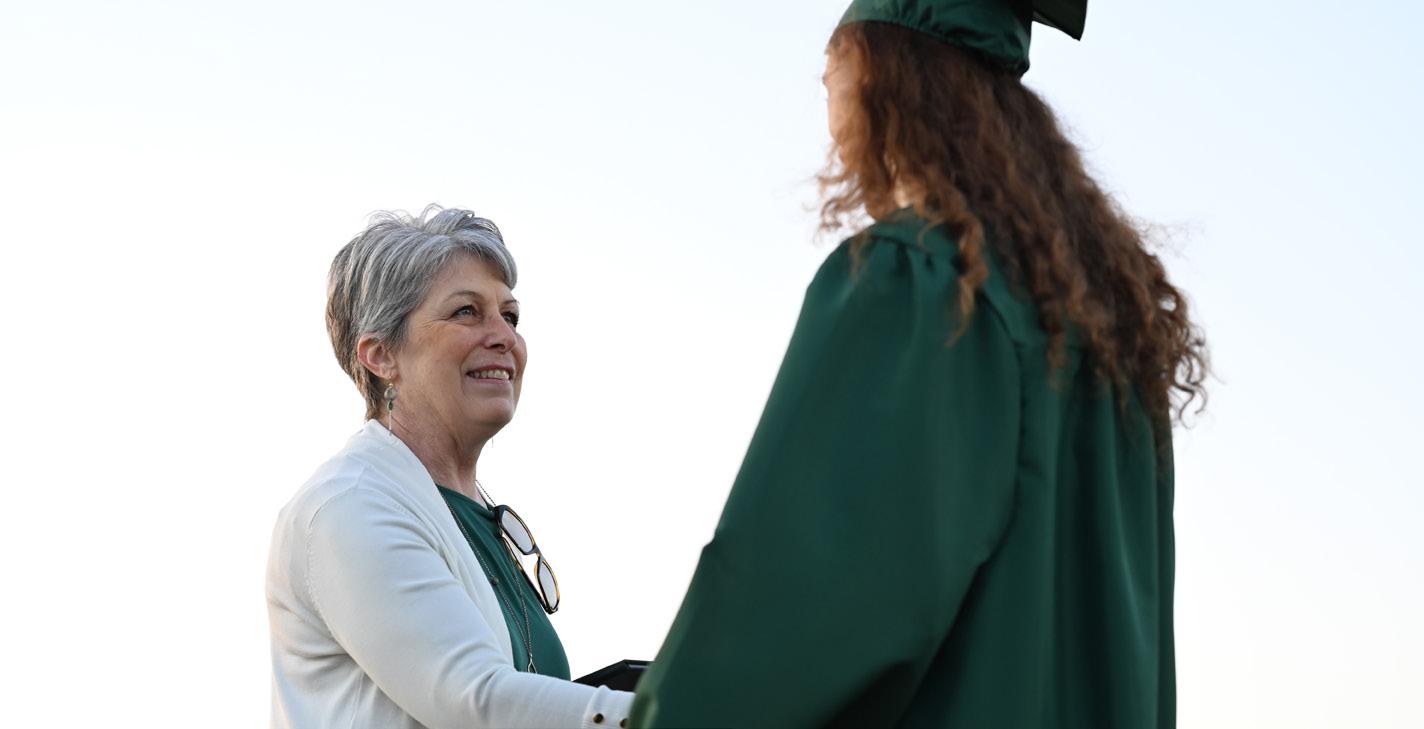
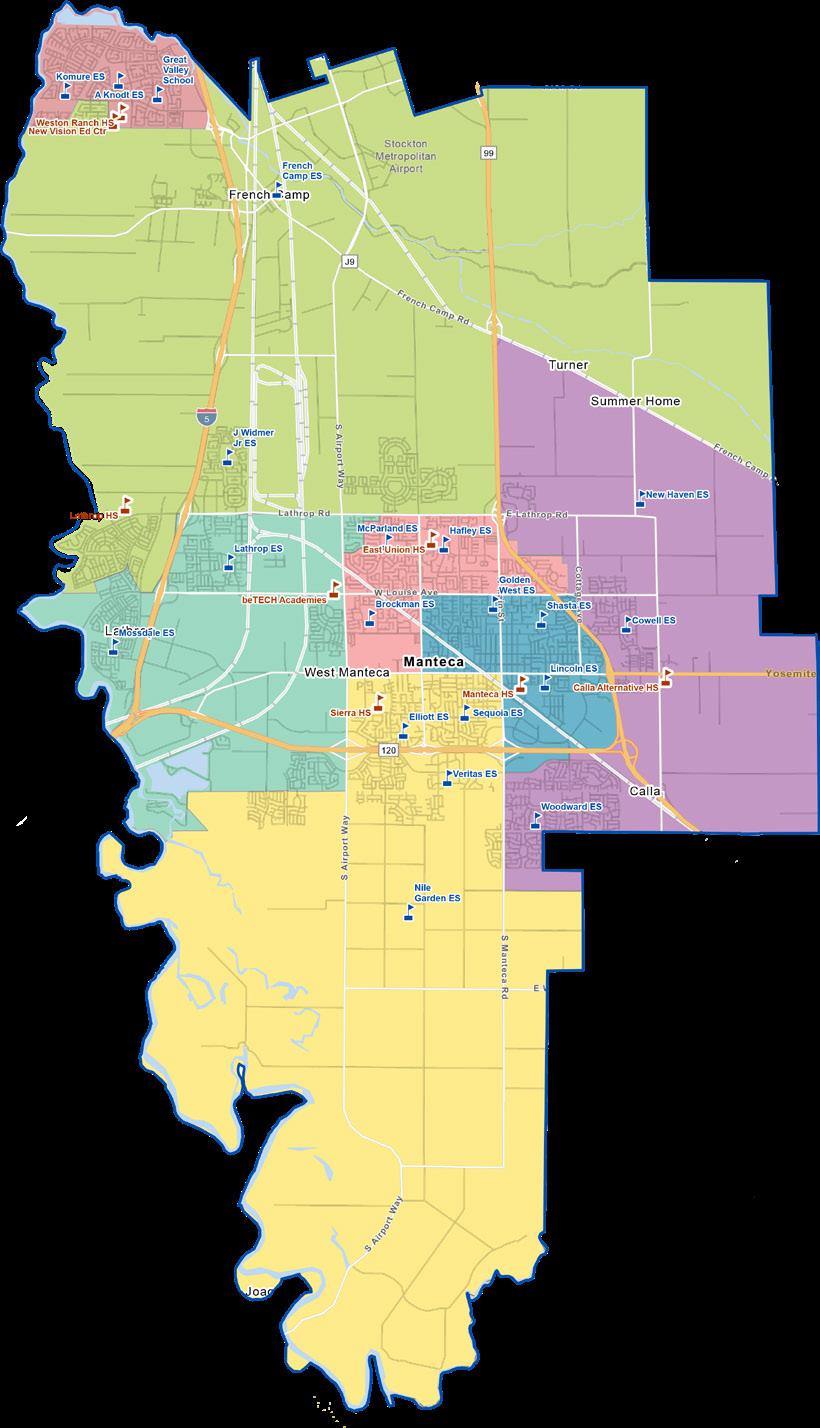
Vision:
Every student works to achieve grade level standards, feels safe and is supported to realize individual success.

Mission:
Through smart actions and decisions, MUSD will work together using meaningful, measurable and aligned data for all students to achieve mastery of grade level standards in all subjects based on their unique educational pathway in a safe environment inclusive of design, security and climate.
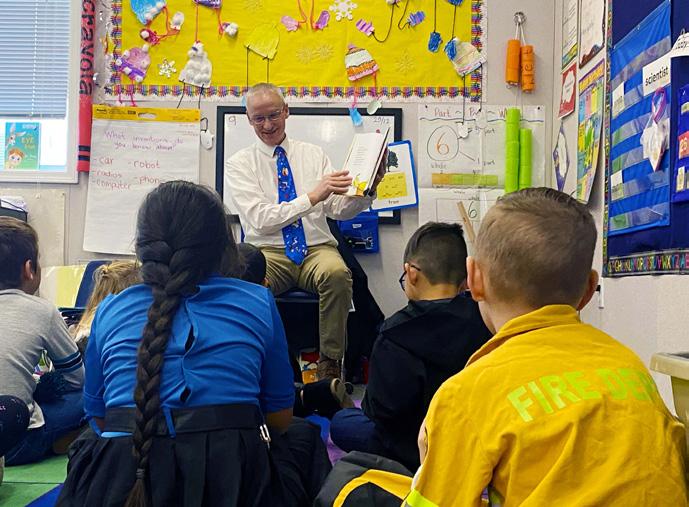
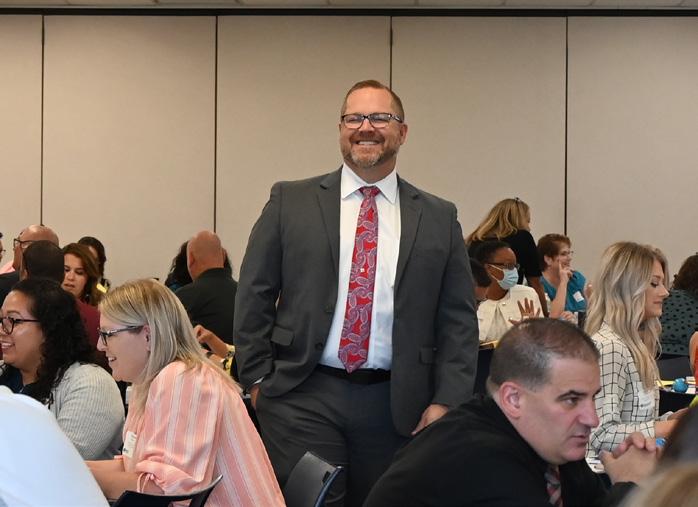
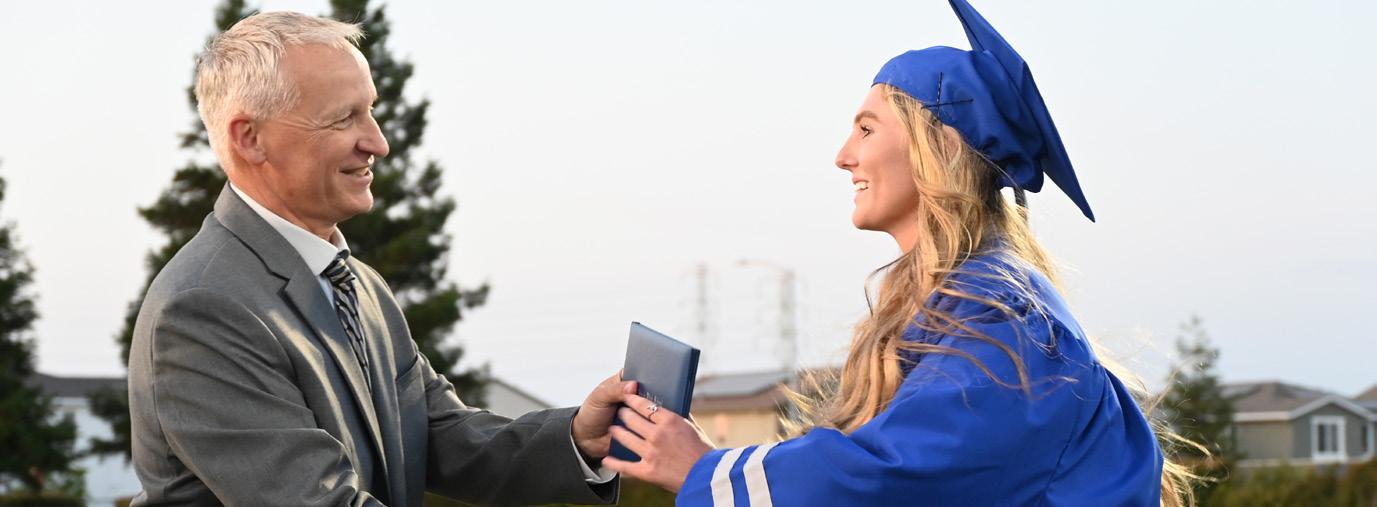

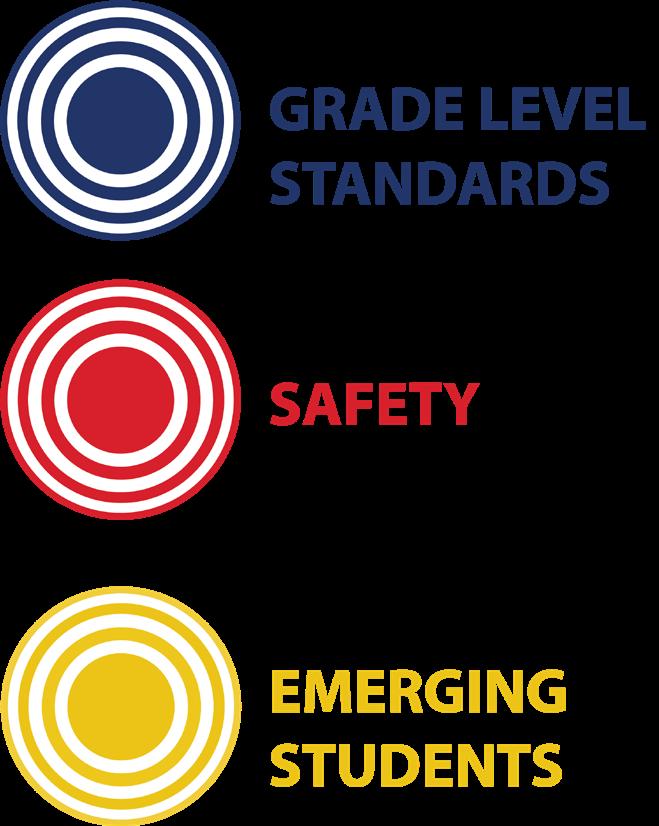
Board Members
District Targets
Educational Sites
5 Comprehensive High Schools
20 K-8 Schools
1 Online School
1 Adult School
3 Alternative Schools
Total Area Served
113 Square Miles
Budget
423.6 Million 2022-2023 Estimated Expenditures (Estimated Actuals)
Ethnic Groups
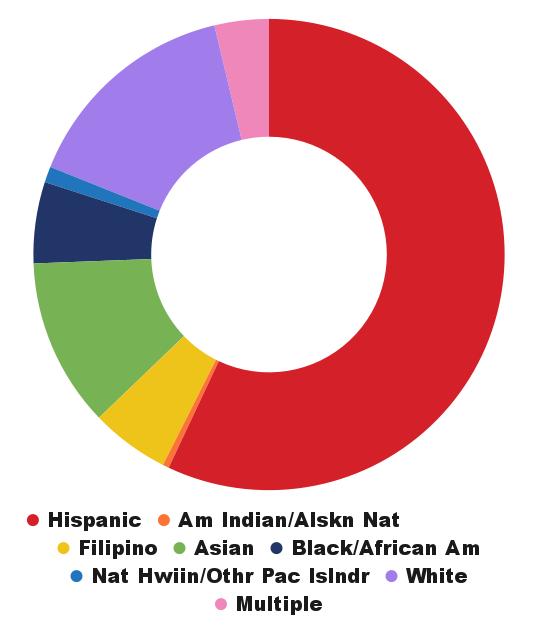
Total Students 24,667
Communities Served
City of Manteca
City of Lathrop
City of Stockton
Township of French Camp
Unincorporated Areas of Manteca







Transportation
1,900 Students Served Daily
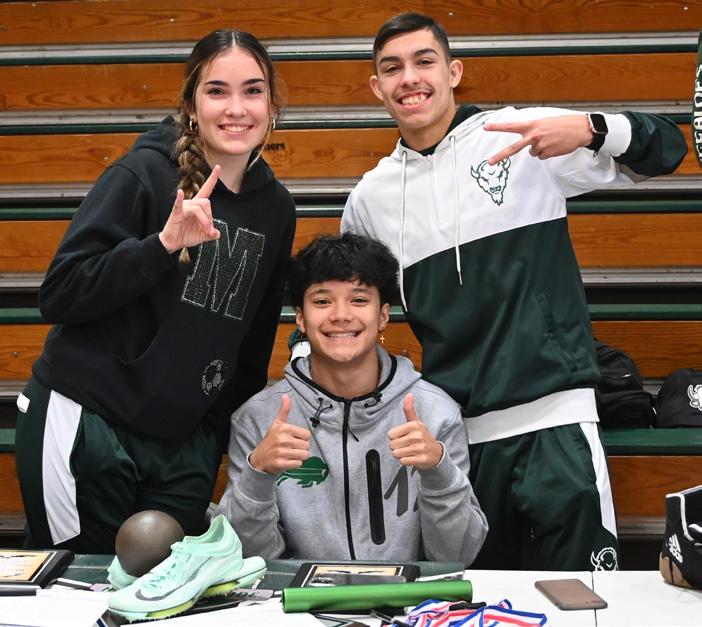

Employees
Certificated: 1,322
Classified: 1,233
2022-2023 Enrollment

Socioeconomically Disadvantaged 56.9%
English Langauge Learners 22%
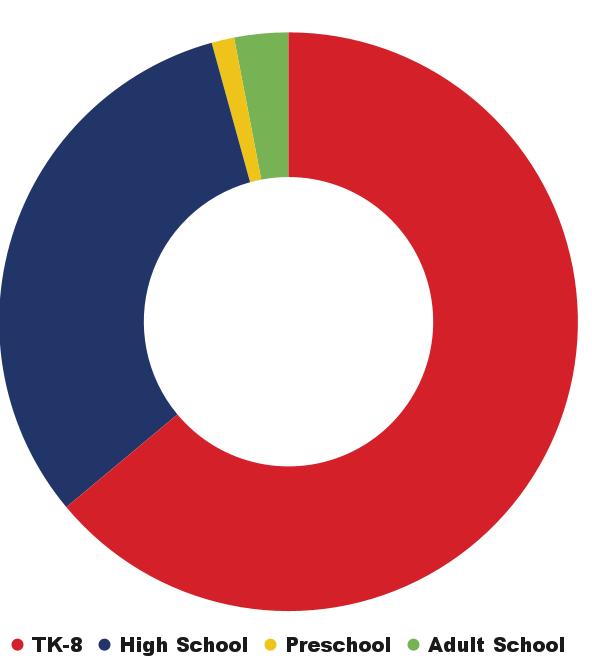
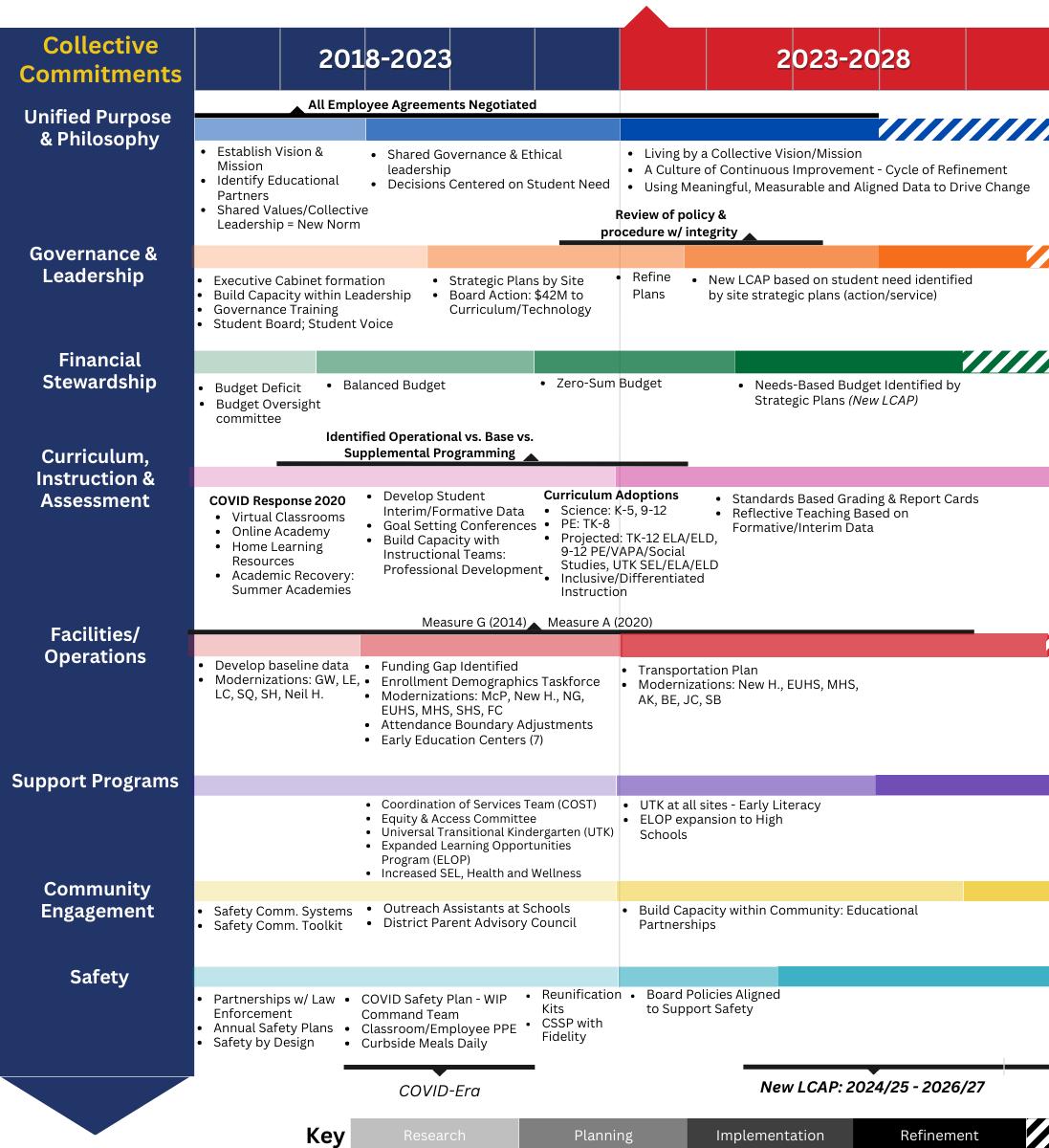
In an ever-changing educational landscape, the Manteca Unified School District recognizes the importance of adaptability and evolution to meet the needs of its diverse student population. To ensure the success of every student, MUSD has strategically transformed and enhanced the foundation of student
learning. As we define what students know, we address what they need to know.
Central to this planning process is the adoption of a collective vision and mission, this serves as a guiding force for all within MUSD. The vision is clear: every
WE ARE HERE
student works towards achieving grade level standards, feels safe, and is supported to realize individual success. This aspirational vision underscores the commitment of MUSD to provide a high-quality education meeting the unique needs and potential of each student.
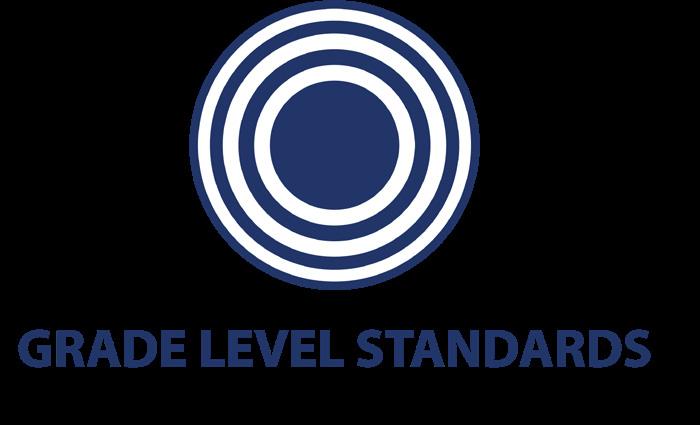
As MUSD embraces this process, we recognize systemic integration where student needs are truly met, a critical area of focus. The District acknowledges continuous refinement is necessary to ensure all resources are optimized to effectively support student success.
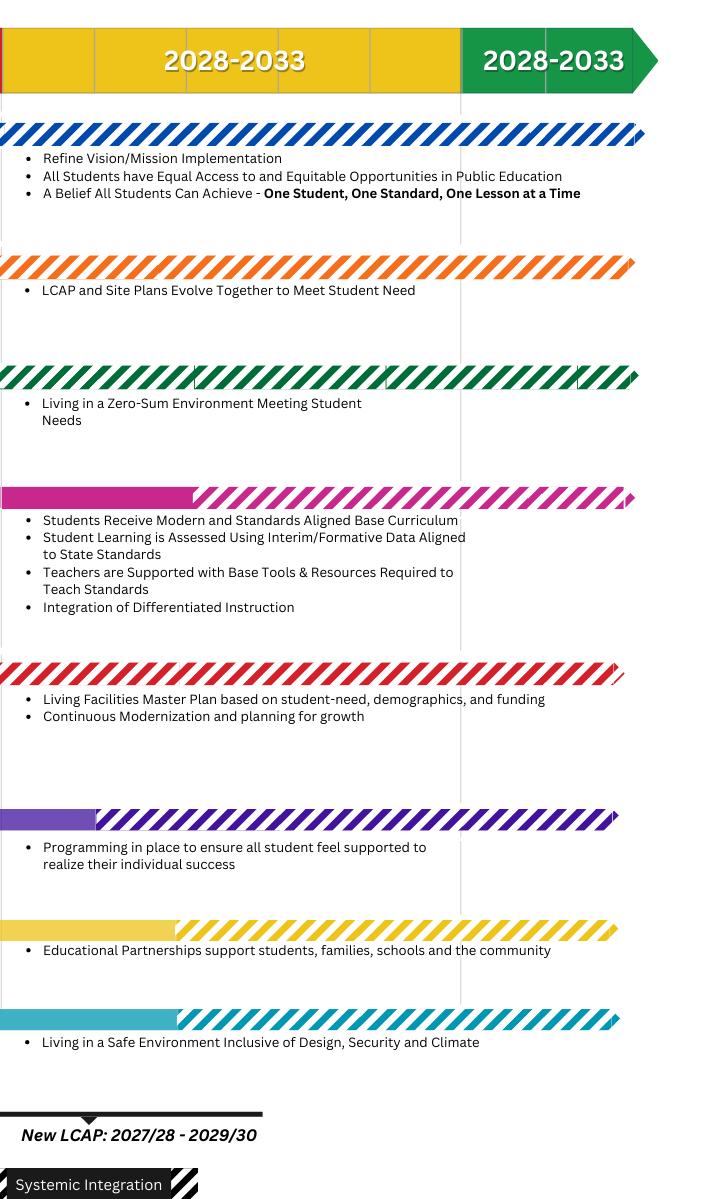
By employing a cycle of refinement, MUSD can continuously assess and improve its systems, programs, and practices to provide the best possible educational experience for its students.
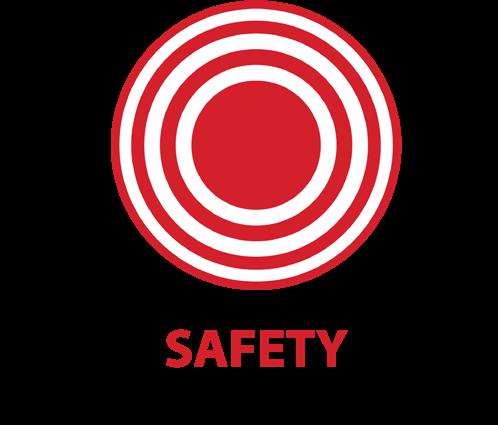
By embracing a collective vision and mission, leveraging data-driven decision-making, implementing a cycle of refinement, and adopting a needs-based budget, MUSD is poised to empower every student to achieve their full potential and succeed in an ever-changing world.
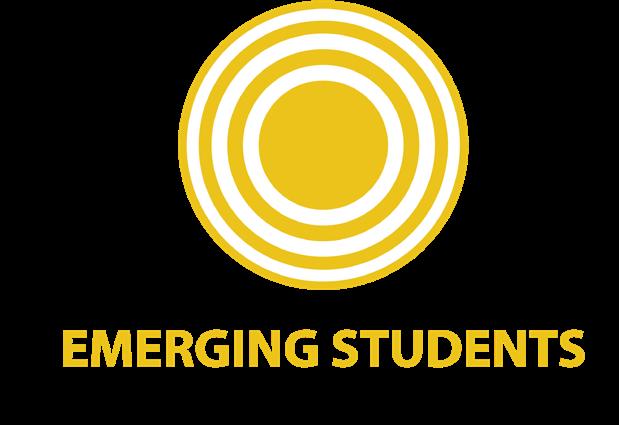
In Manteca Unified, equal access to public education begins with inclusive instruction and equitable distribution of supplies and services.
This year, MUSD has taken significant strides to refine instruction by building capacity with Instructional Leadership teams, Professional Development opportunities, dedicated Professional Learning Communities (PLCs), and re-engaging students through the implementation of cooperative learning strategies.
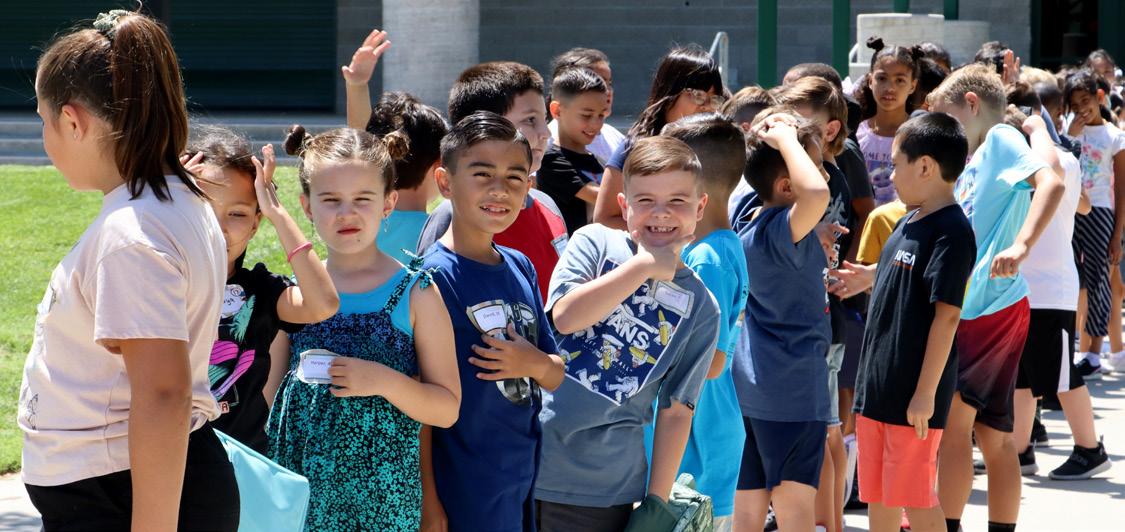
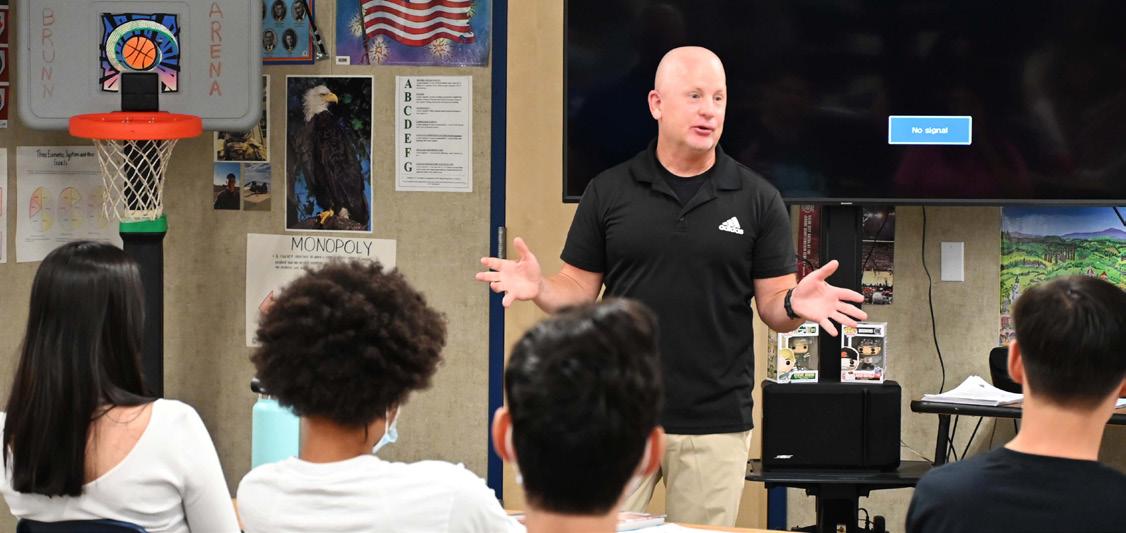
Instructional Leadership teams put in a great amount of work during the 2022-23 school year, with Teachers on Special Assignments coordinating trainings, resources, one-on-one support opportunities, and instructional practice refinement to ensure the best possible instruction for students. Professional Development opportunities were expanded this year, with schools capitalizing on early release (elementary-level) and late-start (secondarylevel) schedules to provide designated times for staff work together within their subject area or grade level. Professional Learning Communities are groups of
educators who collaborate to determine how to best teach students essential standards, which are the core concepts students must achieve by the end of their class or grade level. Teachers identify the essential standards and determine the best instructional strategies to emphasize those areas in their lesson plans with the base curriculum.
Together with their PLCs, teachers use common formative assessments to understand their students’ progress and adjust their instructional methods accordingly. This collaborative approach gives teachers a roadmap for how they can implement instruction moving forward. As we move into the 2023/24 school year, MUSD will continue to foster a sense of urgency and passion in our students to successfully learn essential standards in all content areas.
Cooperative learning strategies, such as Kagan Strategies, are the biggest shift within high school instruction this year. Recognizing the challenges faced by students in the aftermath of the pandemic, educators

are evolving their teaching methods to directly target student needs. This shift in pedagogy is critical, especially postpandemic, when students are struggling more than ever.


These strategies introduce interactive classroom activities, such as “Mix, Pair, Share,” where students are paired with a peer to discuss a certain topic or idea. When students engage with one another, they are thinking and speaking critically, which deepens their learning. These strategies are one way MUSD worked to encourage student voice this year, understanding the effects of the pandemic and knowing we must engage students for an enriching educational experience.
We still have a lot of work to do to expand and refine how instruction looks and feels in the classroom for the modern world, but as we continue to improve practices, we are already seeing synergy within equitable, inclusive instruction for all.
Looking ahead, MUSD will increase personalized instruction – a teaching approach which tailors instruction for each student’s unique needs one standard and one lesson at a time – through refined lesson plans, instructional strategies, and formative assessments as we embark on a new school year.
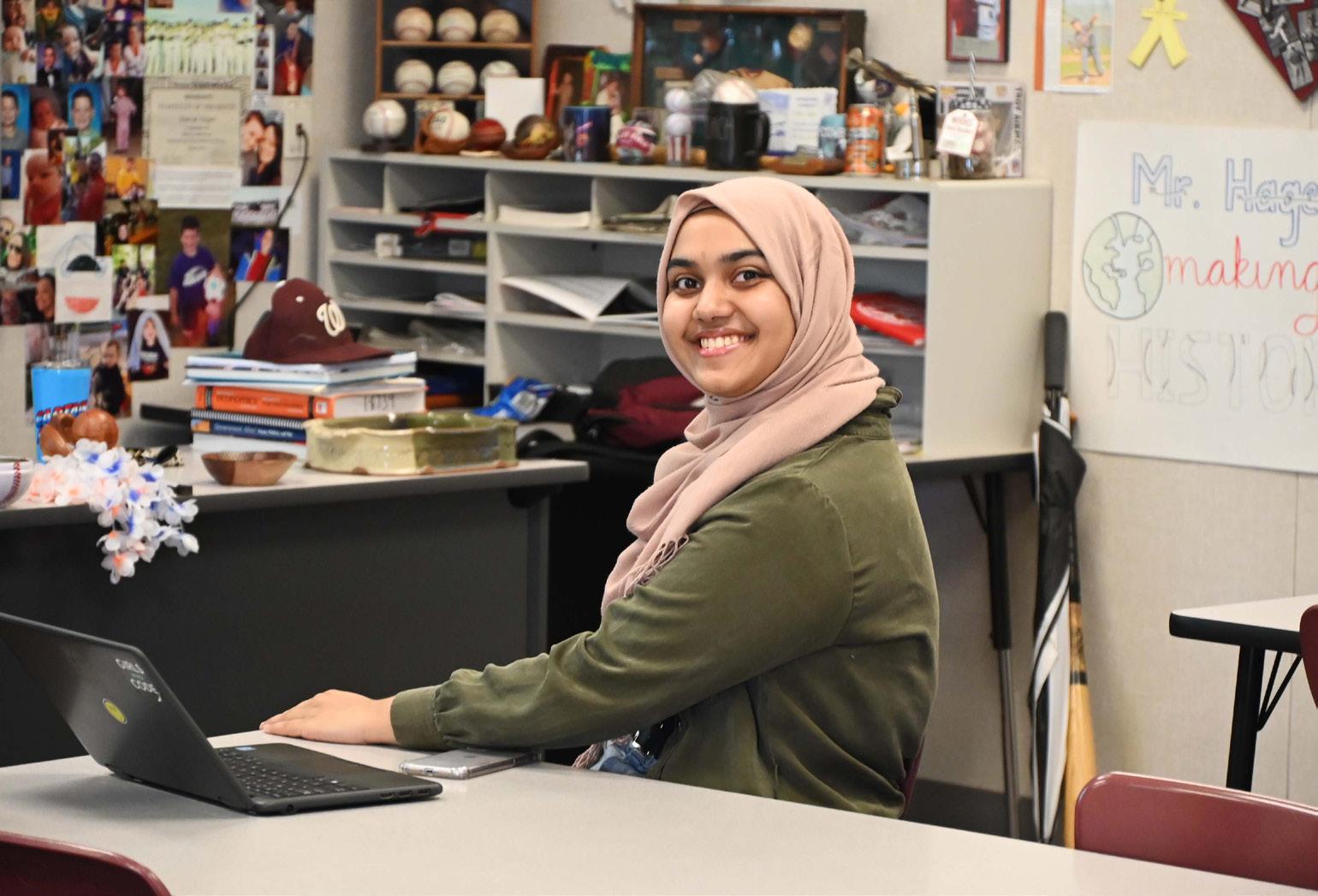
Students’ critical foundation years occur in TK-8th grade as they develop strong skills for success. Ensuring all students can access grade-level standards is crucial, especially during these formative years.
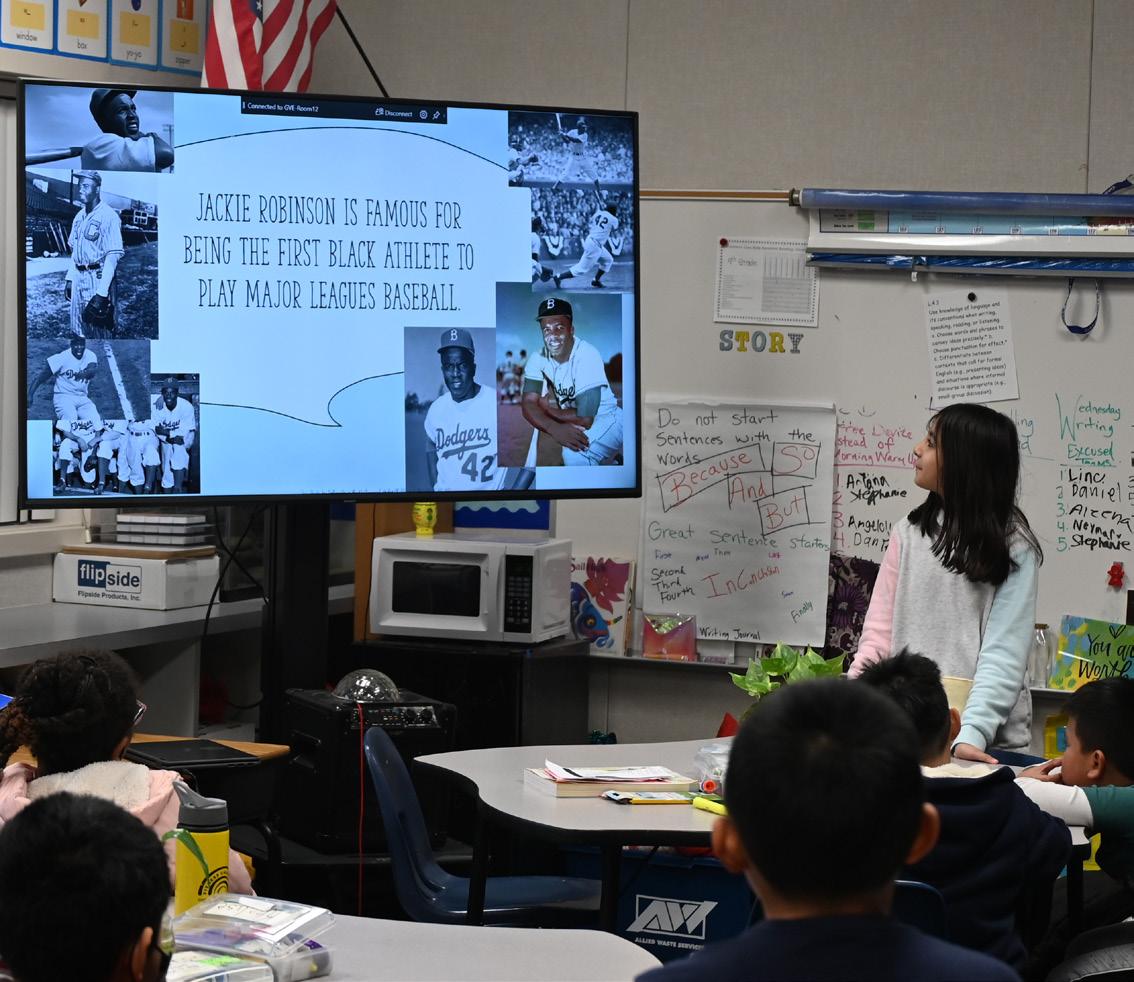
Great Valley Elementary is one school making remarkable strides, going above and beyond to improve student growth as part of inclusive instruction.
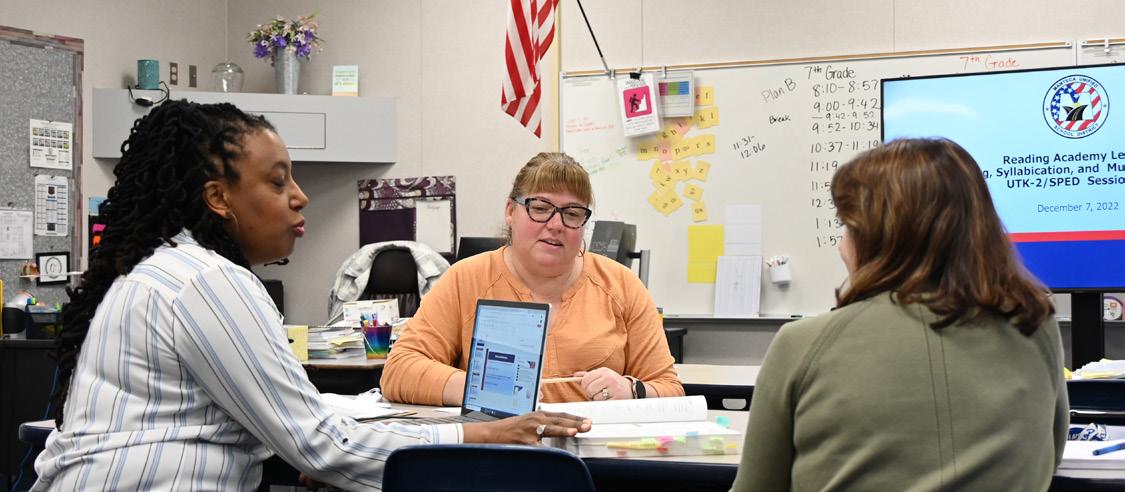
As evidence to their work, a notable achievement this year is Great Valley’s exit from the state’s Comprehensive Support and Improvement (CSI) program, designed to support schools in assisting disadvantaged students in meeting grade-level standards. For the last three years, school leadership, educators, and staff have worked to strengthen instruction through collaboration, data collection, and professional development—ultimately increasing how many students are mastering concepts the first time they are exposed to them.
So far, Great Valley has experienced a 15% increase in the number of students showing growth in reading from Fall 2020 to Spring 2023, and a 26% increase in math.
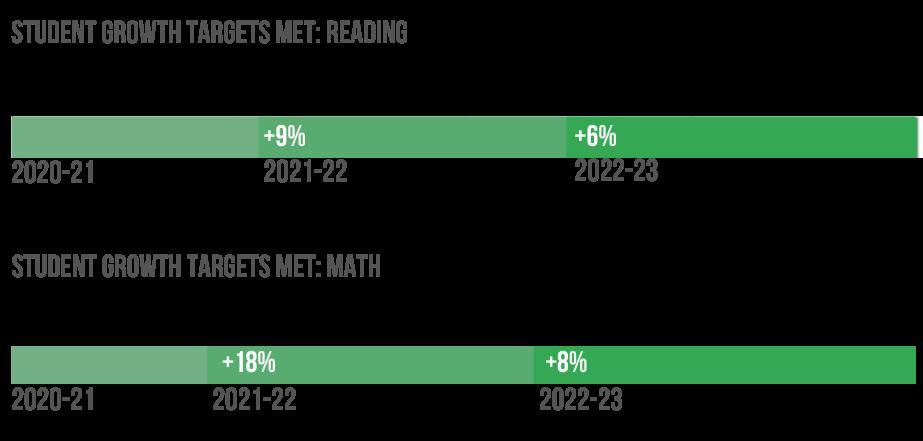
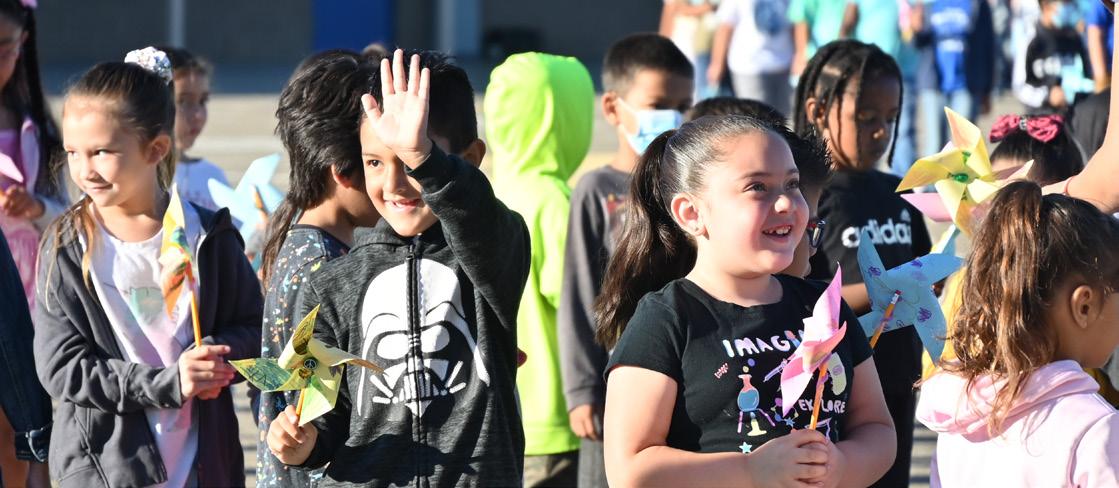
Instructional Specialist Elizabeth Oyarzabal commended Great Valley’s staff for their eagerness to explore and embrace new teaching strategies in their classrooms, “I believe our students are better for it.”
The glue that brings everything together is the strong school culture. While instructional excellence is crucial, it is Great Valley’s cohesive school culture that holds everything together. School staff doesn’t just try to stay on the same page, it’s a part of their nature. There are frequent conversations on the delivery and fidelity of instruction, and staff are comfortable seeking out their peers for guidance.
“They’re not my students or his students. They’re our students. We want them all to succeed. It’s a shared responsibility and we’re always working together,” states teacher Tracy Fulfer.
Moreover, educators are bringing families into the conversation, many using messaging tools like Remind to connect students’ education with a team approach. They work to involve families as frequently as possible. On top of goal setting conferences, Great Valley hosted numerous community events to engage families such as parent nights and literacy nights.
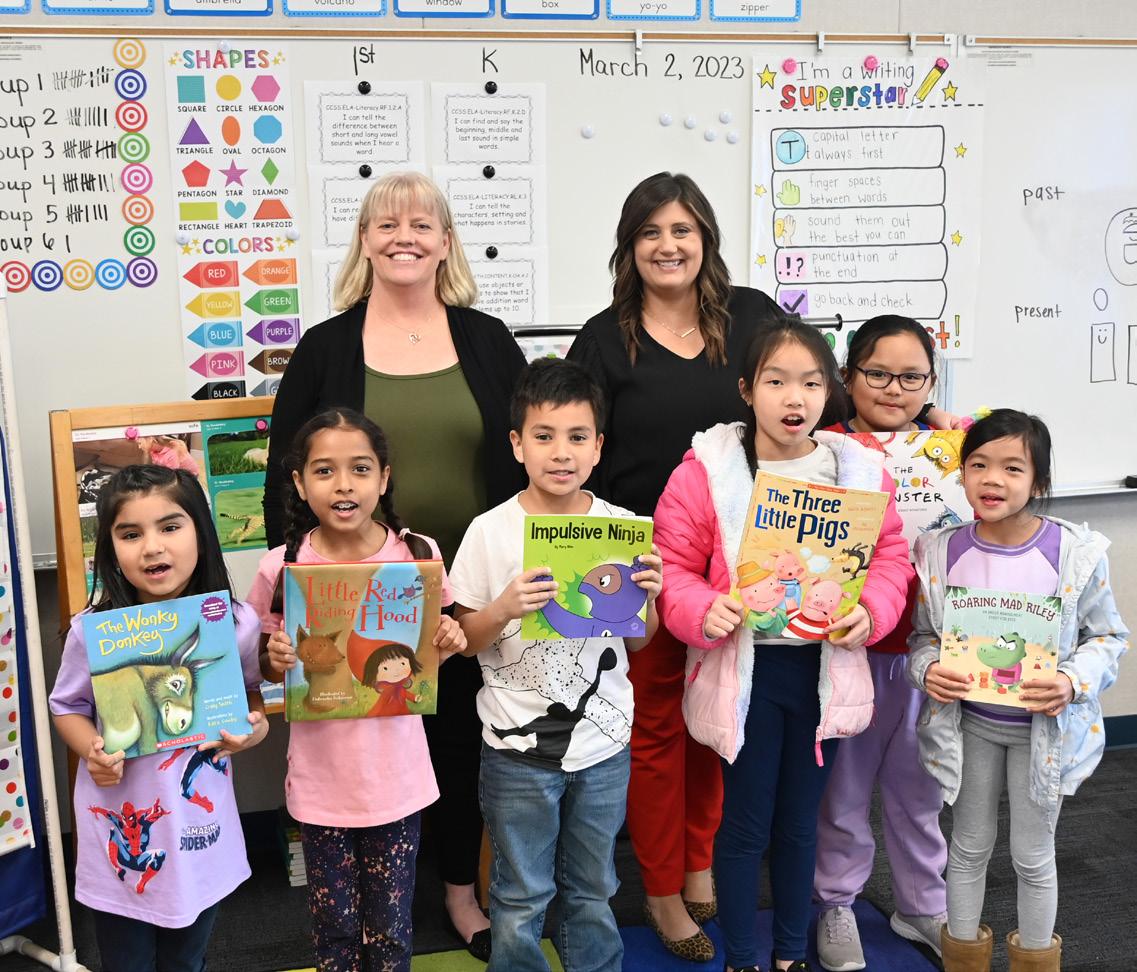
The school also hosted a Parenting Partners program, designed to build capacity within the community. “We want to let parents know that we are here to support them as well,” shares teacher Darin Willett.
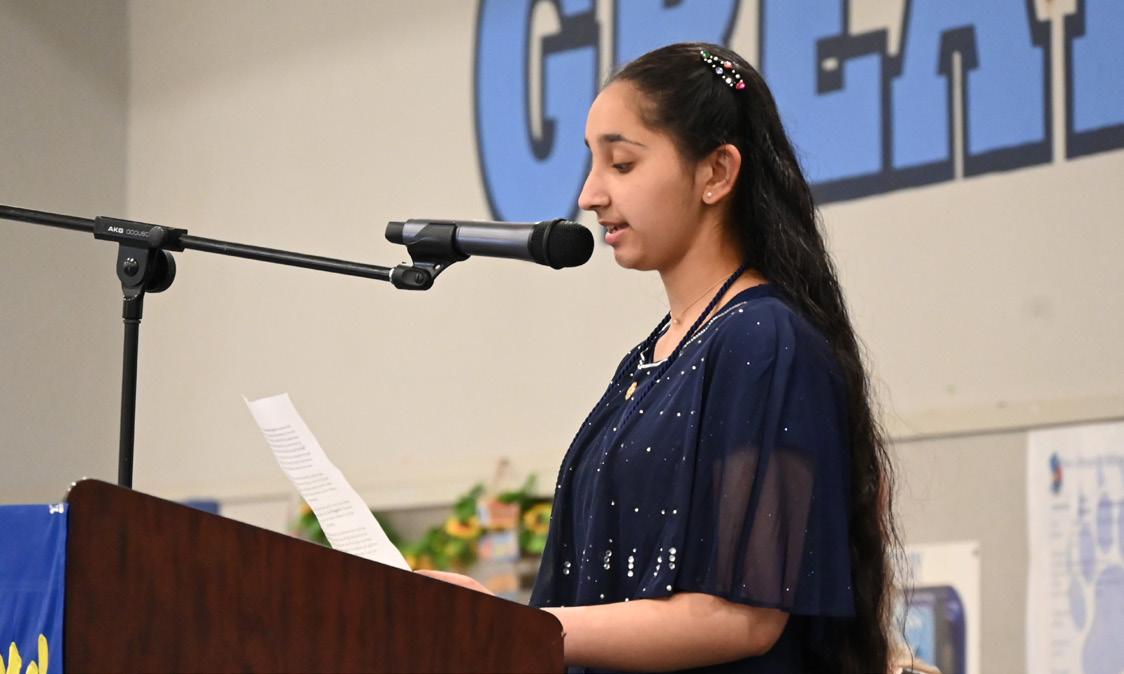
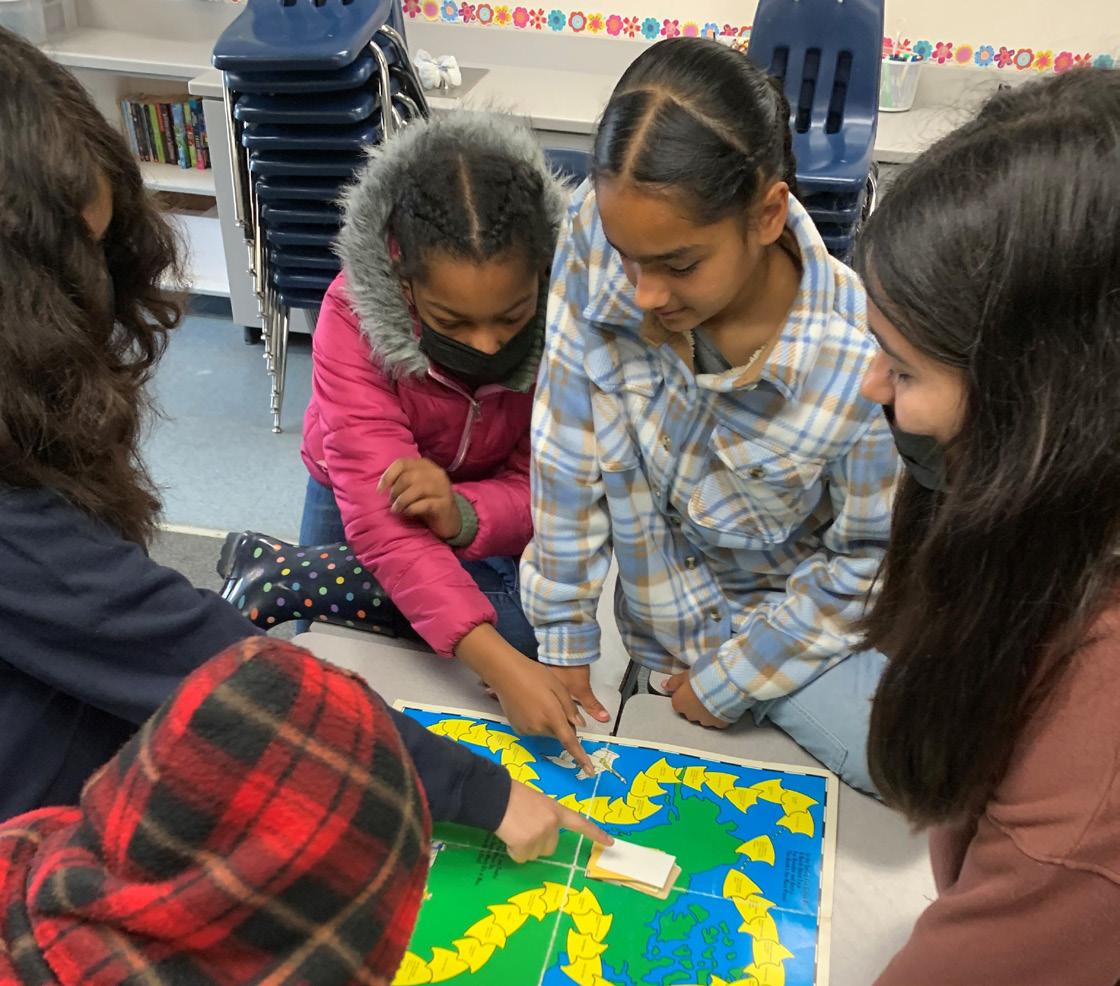
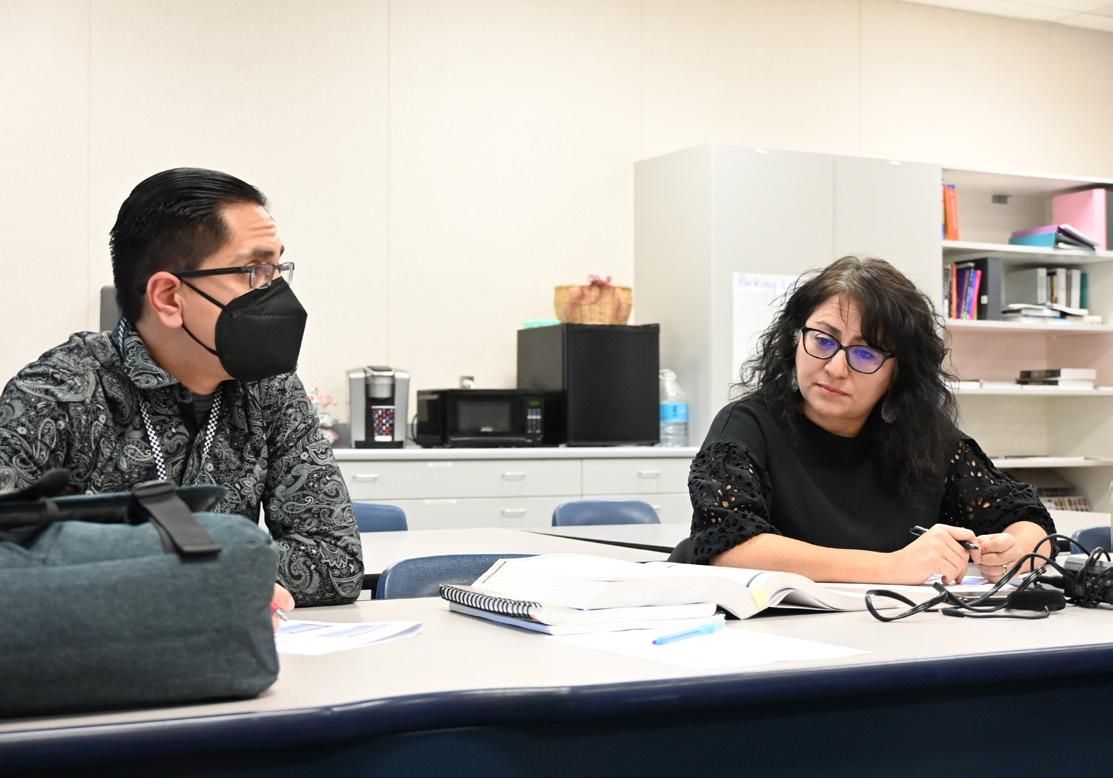
Looking to the future, the school is excited about the future of FUNdations at their site, an early literacy curriculum that not only helps students read, but helps them read sooner. “It’s the first year ever that most of my students knew all their letters and sounds by December,” exclaims Kindergarten teacher Lisa Allan. Learn more about FUNdations on page 18.
The remarkable progress achieved at Great Valley is a testament to the dedication and teamwork of its staff. With a strong school culture that places immense value on shared responsibility and an unwavering commitment to continuous improvement, Great Valley is poised for an exciting 2023-24 school year!
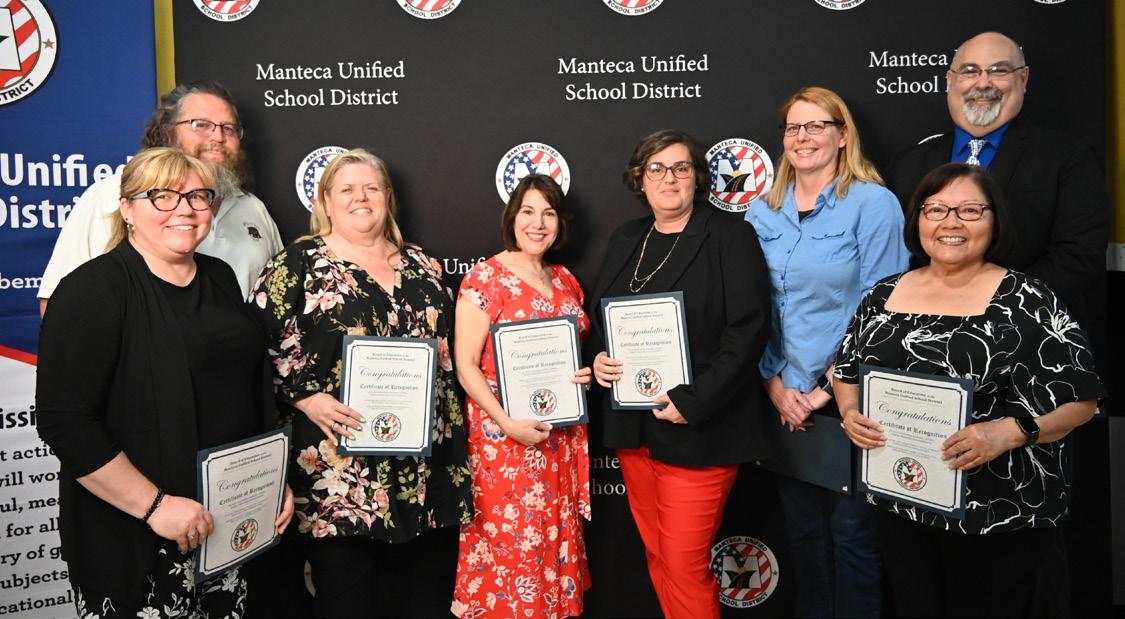
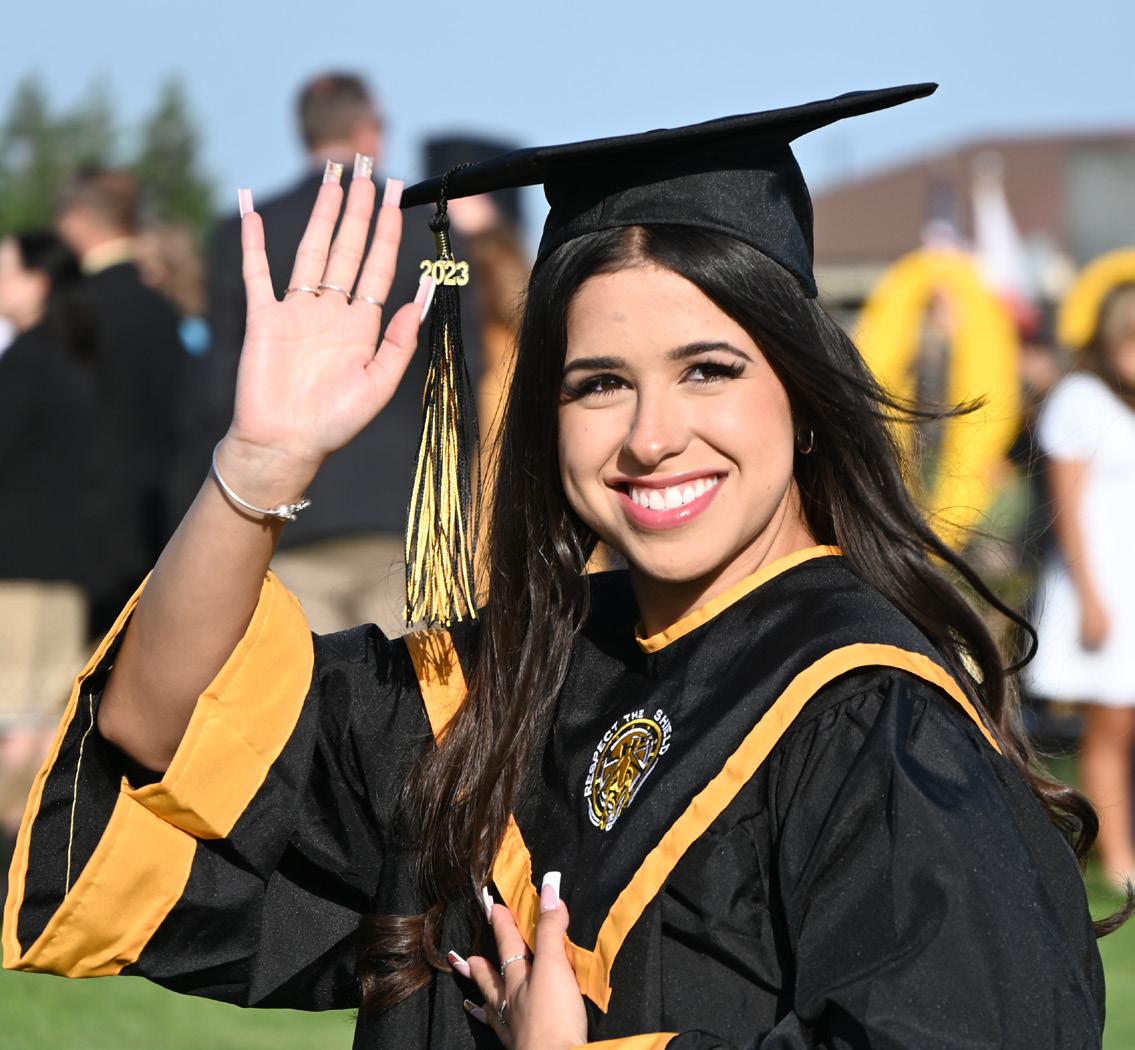
COLLECTIVE RESPONSIBILITY AT LATHROP HIGH SCHOOL
This year, Lathrop High students worked to improve their MAP assessment scores with the knowledge that their learning growth is a partnership.
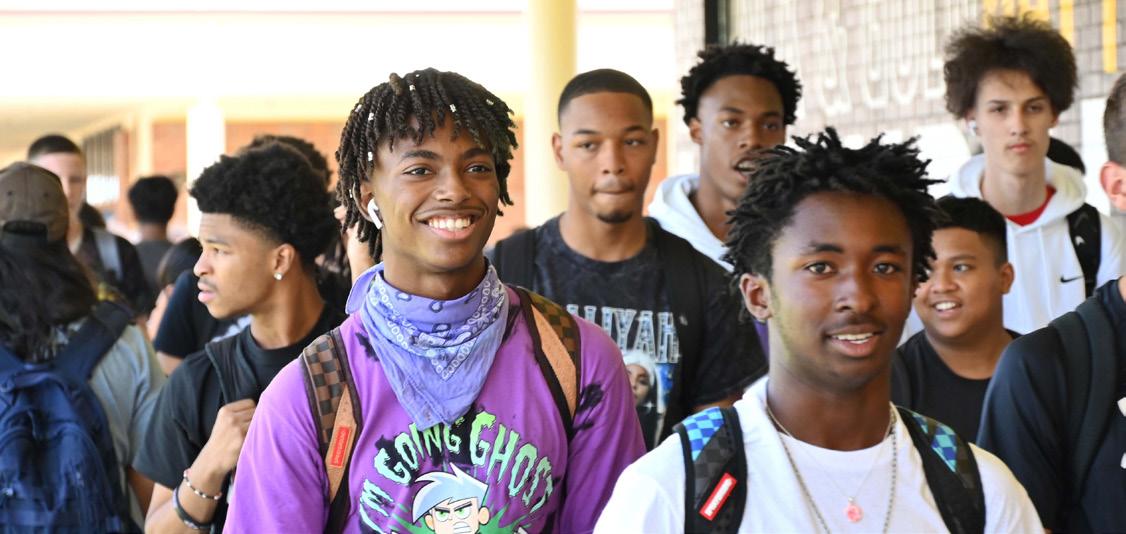
“Our school is rooted in collective responsibility, as both students and staff have critical parts to play to ensure students can succeed,” shares LHS’s interview panel, including retiring Principal Greg Leland, soon-to-be Principal Melissa Beattie, Teacher on Special Assignment Denna Crowe, and Professional Learning Community (PLC) team lead and teacher Kristin Miller. “Our goal is to be 100% transparent with both students and staff about what is expected of them and how we are going to work together to help kids grow.”
Lathrop
MAP data means to encourage them to own their responsibility in their education. “This year was hugely successful, not just because growth numbers improved, but because students took accountability for the essential part they play,” Ms. Crowe shares. From Fall 2022 to Spring 2023, Lathrop High had 747

students improve their MAP Reading scores, and 894 students improve their MAP math scores! Staggeringly, every single grade level exhibited growth in math, which is very rare. These numbers reflect overall school data, with students succeeding far beyond their growth target expectations, 10% in each area since MAP assessments began in Fall 2021.
The panel attributed the overwhelming data metrics as the result of 6-7 years of commitment to refining inclusive instruction, dedicated PLC work, and the partnership between teachers and students who share ownership in education. Hard work and accountability form the backbone of Lathrop High’s school culture, values modeled by all and reflected in the fact that each year,
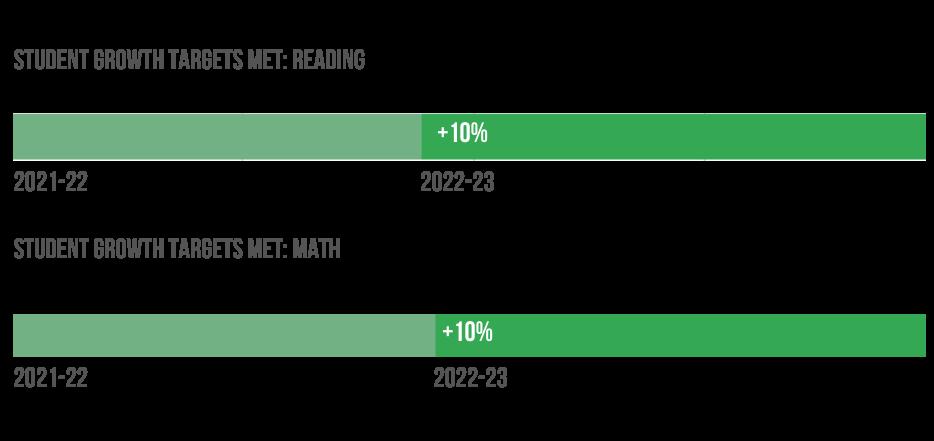
LHS’s numbers have improved. Due to their collective commitment, the school is on track to rise even further in the future.
When students feel supported and cared for, there’s room for endless possibilities. But when you add in a sense of ownership and responsibility from both students and staff, that’s when the magic really happens.
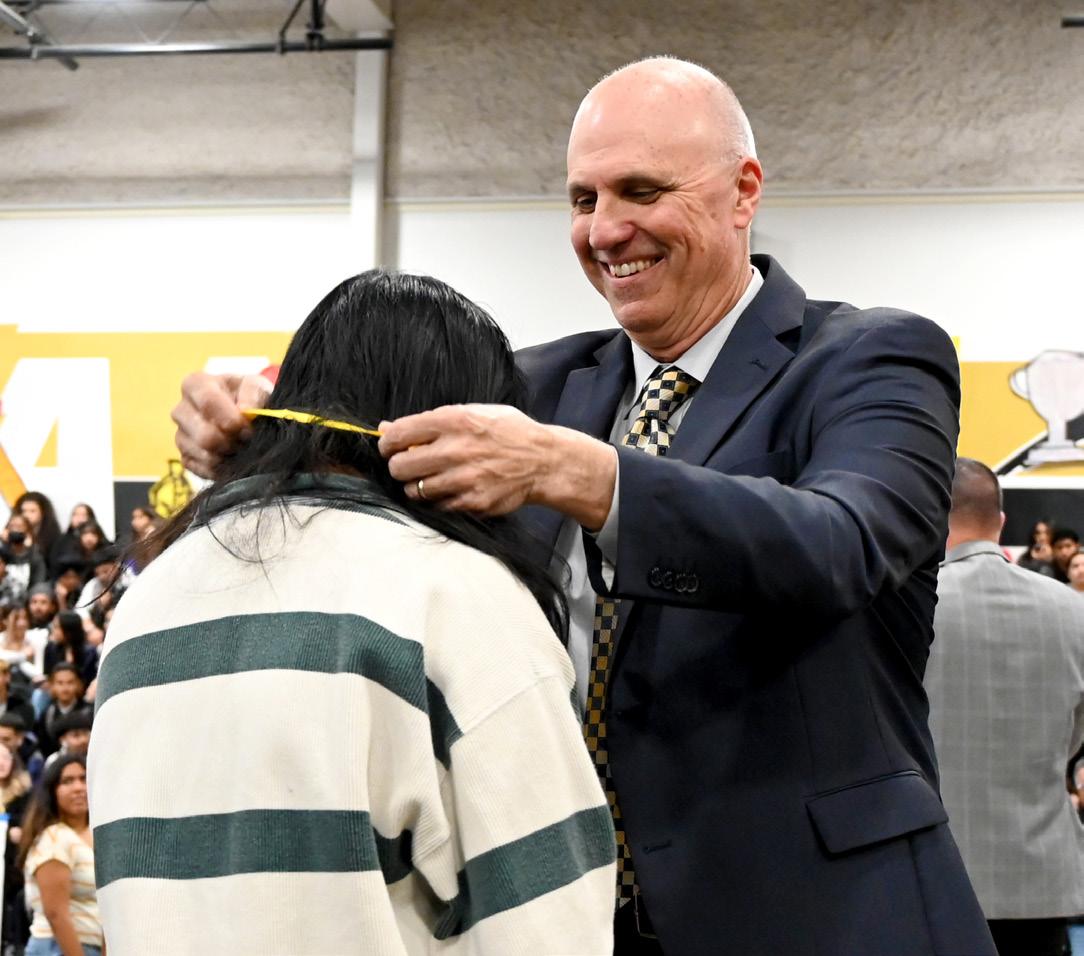
While students must commit themselves to their education to be academically successful, they cannot get there alone. Having a teaching staff that consistently evolves instructional methods to meet the current needs of students is crucial, and this is where LHS truly excels.
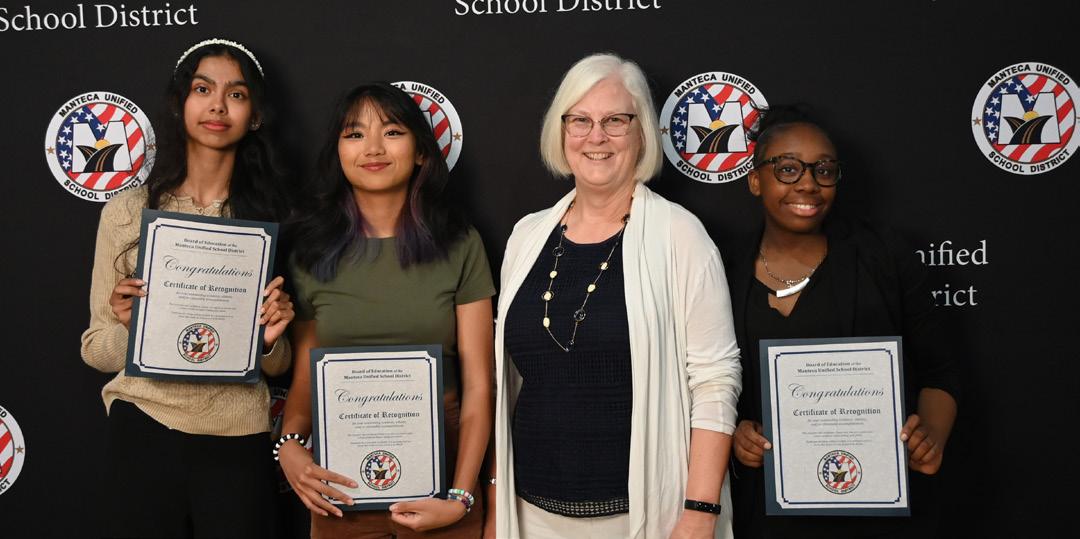
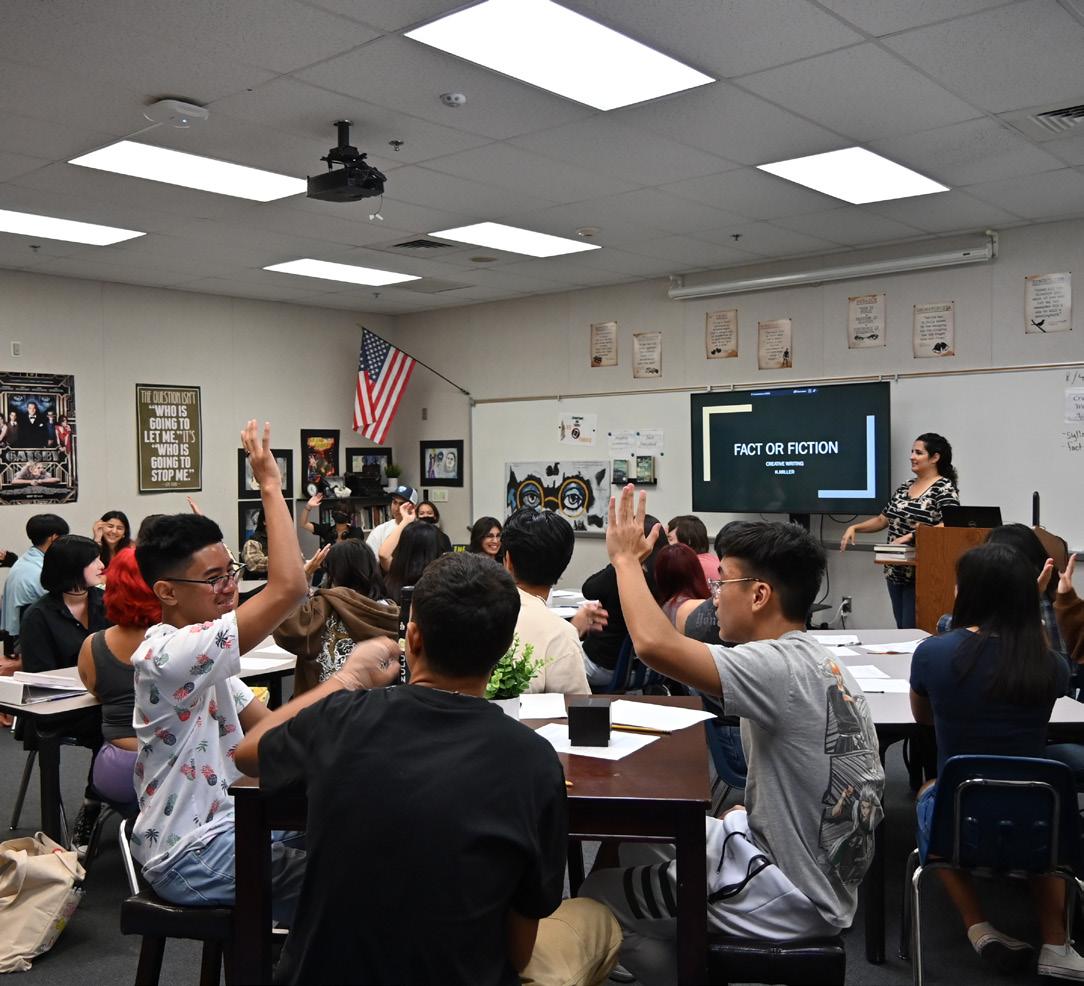
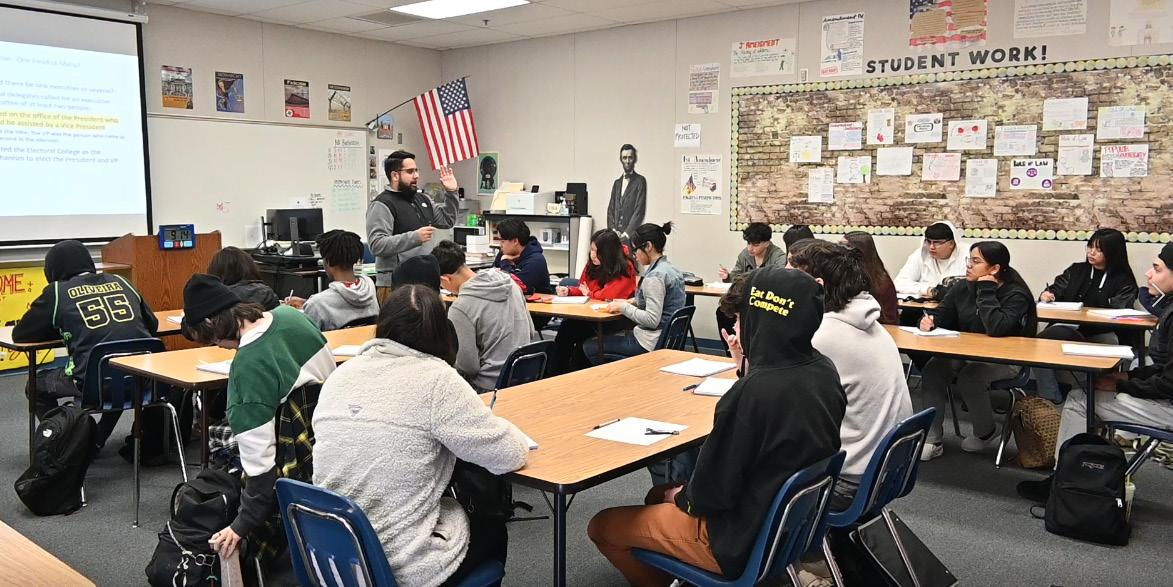
A key way LHS taps into the power of their teaching staff is through PLCs. “Our PLC time is protected and prioritized,” Mr. Leland explains. The administrative team takes teacher collaboration very seriously, utilizing latestart Wednesdays as dedicated PLC time to the greatest extent possible. Luckily, “the PLC system is designed to be a good complement to running a school,” Dr. Beattie shares.
As active student engagement and participation are essential for growth, the LHS staff frequently models engagement strategies in their PLC meetings. “If teachers can see these strategies are easy to implement and effective, they’re more likely to practice them in their classrooms, which benefits students,” explains Ms. Miller. LHS is strategic about their use of engagement strategies, and departments can pick which strategies they want to implement that work best for their content area to maximize success.
The research is clear: a strong foundation for learning in early years sets the stage for success throughout a child’s academic journey and beyond, especially for children with adverse early childhood experiences. This understanding has prompted major investments in early education, with California’s 2022-2023 State Budget committing funding for the expansion of transitional kindergarten and the California State Preschool Program.
In line with this commitment, Manteca Unified School District has introduced a Universal Transitional Kindergarten (UTK) program, making universal prekindergarten a reality for the community. Universal Transitional Kindergarten is a state-funded program that provides early education opportunities for younger children, focusing on early development with an emphasis on literacy, math readiness, play, and socialemotional growth.
In the 2022-23 school year, MUSD offered a blend of UTK and traditional Transitional Kindergarten at 14 school sites, with 325 students enrolled. In the 2023-24 school year, the district is expanding the UTK program to all regions.
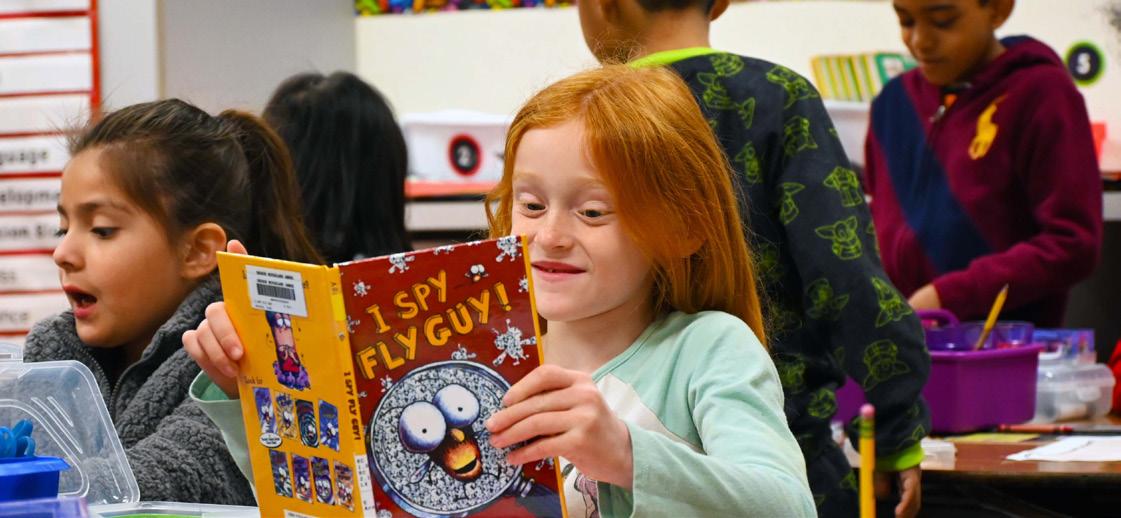
The district’s vision for early literacy aligns the base curriculum, supplemental resources, assessments, and instructional strategies from UTK through 3rd grade. This cohesive approach aims to ensure that all students are reading at grade level by the end of 3rd grade, laying a strong foundation for their future success.
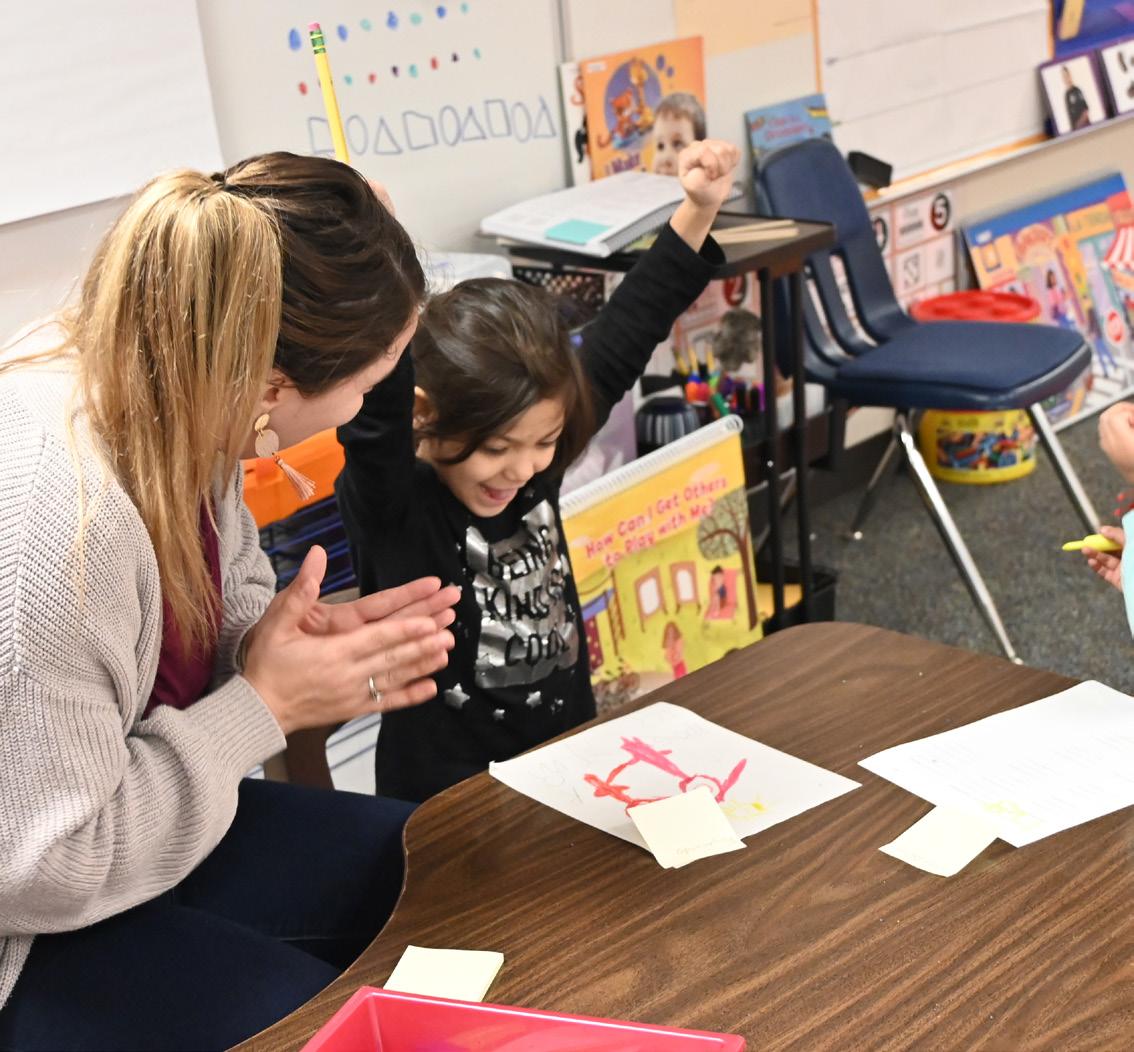
In support of this Vision, MUSD has made major strides this year thanks to instructional practices and tools such as the FUNdations program!
This supplemental reading program, designed for UTK3rd grade inclusive instruction, is focused on areas where students commonly struggle, such as phonemic awareness and word recognition as identified through MAP assessment data. It is a highly structured program that dedicates 30-40 minutes per day to building foundational reading skills. The program is designed to supplement Wonders, the base curriculum for K-6th grade, so all young students can learn the essential skills they’ll need to become successful readers and writers.
This critical programming was first piloted at Nile Garden Elementary, where it addressed learning gaps for our youngest students. With a growing need for literacy
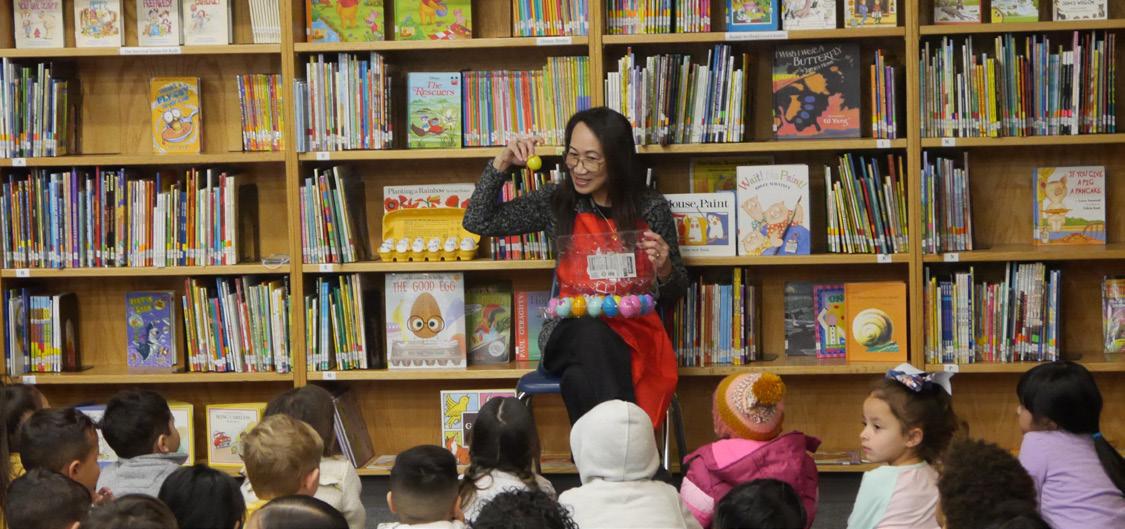
improvement, the program was then piloted in all regions, including at Neil Hafley, Lincoln, Great Valley, French Camp, Golden West, and Lathrop Elementary. During the 2022-23 school year, MUSD decided to expand the program to all elementary schools mid-year. Teachers in transitional kindergarten through 3rd grade are in the process of receiving specialized training, preparing them to effectively implement this program in their classrooms.
The impact is already evident, as MAP scores are beginning to increase in the areas focusing on phonemic awareness. 100% of kindergarten teachers have now completed FUNdations training, so every single kindergarten classroom can benefit from the program beginning August 2023!
Along with hosting FUNdations workshops, Tsehai Russell and Alicia Uecker – two Teachers on Special Assignment – have created videos showcasing MUSD teachers in action, demonstrating how the program has helped further our mission to personalize instruction for MUSD students.

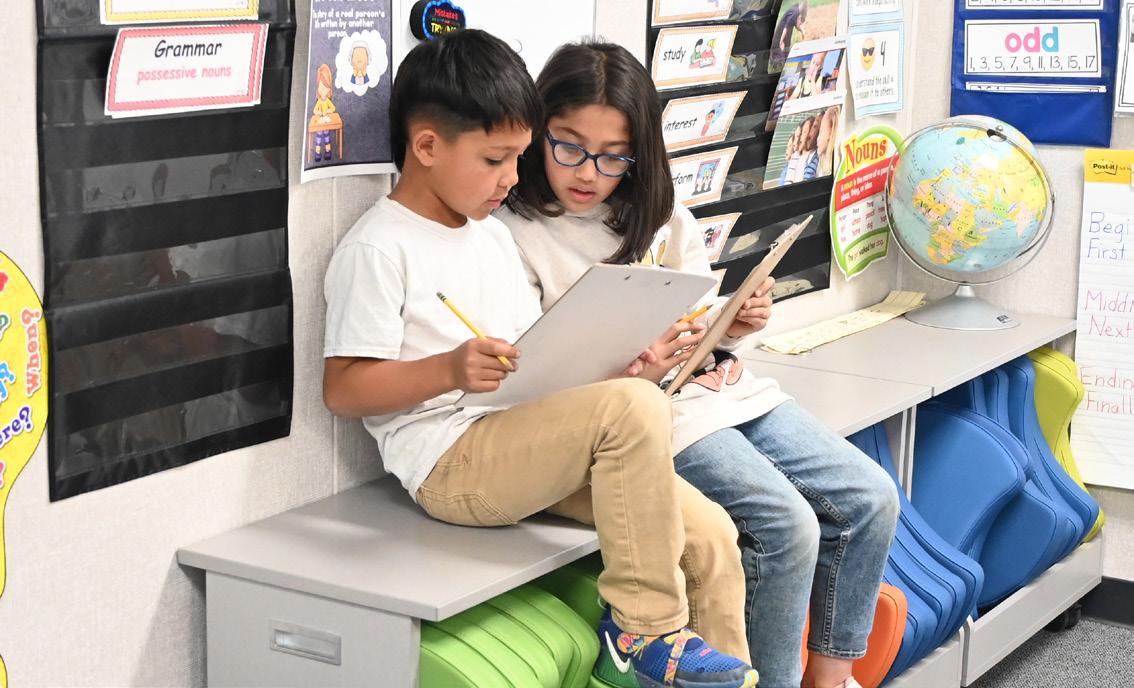
Looking ahead, the 2023/24 school year will give us more accurate data than ever before because students will have the same starting point – the first day of school!
This fall will see further kindergarten refinement to ensure all teachers are on the same page and can successfully instruct two unique groups: students who attended preschool or a TK program and those who are brand new to the school environment. More so than ever, kindergarten teachers will have to provide instruction which serves each student’s unique learning needs, achieved through small group work.
As we expand early learning opportunities, parents will continue to be educational partners as parent engagement is integral to the success of our youngest students.
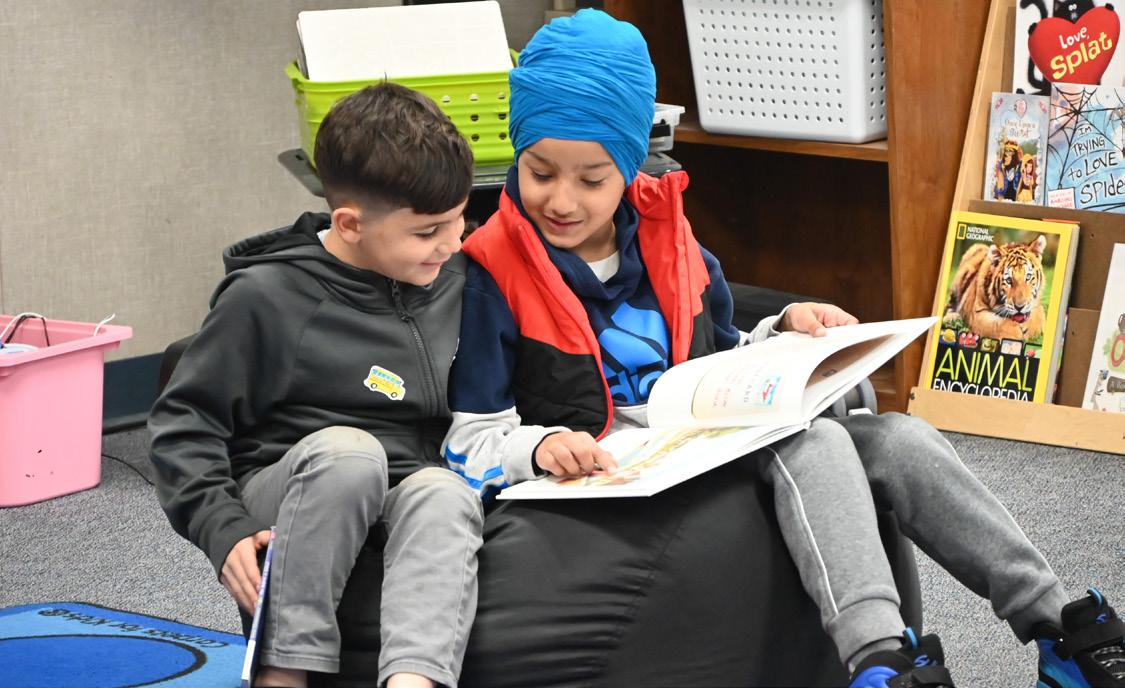
In MUSD, recognizing the significance of providing students with diverse learning opportunities that lead to being “College and Career Ready” is at the heart of our educational vision. Career Technical Education, or CTE, is a district program that embodies this philosophy which offers students the chance to specialize in a field of interest through career-focused courses and vocational training options. With an array of available CTE pathways such as Agriculture, Health Careers, and Fashion & Interior Design, MUSD is committed to equipping students with the skills and knowledge necessary for success.
With five high schools and multiple rigorous CTE pathways, Director of College & Career Readiness, Amanda Peters dedicated this year to refining and strengthening the CTE program. Through Pathway Alignment Workshops, Peters and her team worked closely with CTE instructors and industry professionals to further develop and align the CTE program with state college entry requirements. These efforts led to a more seamless structure for students who want to follow a career and college ready pathway from start to finish.
This year 1,200 students completed a CTE pathway and 94 students finished the year as Supercompleters
Read about one Supercompleter’s journey on page 19.
The alignment ensured most CTE courses satisfied A-G requirements, which are specific courses high school students must complete to be eligible for admission to the University of California (UC) and California State University (CSU) systems. Jannette Price, MUSD’s A-G Coordinator, worked with academic counselors to make more CTE courses compliant with A-G requirements. For example, students taking Sustainable Agriculture Biology can fulfill a required life science class. There are currently 50 A-G aligned CTE courses.
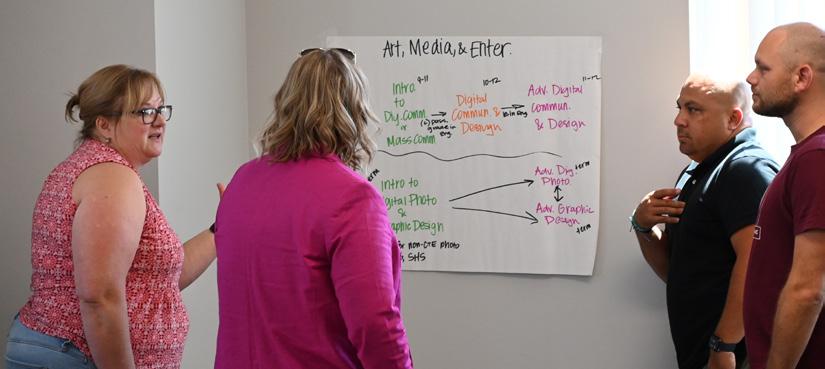
These efforts ensure that students pursuing a college degree no longer have to choose between exploring their interests and completing college prerequisites. Regardless of their chosen path, MUSD students are well-prepared for both college and the workforce.
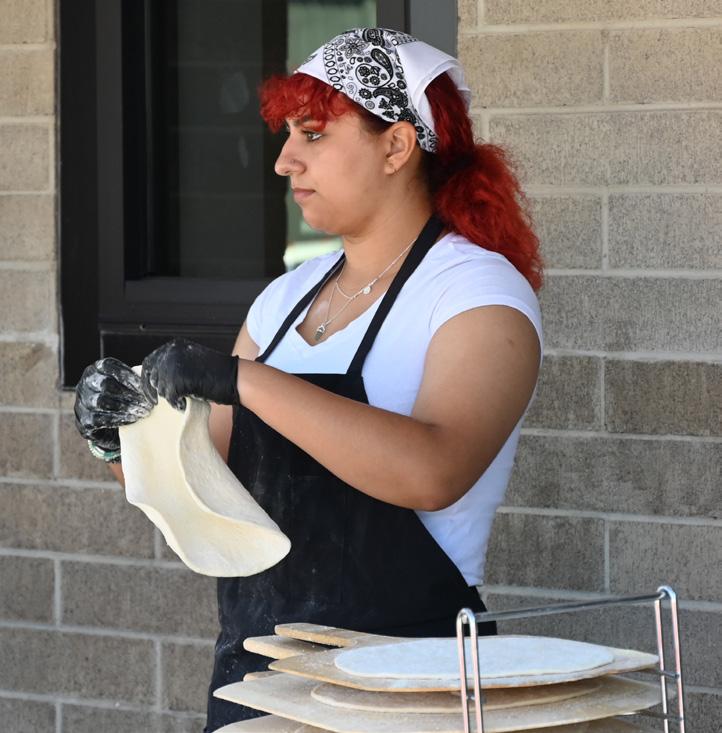
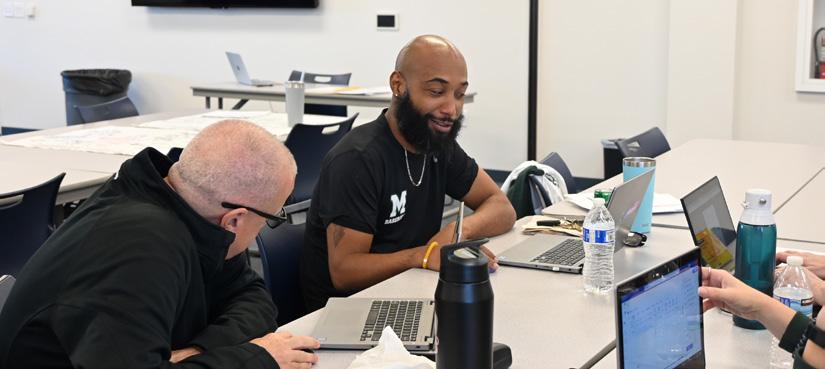
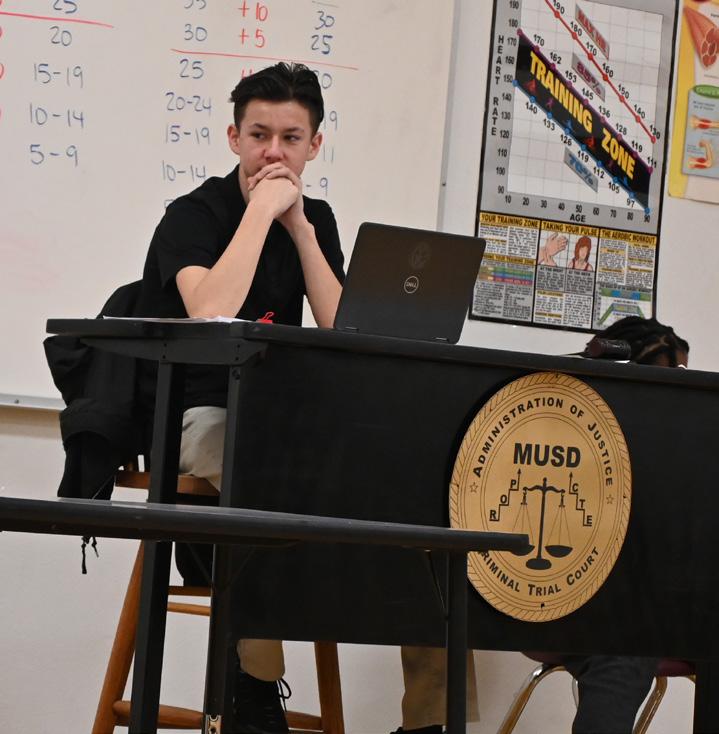
“We’re emphasizing the ‘and’ in College and Career Readiness,” shares Peters.
“What do you want to be when you grow up?” For as long as she can remember, Rayana Ladd felt destined for healthcare. So, as an eighth grader, when she discovered Manteca High School offered a Heath Careers Pathway, joining was a no-brainer.
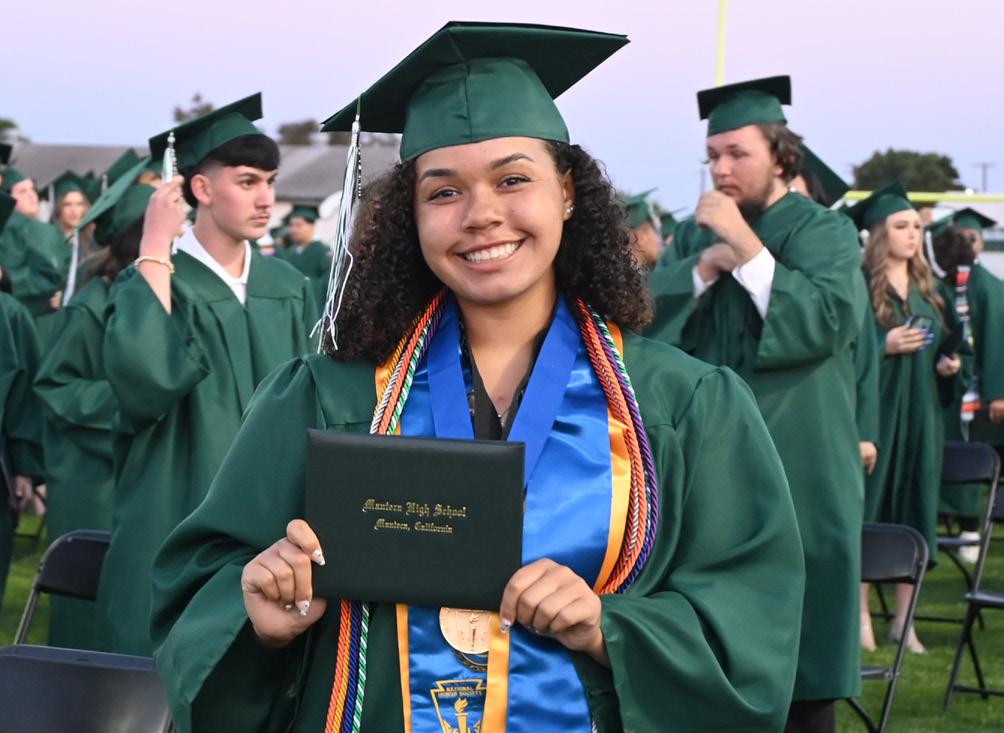
“It’s something I’ve always wanted to do since I was little,” she says. “It was what I would write on papers in the second grade. ‘What do you want to be when you grow up?’ It was always a doctor; I just never knew what type of doctor.”
On top of her regular academic classes, Rayana spent four years in the program learning things like medical terminology and nutrition. By her junior year, she was working alongside nurses, doctors, and technicians who gave her invaluable advice and on-site experience.
Cheryl Behler, a CTE instructor and Licensed Vocational Nurse, has taught and mentored Rayana from her first day at Manteca High. “She knew coming in freshman year that this is where she belonged, and she has blossomed in the program,” Ms. Behler shares.

Ms. Behler educates her students on all facets of the healthcare industry, from communication styles to patient care and essential skills such as taking vitals and blood pressure. Students then take these skills out into the world.
The foundational skills students learn in CTE courses allow them to figure out what they like and don’t like before college, saving students time and money spent on technical training or college.
“They learn day-to-day dealings with everything that happens in a health care facility - the good, the bad, the ugly,” shares Behler.
This year Rayana was named a CTE Supercompleter for finishing 300 hours in the Health Careers pathway, receiving top marks in her capstone class, and completing at least 50 volunteer/work hours in the healthcare industry. She also placed 2nd in Career Development at the HOSA–Future Health Professionals State Leadership Conference.
Her journey doesn’t stop here, though. After graduating in the top 10 of her class, Rayana will attend the University of Southern California this fall to study Human Biology. She credits her CTE experience with helping her narrow down what she’d like to do one day, likely a career in a fast-paced environment working with children.
“There is no stopping her,” explains Behler. “I believe she will be in the healthcare industry, and she will be extremely successful.”
Manteca Unified School District works to promote the social-emotional health and wellness of all students and staff, as well as assist students in overcoming mental health-related barriers to learning by connecting them to available resources within MUSD and in the community.
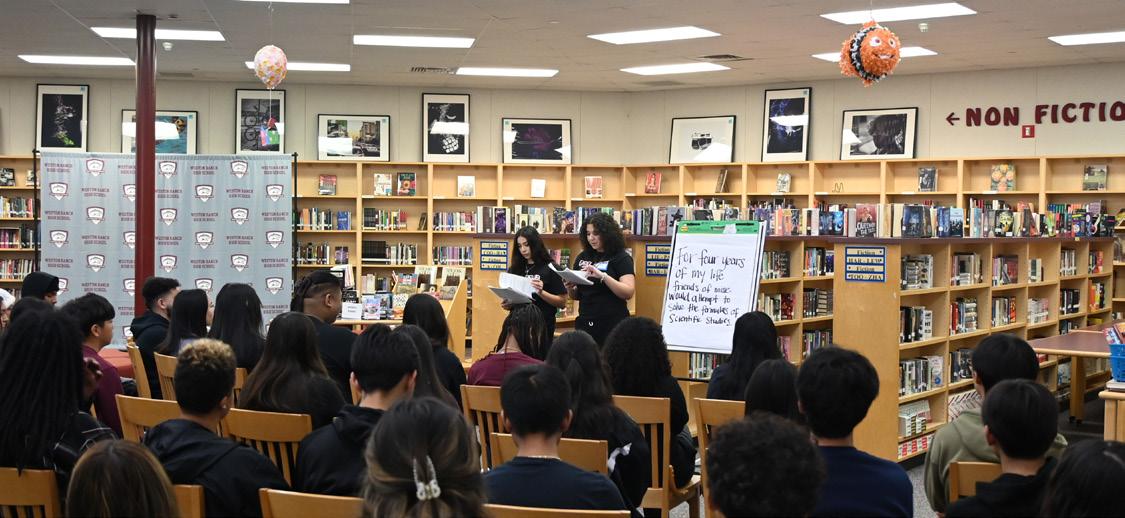
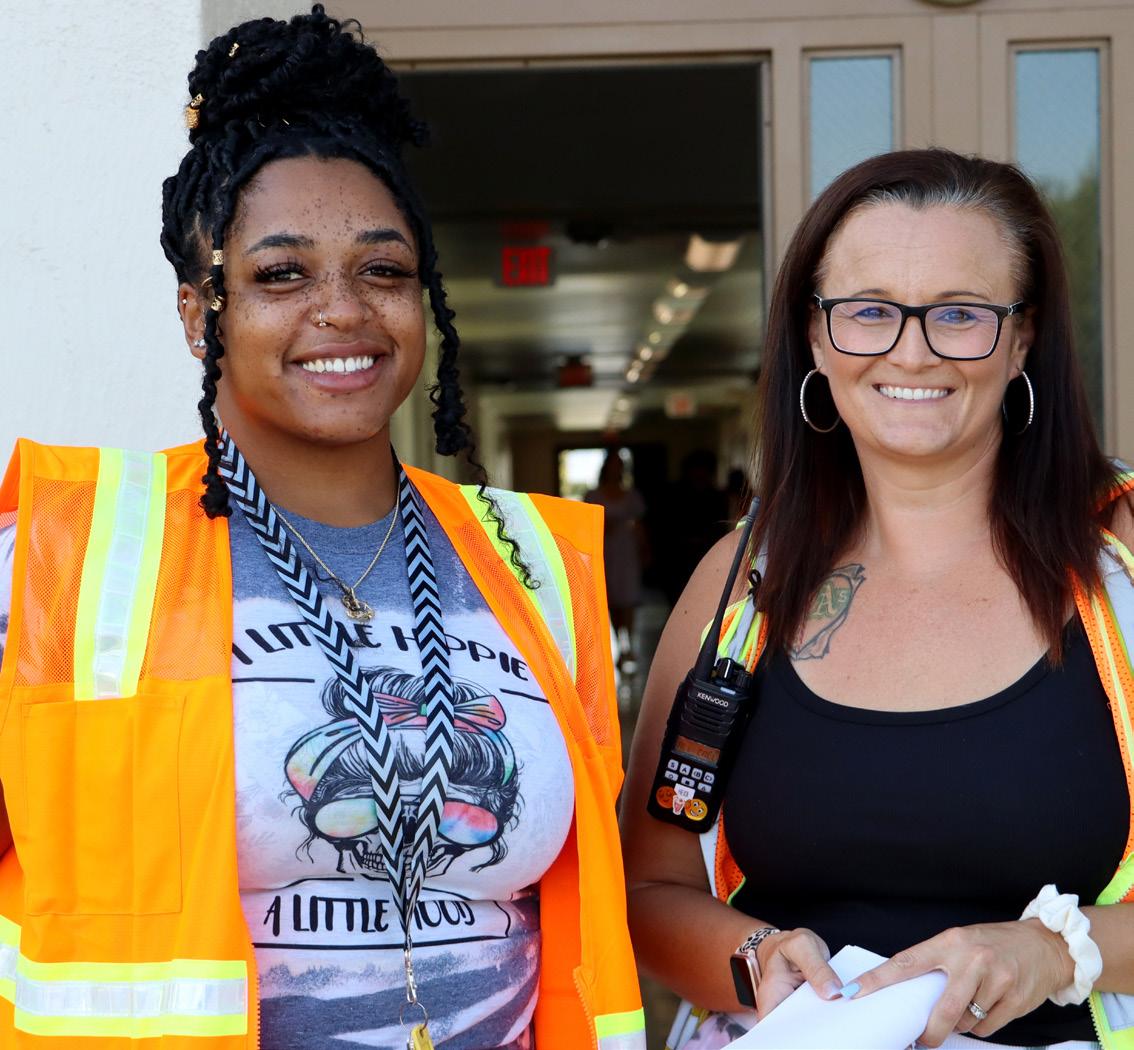
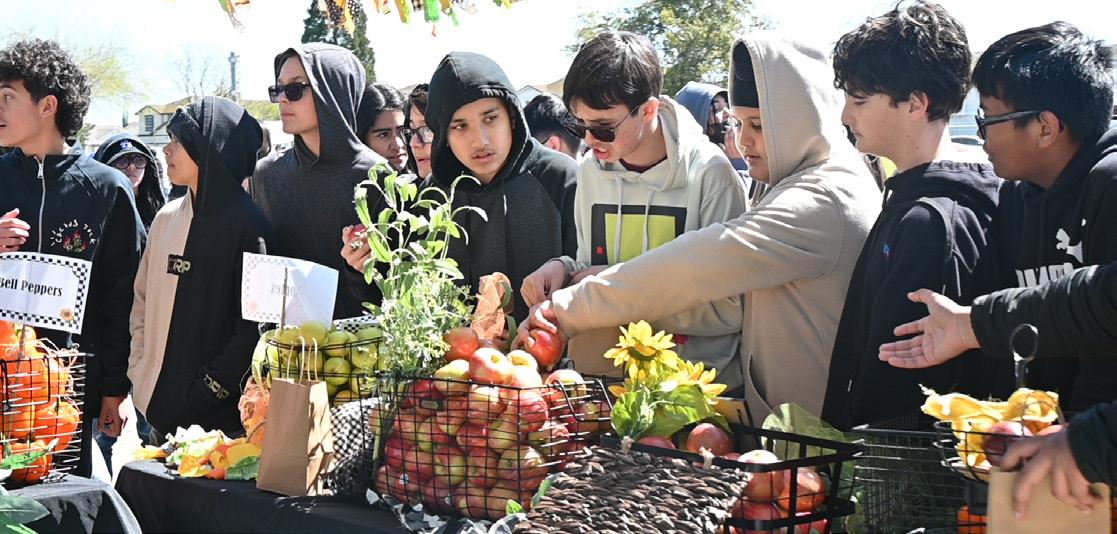
The district utilizes a base social-emotional learning (SEL) curriculum for high school and TK-6th grade students. While not all schools implemented the curriculum in the past year, the district is committed to universal adoption during the upcoming 2023-24 school year. There were designated SEL Teachers on Special Assignment this year who worked to coordinate wellness opportunities and fun events for staff in addition to 2 district-wide professional development days with an SEL focus for both certificated and classified staff.
MUSD’s positive behavior program (PBIS) started in 2014 with the goal of improving student outcomes, reducing exclusionary outcomes, and improving teacher outcomes. School teams, comprising both classified and certificated staff, collaboratively analyze school data to
make informed decisions which prioritize student wellbeing.
The program places great emphasis on cultivating a positive school culture, with values such as responsibility, respectfulness, and safety at the forefront. As of June 2023, 99% of MUSD schools are in some stage of integrating PBIS, whether currently in training or full-scale implementation. Notably, six elementary schools within MUSD received state recognition for their outstanding PBIS program during the 2022/23 year, including August Knodt, French Camp, George Komure, Lincoln, New Haven, and Walter Woodward!
MUSD’s commitment to student support and well-being extends to its dedicated team of school psychologists assigned to schools throughout the district. These professionals have expertise in learning, mental health, and behavior, providing guidance and strategies to general education teachers and school teams at all tiers when existing strategies are not meeting the needs of the student.
Through identified student need, MUSD engages thirdparty agencies to offer counseling services to ensure comprehensive social-emotional support.


The District has implemented additional counseling services such as Valley Community Counseling of San Joaquin County (VCC) to equip each school site with counselors who bridge relationships between students and adults. Counselors help address truancy issues, crisis intervention, student academic success, children’s mental health, and concerns related to child abuse or neglect.
MUSD also offers wraparound services to provide districtwide support to students referred for behavioral issues. This intensive counseling service is structured around one-on-one work with both students and their families and creates opportunities for consistent effort and progress monitoring.


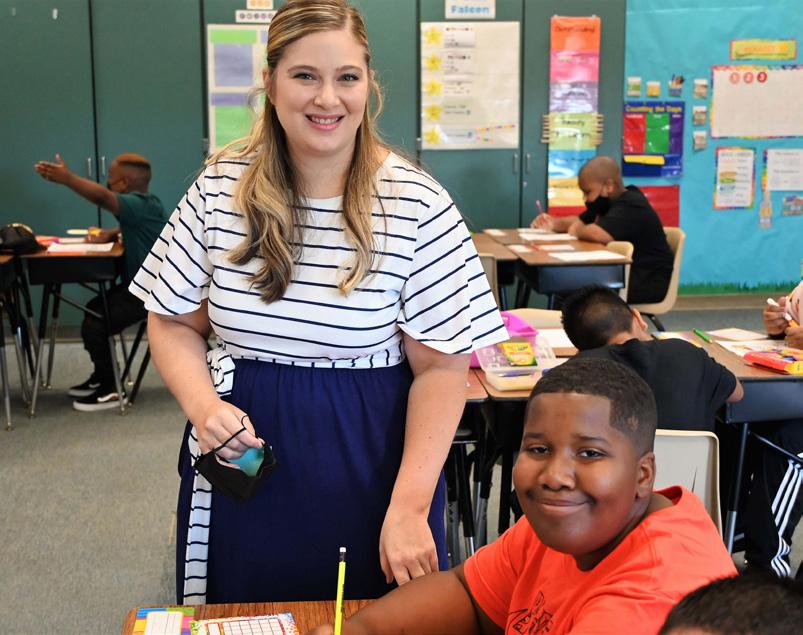
In Manteca Unified, the increased focus on positive behavior at school is helping combat barriers to learning by nurturing a culture where students consistently feel seen, heard, and valued by the trusted adults around them. This shift in strategy led to a transformative program which not only promotes positive behaviors but also serves as a catalyst for student motivation and academic success.
At its heart, MUSD’s positive behavior program aims to create school environments that empower students to thrive.
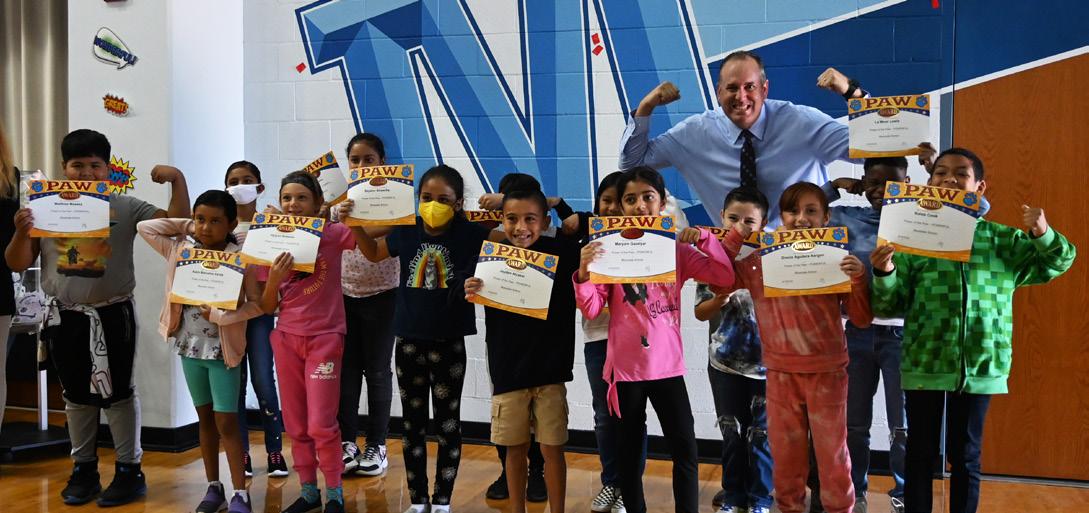
In every elementary school, a uniquely branded positive behavior program is in place. At Mossdale Elementary, their Power of the Paw program is woven into the fabric of their campus. From the playground to the classroom, vibrant signs reinforce the program’s core values, while students are celebrated with Paw Coins for embodying one of the school’s 5 promoted behaviors: Powerful, Preventative, Positive, Peaceful, Problem Solvers.
“Every student, every day, has the opportunity to have their good behavior recognized,” shared Vice Principal Jeremy Brooks.
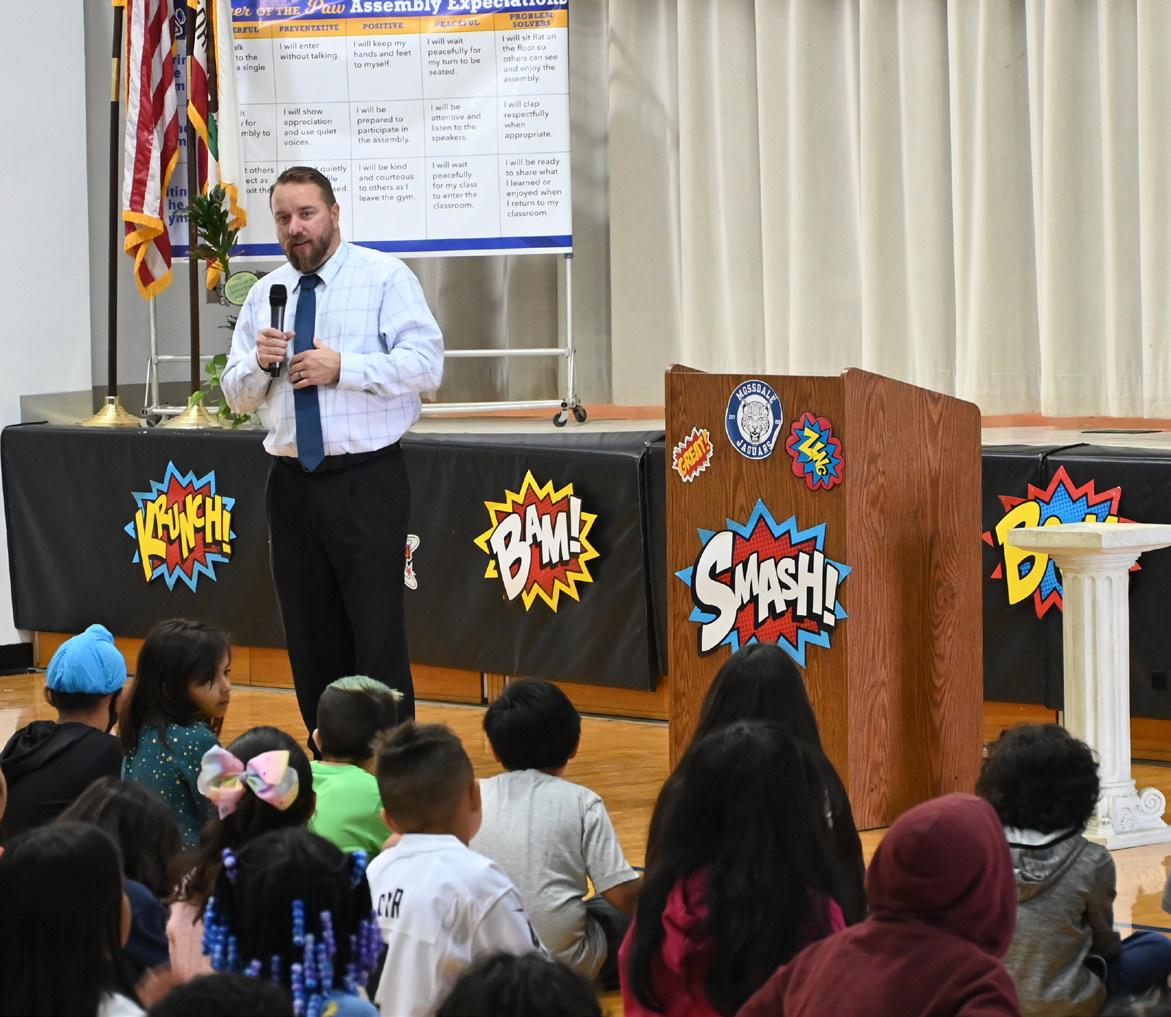
Brooks leads Mossdale’s program alongside a committee comprised of staff members, students, and parents. Together, they share a collective vision of “creating a place where students feel safe, supported, and can learn.”
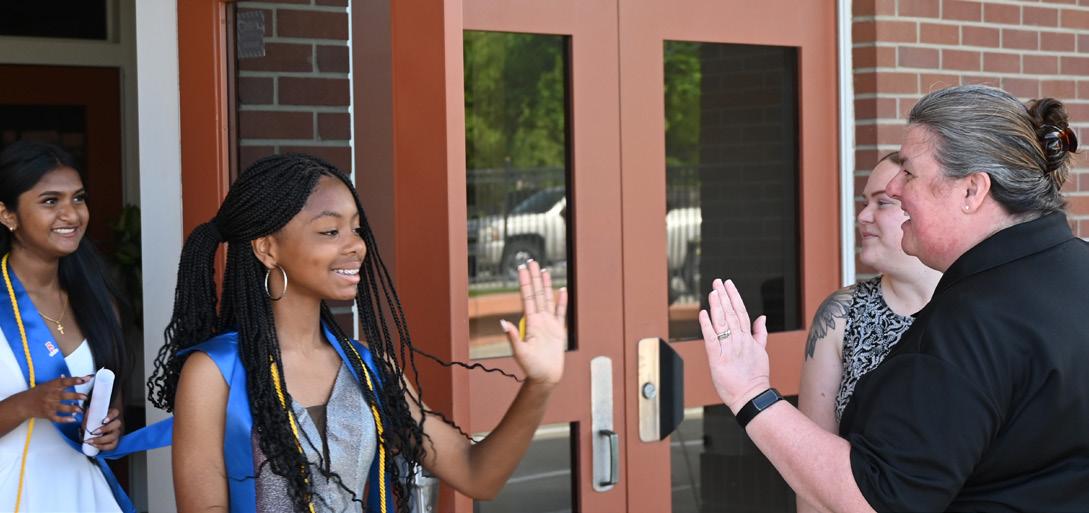
Through the unwavering commitment of the school’s committee and the consistent efforts of Mossdale staff, the program is effectively implemented, yielding positive impacts on student behavior.
While it may be challenging to quantify the number of behavioral issues prevented by the Power of the Paw program, Mossdale’s team is confident they are on the right path. Over the past year, the school has experienced lower rates of chronic absenteeism and suspension compared to the district average, a testament to the program’s efficacy.
By analyzing data on behavior incidents, including their occurrences and the grade levels of students involved, Mossdale Elementary can identify patterns and develop targeted interventions and incentives. This data-driven approach allows the school to think innovatively and proactively address behavioral challenges.
“We’re not perfect and we have our fair-share of challenges, but we have a system to think outside the box and address issues head-on,” said Principal Anthony Chapman.
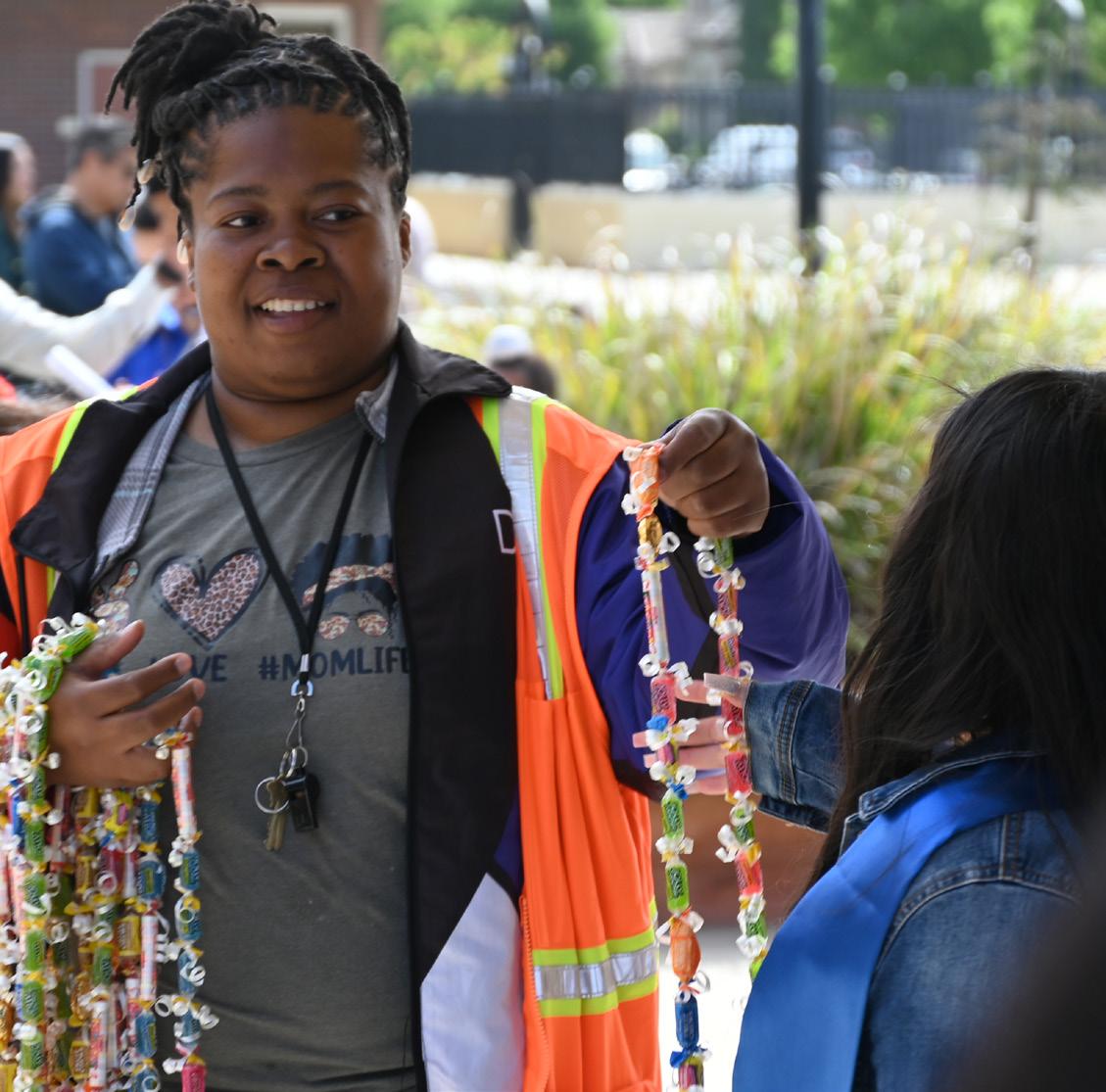
“The Power of the Paw” helps cultivate a positive and inclusive school climate, transforming education into a collaborative effort between students, staff, and parents.
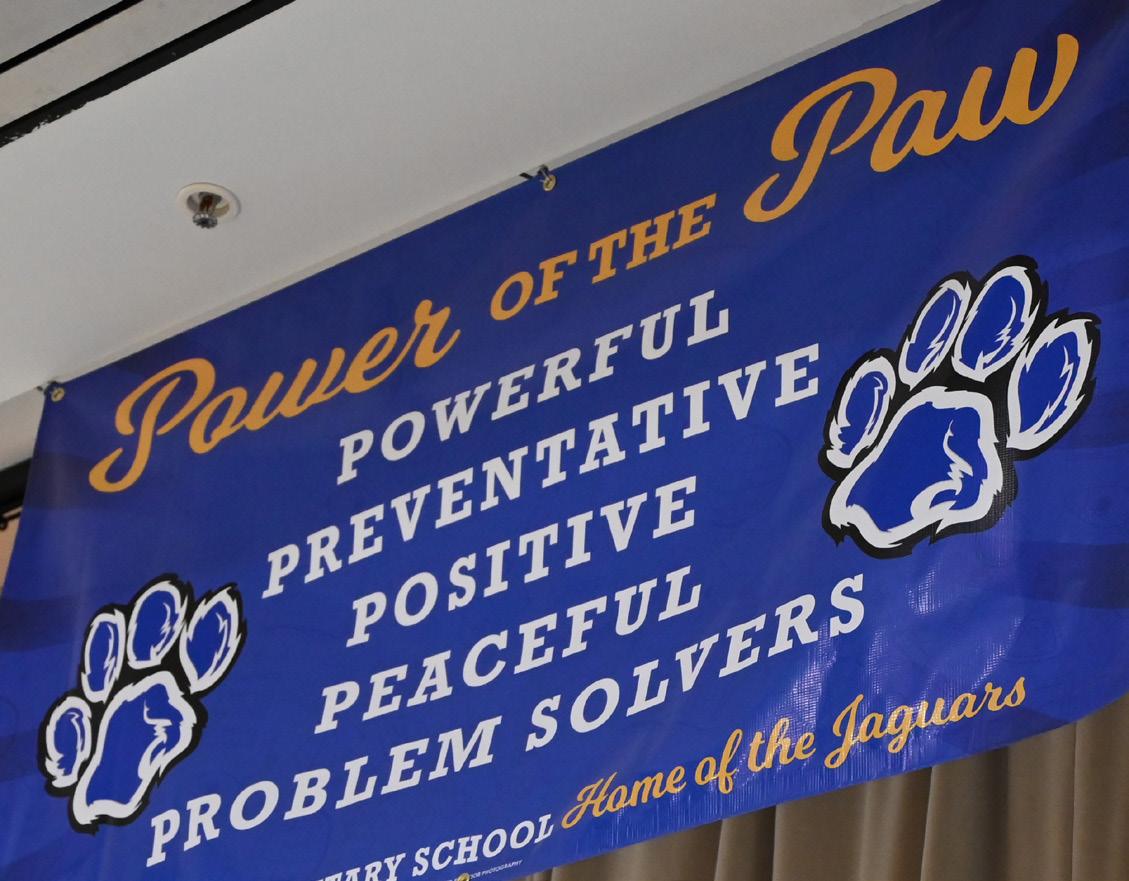
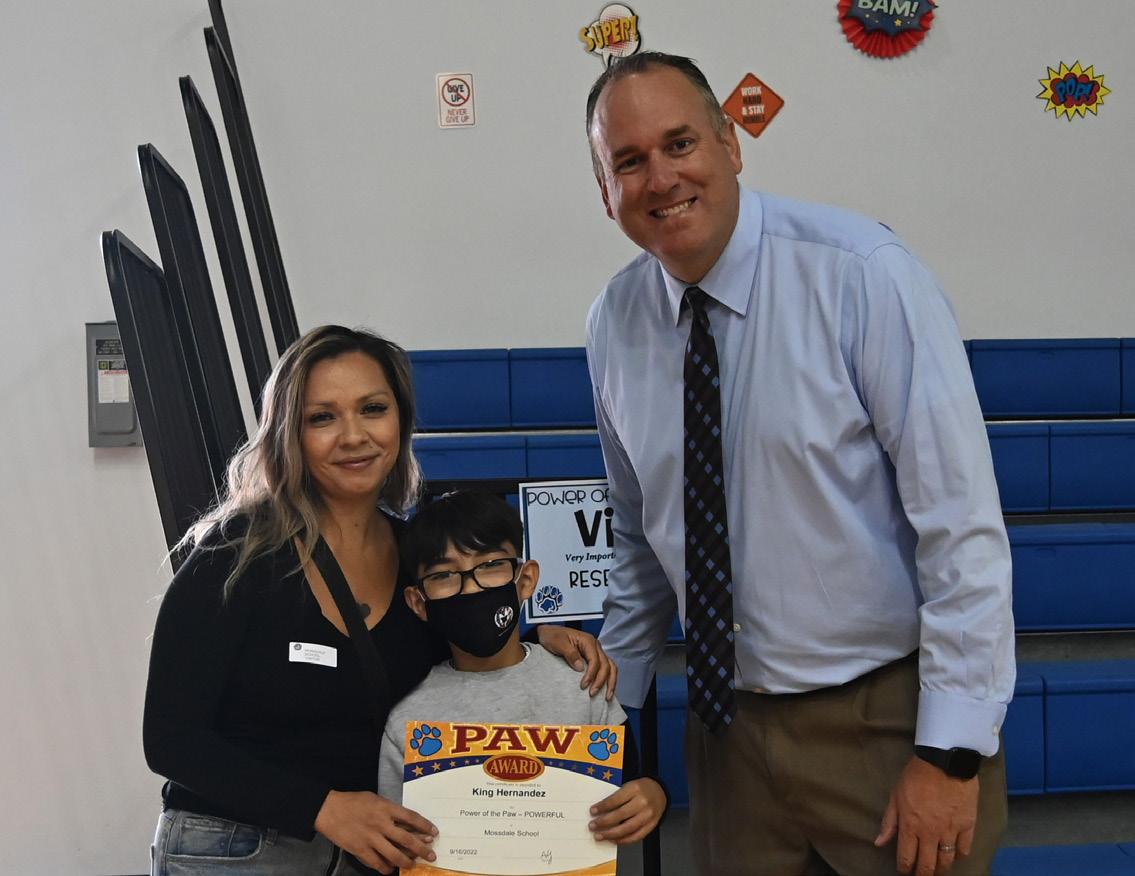
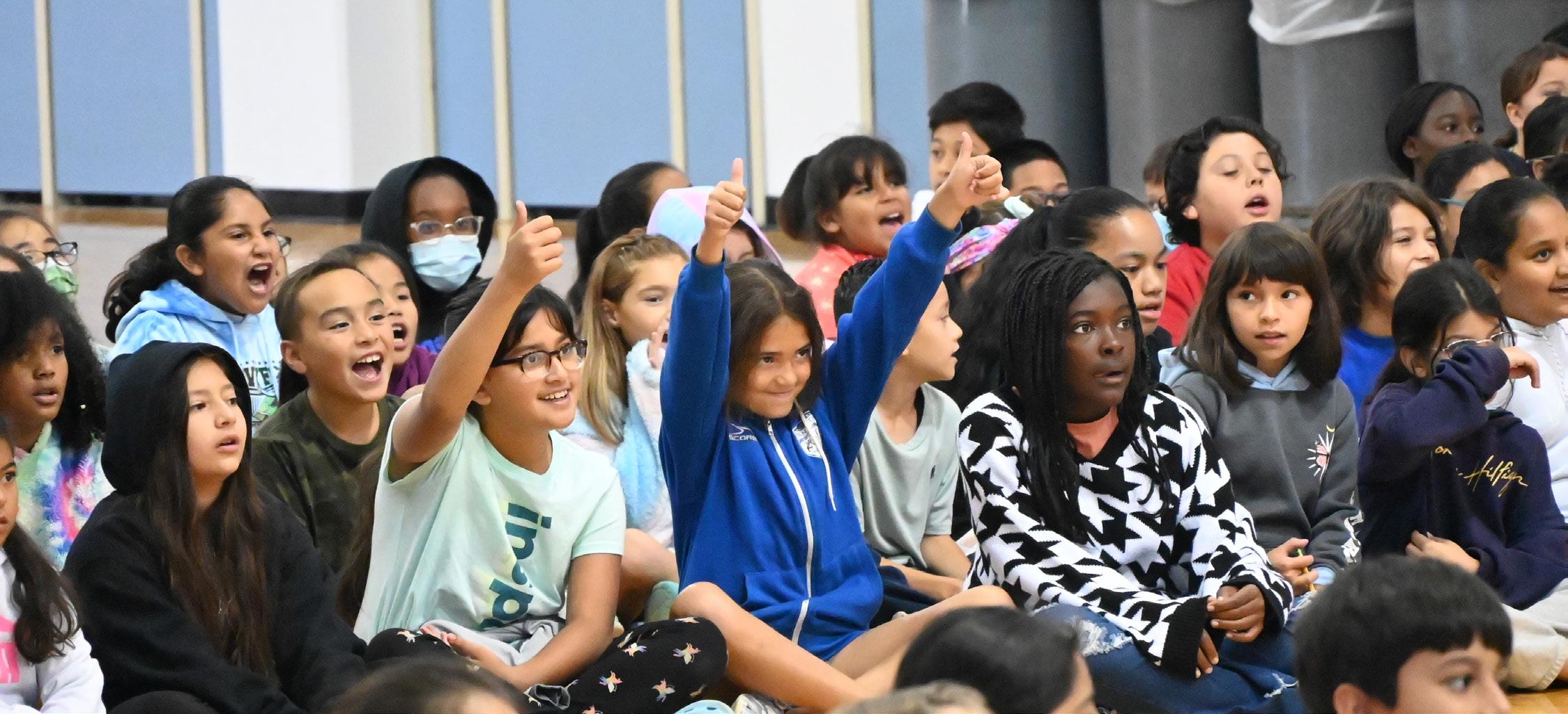
With many schools and buildings over 50 years old, the Manteca Unified Facilities Department is always busy with repairs, renovations, and new construction projects. Thanks to local tax measures, MUSD has been able to fund millions of dollars worth of projects to provide safe and secure campuses, improve access, and accommodate a growing student population. During the 2022-23 school year, MUSD continued work to maximize enrollment capacity at schools that are impacted by attendance growth. Facility needs and capacity are aligned with enrollment projections annually to create efficient projects that modernize our schools and embrace the growth of our community, such as new builds and boundary adjustments.
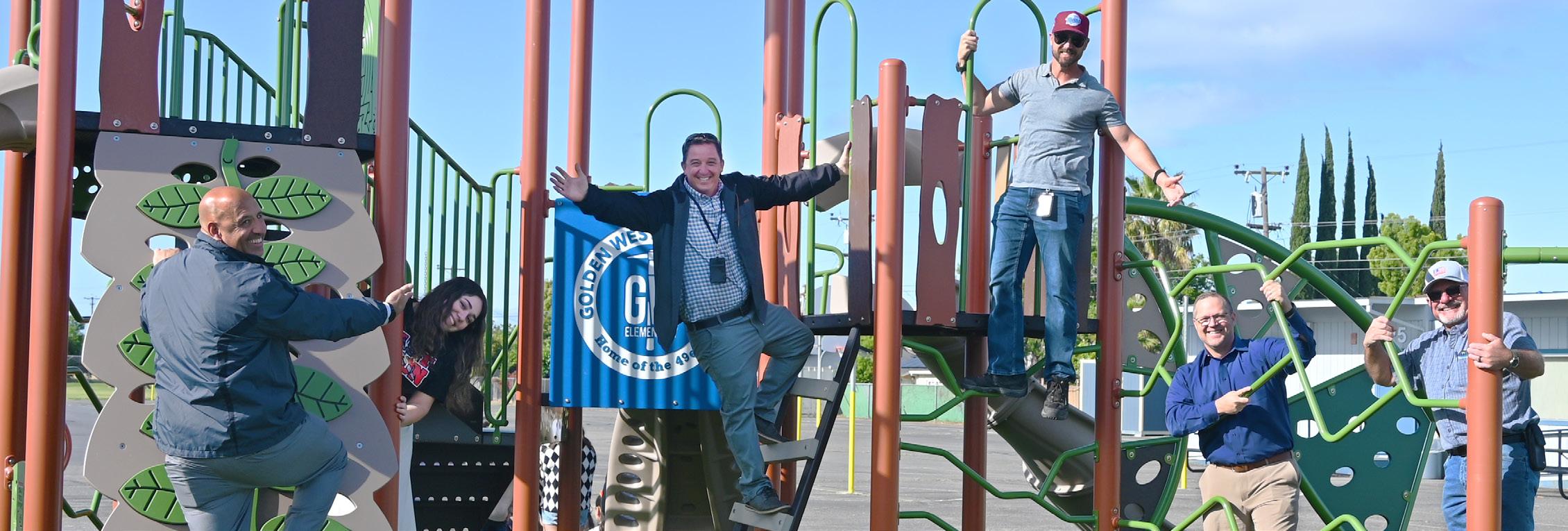
Funded by Measures G and A, modernization projects at both East Union and Manteca High School are moving into the next phase. Master plans for both sites, which each include a two-story classroom building, learning commons, and media center among other projects, have been approved by the state. Construction on these projects is slated to break ground in the coming months.
In addition, New Haven Elementary is going to see some major construction. The Patriots will welcome a new administration building, modernization of existing classroom buildings, a new 8-classroom building, and significant parking improvements. This project is currently awaiting Board approval.
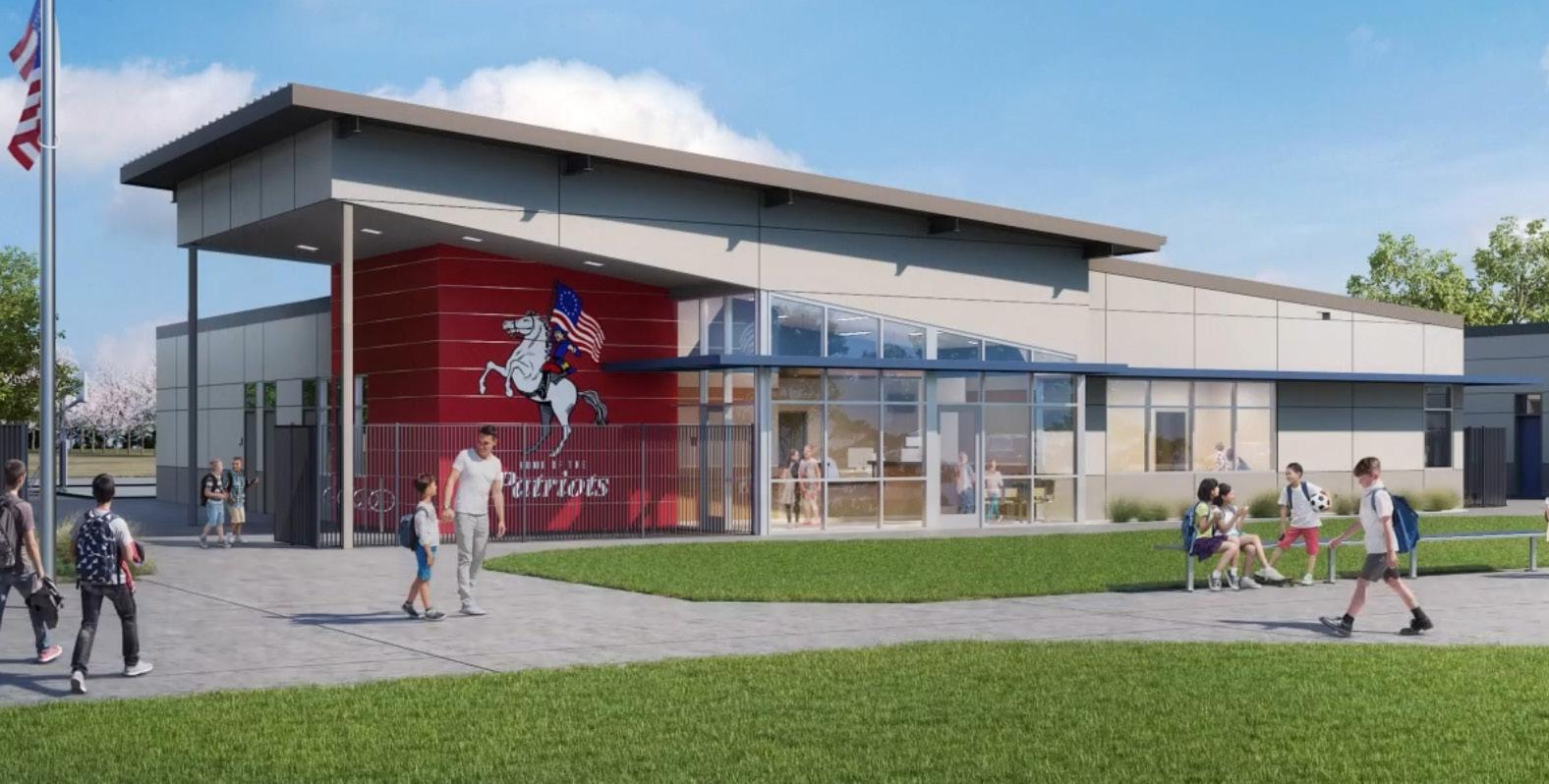
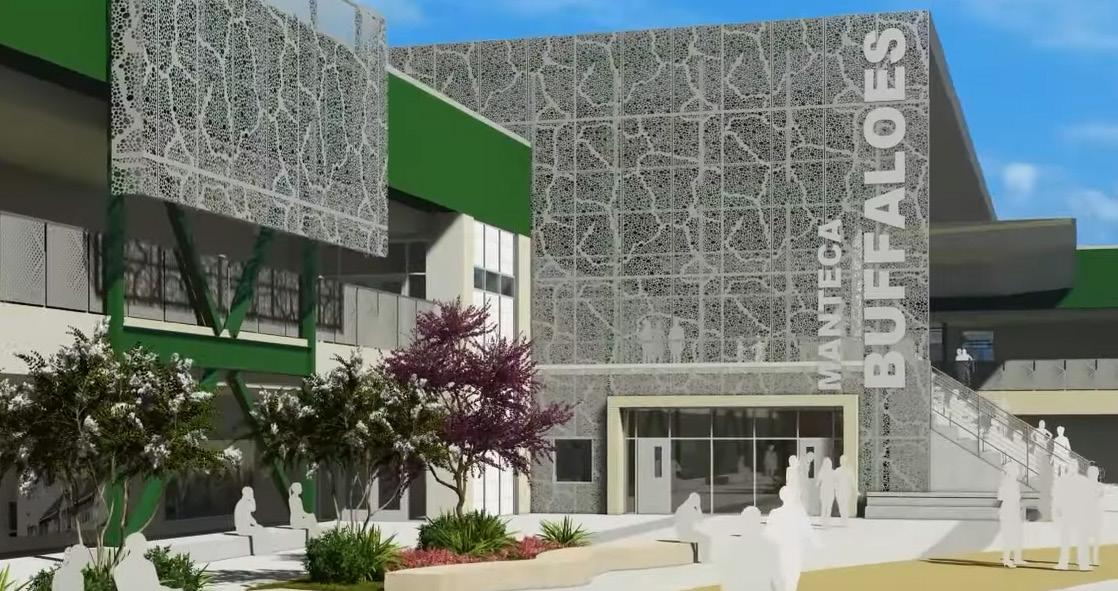
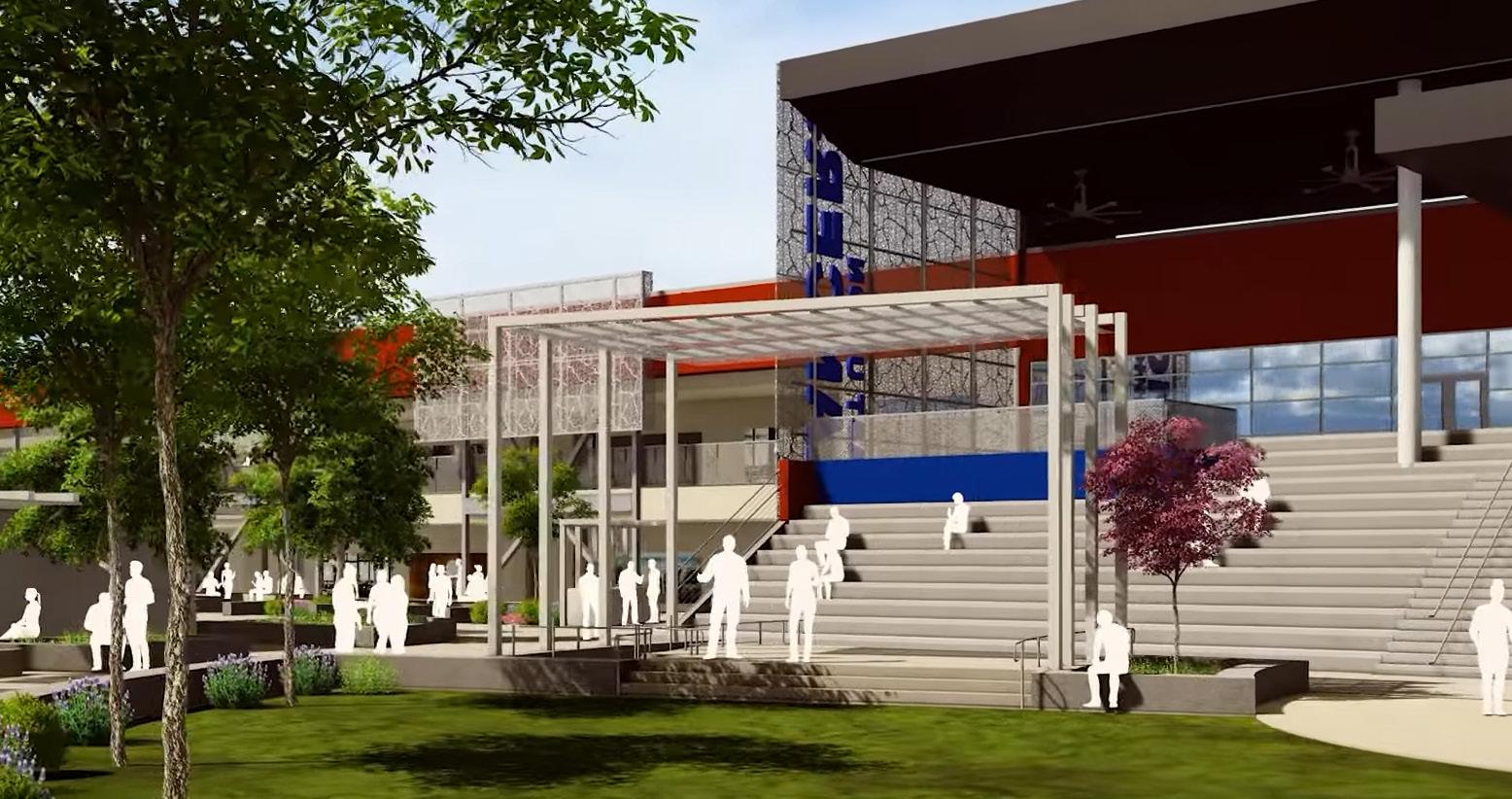
Scan the QR codes to see videos of the planned projects.



Completion of each school’s most recent modernization project.
To improve accessibility and inclusivity, elementary schools in Manteca Unified are receiving new playgrounds or playground elements. The playgrounds will emphasize three types of play for students: sensory, social, and motion.
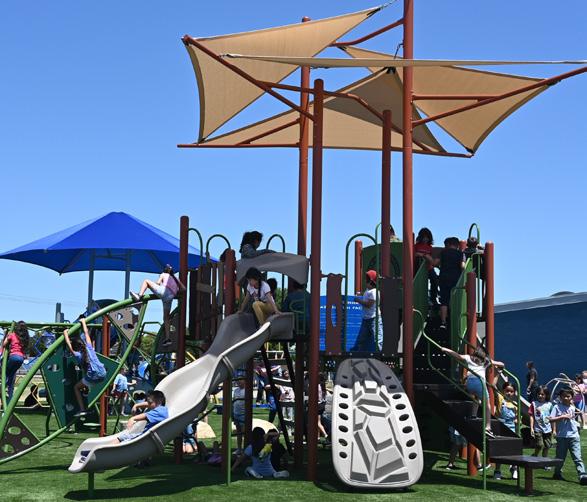
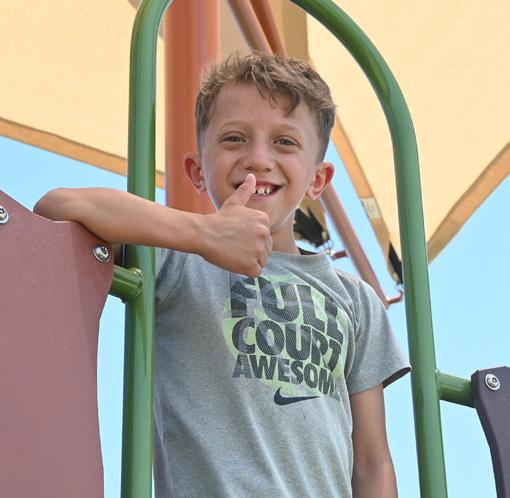
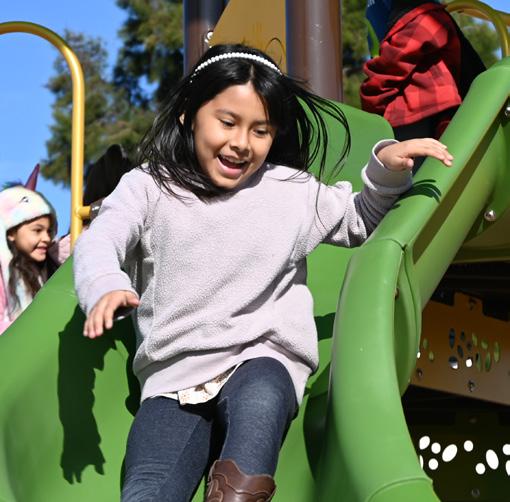
So far, 12 projects have been completed and all 26 are expected to be done by October 2023. To learn more about the playground upgrades and student board member Courtney Amaral’s advocacy for accessibility, visit our YouTube page or scan the QR code.
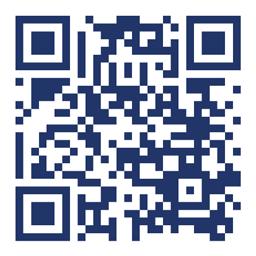
UTK (Universal Transitional Kindergarten) is a free, full-day early education option that will be available to all four-year olds in California by the 2025-2026 school year. While we are excited to welcome these young learners to our campus, finding adequate classroom space is a challenge.
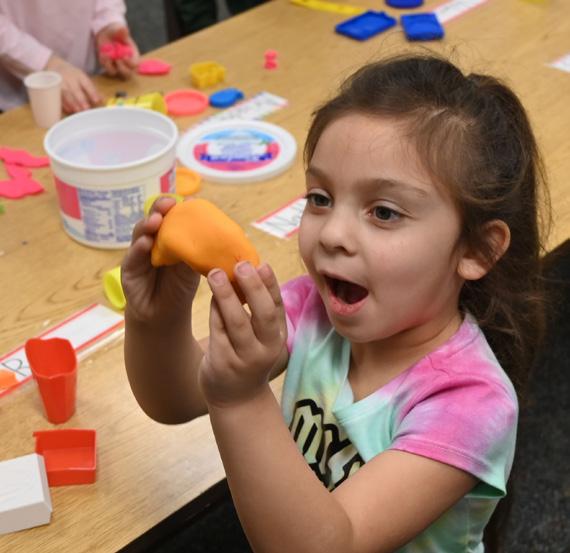
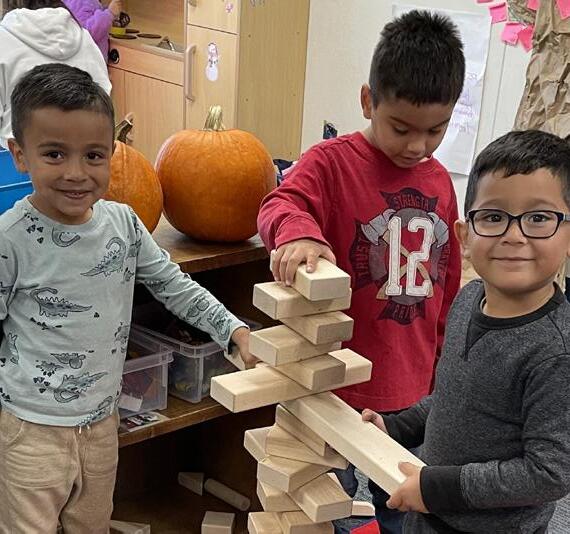
To meet this challenge, the MUSD Board of Education has approved the construction of two Early Education Centers one each in Manteca and Lathrop. Each campus will have modern classrooms and be able to serve students in PreK, UTK, and kindergarten with unique programming for critical learning.
SUMMER 2023
• Renovation of EU’s Dino Cunial Stadium underway, to finish in the fall
• Pool renovations at both Sierra and Weston Ranch High Schools to start in July
• 700 HVAC units, all older than 2007, will be replaced in $18 million ESSER funded project
• Roofing replacement at East Union (seven buildings), New Haven (library), and Yosemite Day School (four buildings)
• Theatrical lighting replacement at East Union and Manteca High Schools in late summer to fall

George Komure
Great Valley Joseph Widmer
*Subject to change
Manteca Unified’s robust English Language Development (ELD) program is designed based on the understanding that students who have a limited understanding of how to speak, read, write, or comprehend English face unique academic learning barriers. For all students to thrive, culturally and linguistically diverse programming is key.
The primary goal of the English Language Development program is for students to attain high levels of English proficiency, master grade level standards, and gain opportunities to develop proficiency in multiple languages.
During the 2022-23 school year, over 600 students successfully reclassified as English Language Proficient, an increase from the 420 students who reclassified the previous year. Many of these students are uniquely bilingual.
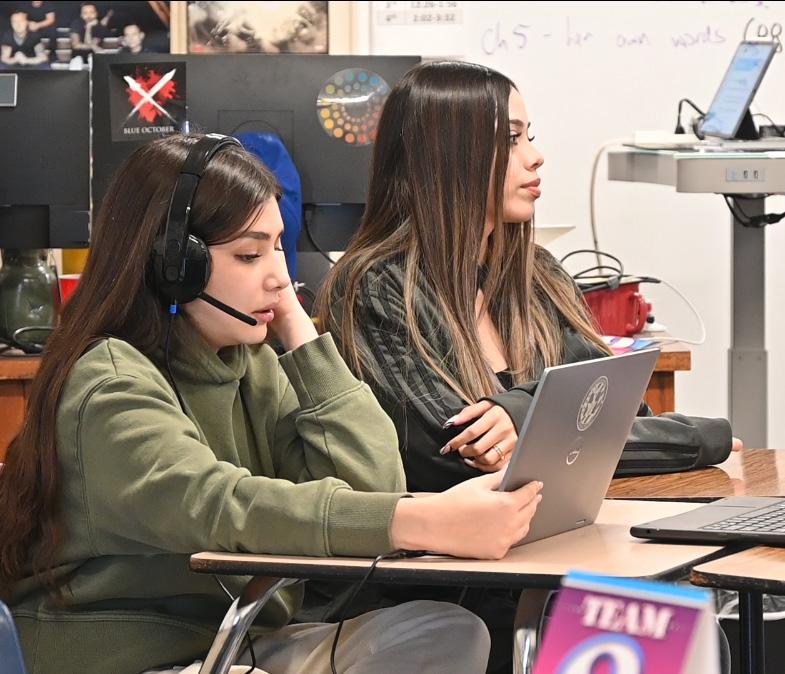
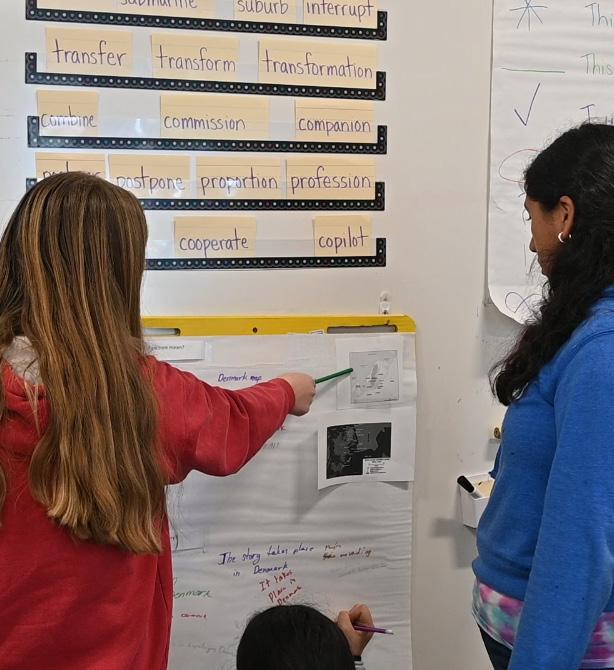
One school that is doing an exceptional job with the
ELD program is Sierra High. Teachers Janet Sanders, Sara Russell, Marlene Martin, and Teacher on Special Assignment Amy Rosendin share the heart of their work is the unified understanding of reclassification requirements and the commitment to ensuring students practice the four essential content areas daily: Reading, Writing, Speaking, and Listening.
They focus on students and their achievement, establishing daily routines, building good study habits, working with academic purpose, and understanding academic vocabulary to succeed in all classes.
For example, in an Economics class, an assignment might ask students to infer a trend based on provided data. But if students do not know what the word infer means – a term that is often used in educational settings – they are starting at a disadvantage. “It’s essential that students understand what they are being asked to do in order to succeed,” the group shares.
Students also learn applicable and transferable skills that will help them in other classes and their lives outside of school.

Ms. Rosendin has students practice creating presentations using software they will use in other classes and, one day, the workforce. By learning these skills in their ELD class, students feel more comfortable asking questions, which is essential for learning. “Getting students to self-advocate is crucial,” the group states. Students who struggle with English might not feel confident enough to ask questions, so learning this skill in a class environment where they feel safe and comfortable is key.
Ms. Russell encourages her students to read frequently, especially nonfiction, “real world” texts and articles relevant to their lives. She even has her students read the book The 7 Habits of Highly Effective People, so they are practicing reading English while learning important life lessons, such as accountability and progress monitoring.
Cristhopher Bonilla, a freshman this past year, shares, “I have never talked and learned about myself more than in my ELD 3 class.” Fellow Sierra High student
Monique Reyes-Sandoval, who has reached Level 4 in English Proficiency, also feels grateful for the skills the ELD program helped her fine-tune, stating, “One advantage of ELD classes is that they help you better understand your other classes.”
Entering the 2023-24 school year, MUSD will be even more intentional about highlighting the benefits of utilizing cooperative learning strategies, which help all students with gaps in their learning. The district will continue to offer Professional Development trainings and opportunities focusing on English Language acquisition topics, including meetings on how to implement specific strategies that benefit English Learners. Next year, the program will also be onboarding a new, highly anticipated data-collecting system called Ellevation in addition to a designated ELD curriculum at the high school level.
Both of these additions are expected to be game changers for ELD teachers throughout MUSD!
In Manteca Unified, an initiative called the Coordination of Services Team (COST) is revolutionizing the educational landscape by breaking down barriers and unlocking the potential of students. Since its inception in elementary schools, COST has witnessed an astounding expansion in high schools this year, transforming the lives of countless students in the district.

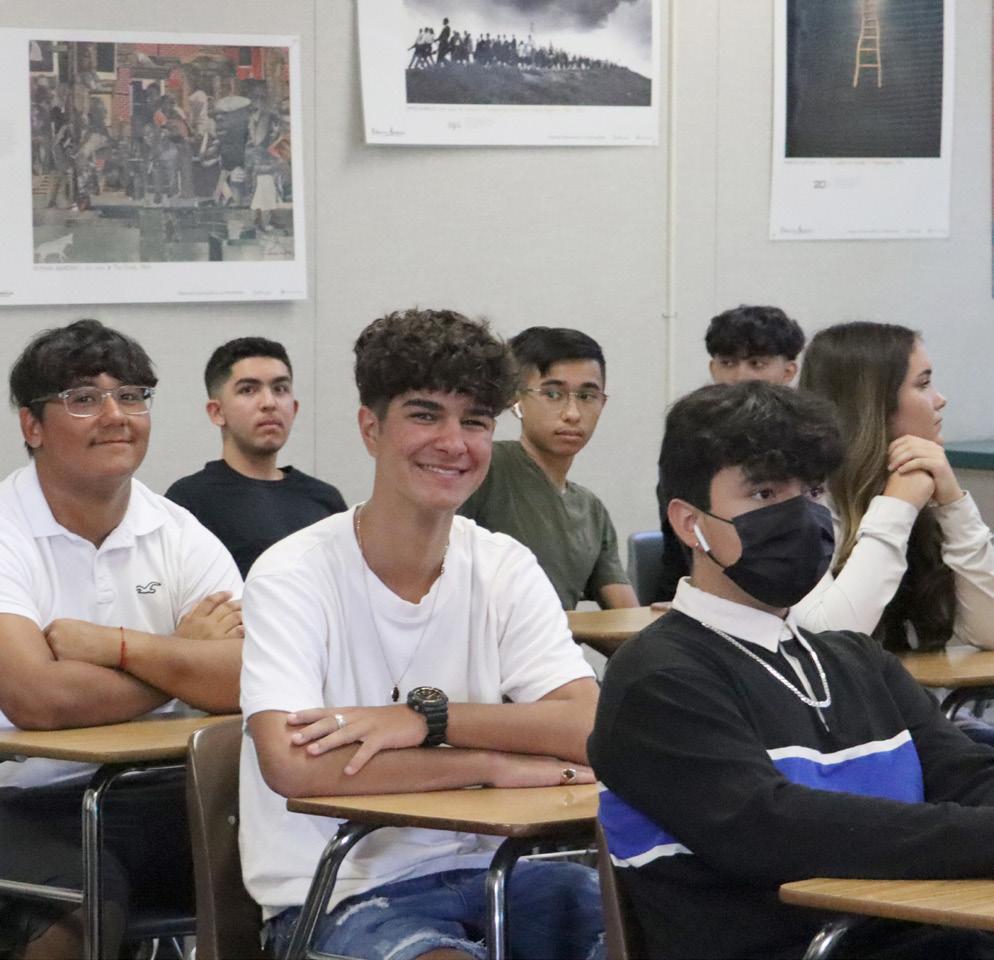
MUSD’s COST model is an innovative method of early intervention that strengthens school prevention and intervention efforts. Its core objective is to provide immediate support to referred students who face challenges hindering their engagement in essential academic instruction. These barriers encompass a range of issues, from behavioral difficulties and a lack of basic necessities to social-emotional needs and chronic absenteeism.
This year there were over 1,700 COST interventions District-wide.
Once a student is identified as needing support, the COST team springs into action, working collaboratively
to develop a comprehensive plan tailored to address and eliminate the barriers impeding the student’s path to success. This personalized approach ensures that every student receives the necessary support so they can begin to thrive academically.
To support COST’s growth, the District has introduced Intervention TOSAs (Teachers on Special Assignment) to high school campuses this year. This strategic move has created a new role solely dedicated to coordinating prevention and intervention efforts, augmenting the efficacy of COST. Additionally, Intervention TOSAs build relationships with 8th graders before their transition to high school, fostering a seamless and supportive educational journey.
“The key is knowing students by name and need, which makes the program hugely successful,” says Executive Director of Secondary Education, Clara Schmiedt. This student-centric approach forms the bedrock of the program, ensuring that no student falls through the cracks and that all are provided with the tools they need to succeed.
Students are referred to COST for an existing barrier to learning.
Site team reviews and triages student cases, while providing additional support as needed.
Site team identifies interventions and measurement tools to use. Team commits to action steps.
plan.
Students enter COST monitoring based on team decision.
If barriers to learning are RESOLVED
Site team determines if barriers to students’ learning are resolved. Progress is documented into our student database.
Students showing success will be monitored monthly to ensure they remain on the right track.
At Manteca High School, Vice Principal Brett Lewis, and Intervention TOSA Frank Fontana lead COST with a group of student-first staff.
“Everyone is there for the students and wants to see them succeed, stay in school, and graduate,” says Lewis.
Fontana, one of the first Intervention TOSAs, now devotes his full attention to supporting, monitoring, and coordinating the program’s efforts. He assumes a pivotal role, overseeing the entire process, and ensuring students are identified promptly and matched with the most effective interventions available. Moreover, Fontana establishes vital connections between students and staff on campus, so students feel supported, cared for, and empowered with trusted adults.
“It’s about getting the right students, the right resources, at the right time,” he shares.
Starting in the 2023-24 school year, all school sites in MUSD will be implementing COST and all high schools will have an intervention TOSA.
As the COST initiative continues to transform the educational landscape of Manteca Unified, its commitment to breaking barriers and unlocking student potential remains unwavering. By providing personalized support, fostering meaningful relationships, and dismantling obstacles, COST is laying the foundation for a brighter and more inclusive future for every student in the district.
If barriers to learning are NOT RESOLVED, team will revise
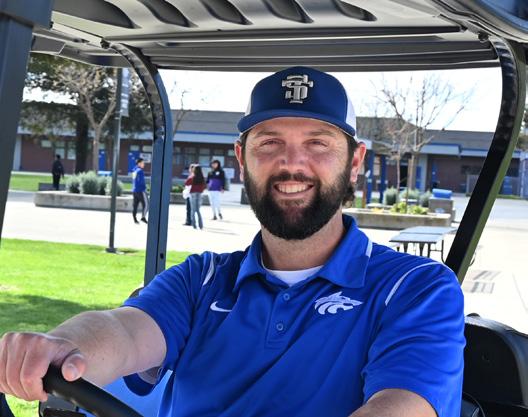
Manteca Unified is proud to recognize the excellence of our staff by naming select individuals as Employees and Educators of the Year who have directly impacted student success and safety.

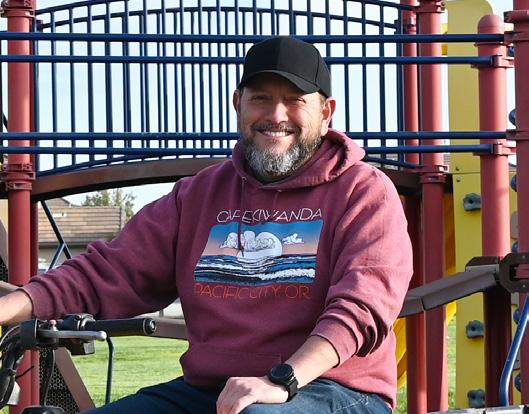


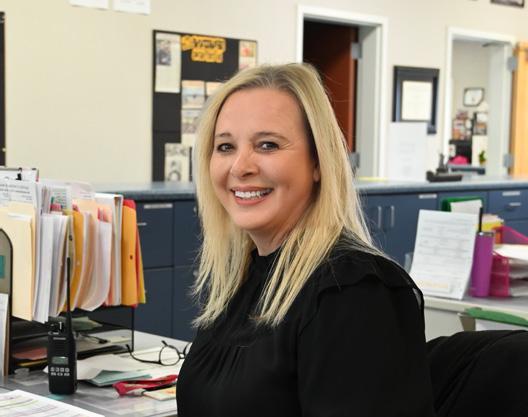
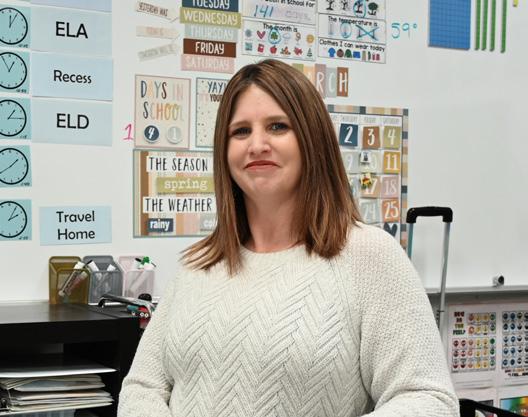
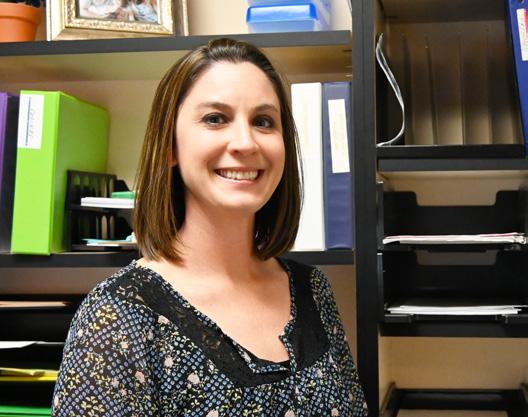
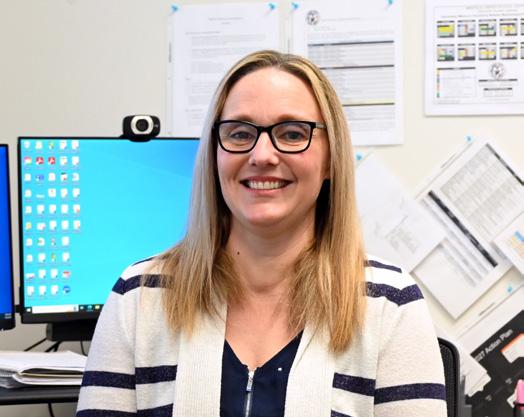

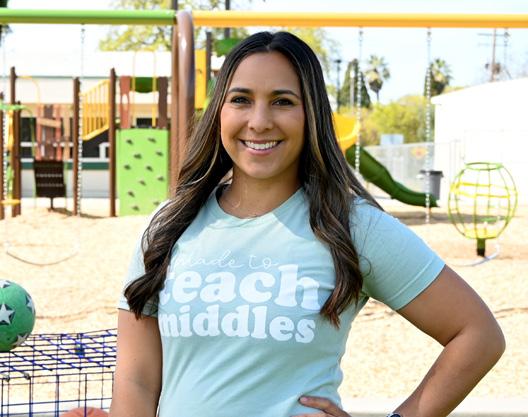

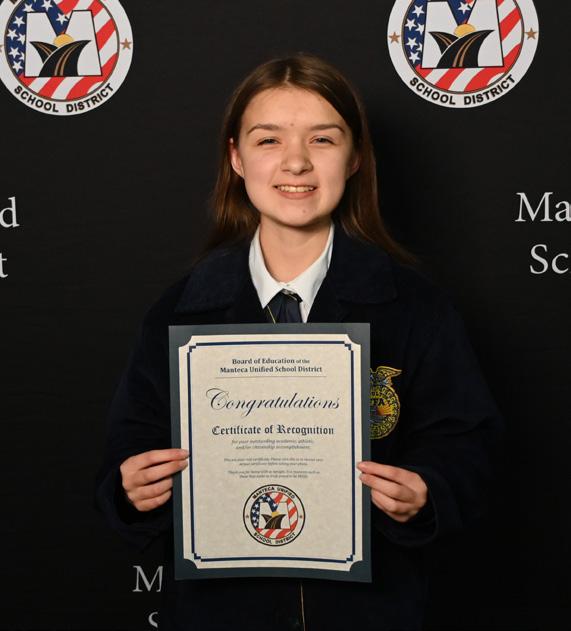
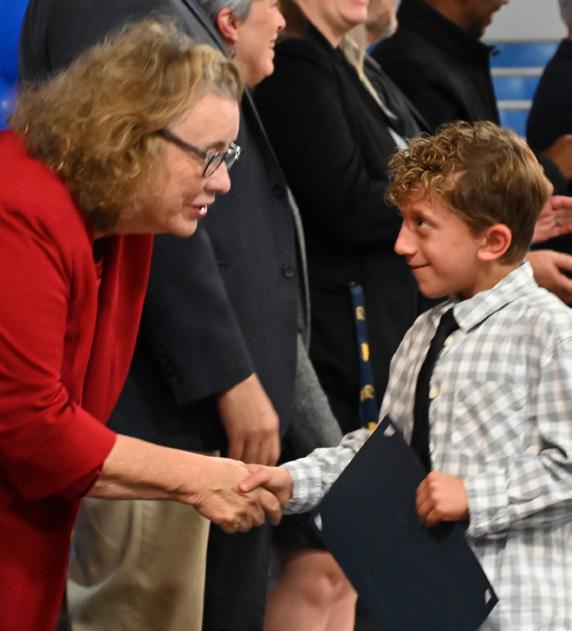

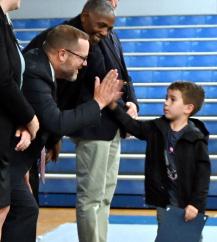
Each fall and spring, Manteca Unified, in collaboration with the Board of Trustees, hosts a District Celebration. This event honors student and staff achievement in the areas of grade level standards, safety, and individual student success. This year, the Board gave out 630 awards to students, staff and school groups!
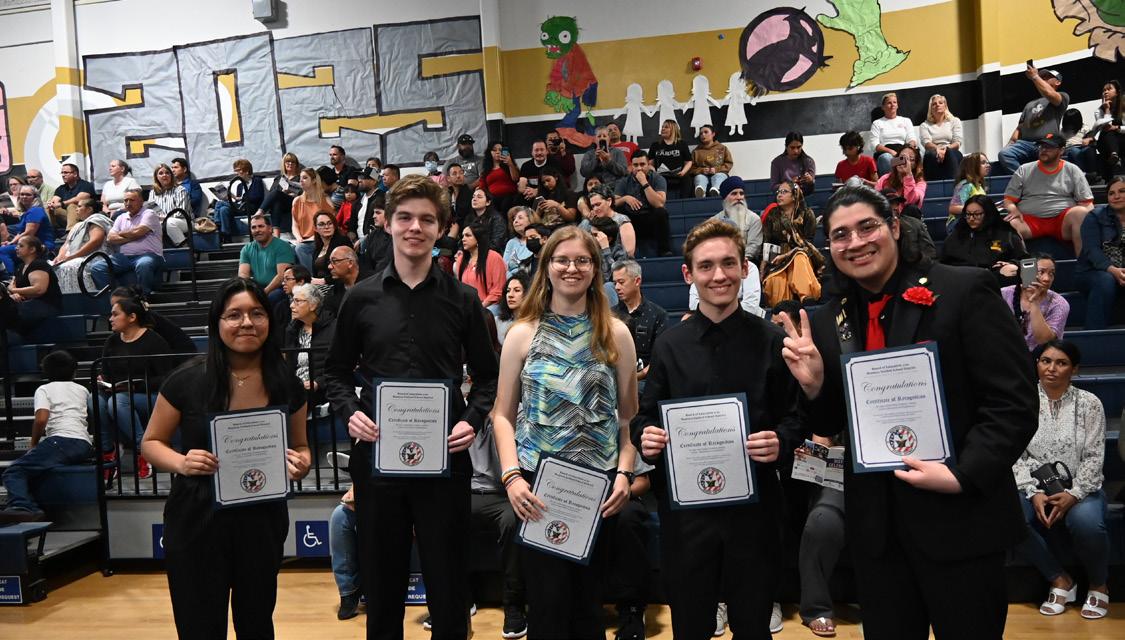

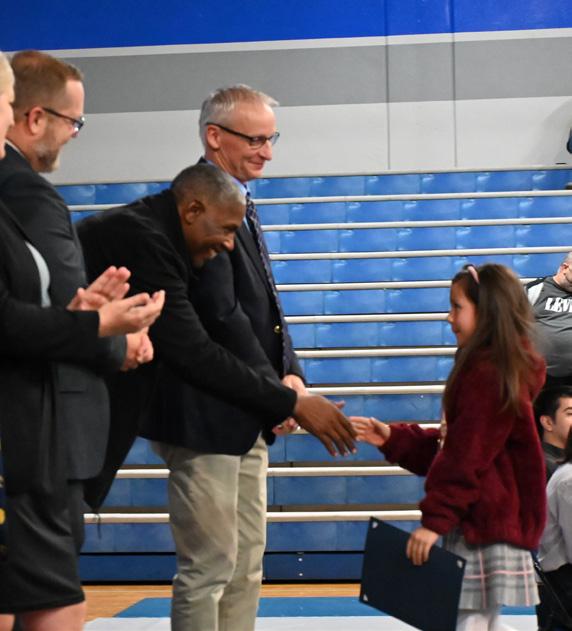
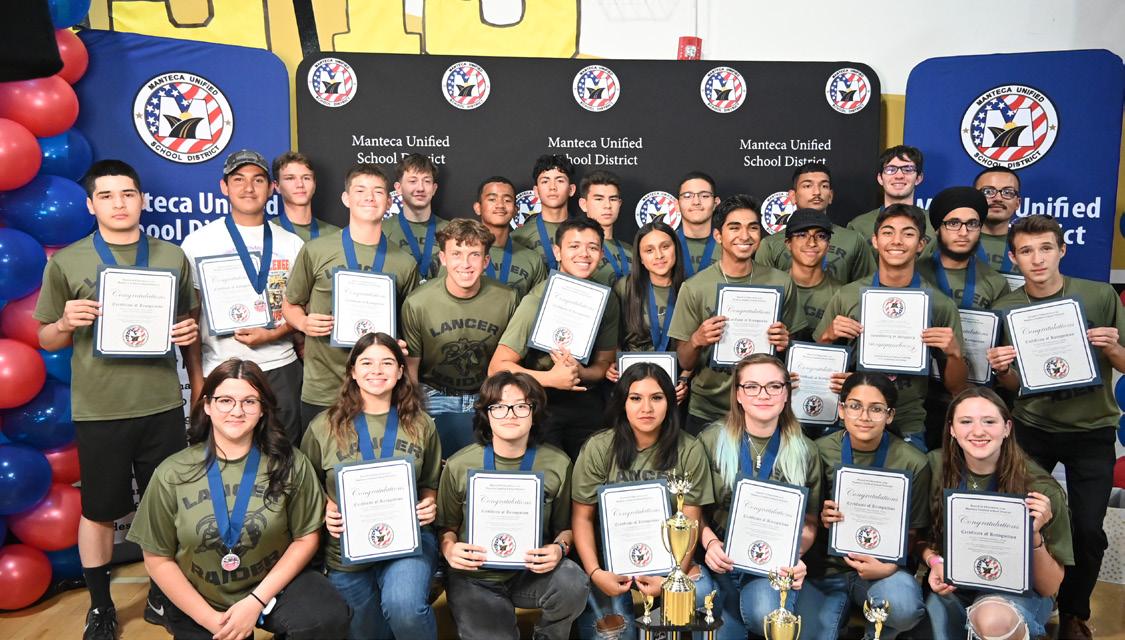
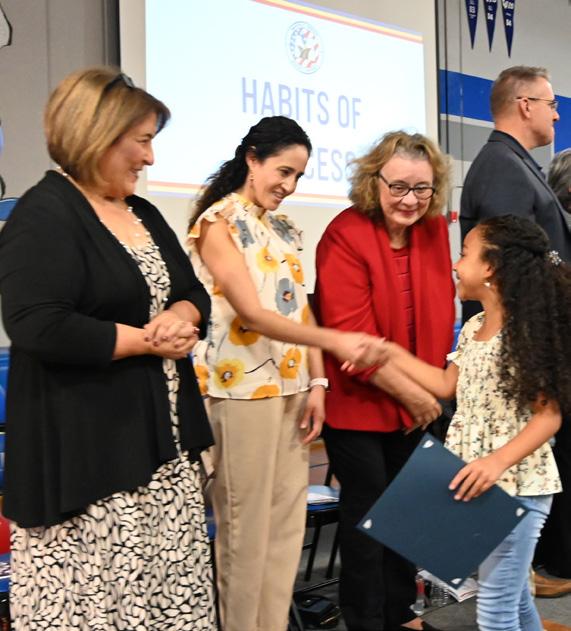
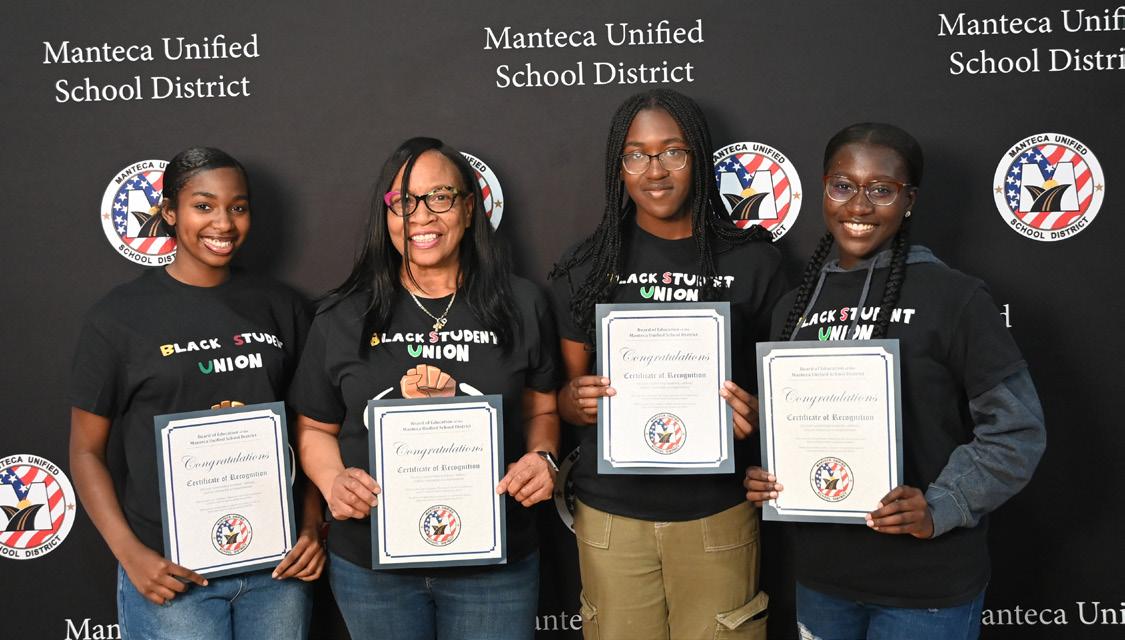
In Manteca Unified School District, we believe in using mean meaningful, measurable and aligned data to track, inform, and guide education. Check out MUSD’s major data points below!
The Community Outreach team implements and sustains community relations, outreach, and print/ media publications. They also advise leadership on all comprehensive communication services and strategies for the District.
Communications Toolkits Created for Administrators………...............................9
Crisis Communication Responses Drafted for Administrators……...........................….64
Elementary Logo Updates…….................................14
High School Principal Surveys Distributed…............2 Issues of The Mark Highlights ……............................11 Press Releases Sent to Local, State, and National Media……......................................….17
Principal/Administrator Change Letters Drafted and Released....................…….......33 Mailers Sent to the Community………..........…..…….3 Site Visits…............................................................168+ Social Media Posts….............................................326 Strategic Plans Created and Implemented……..................................……..….19
YouTube Videos Created…......................................21 Website Visitors……....................................…447,000
The College and Career Readiness Department is committed to maintaining and, as applicable, expanding CTE programs where students have the opportunity to develop skills that will support them in their next endeavors.
CTE A-G Courses Added to Course Portal.............50+ CTE Pathways Realigned…...................................30+ Students that Completed a CTE Pathway…........1,200
The Department of Emergency Preparedness and Safety is responsible for the coordination, outreach, and support of the processes and procedures for emergency preparedness and safety throughout the district.
Lockdown Emergency Kits ..........................100% of Classrooms Law Enforcement Agency Meetings…....................…4 Reunification Kits……...….........100% of School Sites
FACILITIES/OPERATIONS
The Department of Facilities maintains a safe and healthy learning environment for students and staff. They ensure the quality of the school buildings, the surrounding grounds, and the overall cleanliness is consistent across the entire facility.

Modernization Projects Completed Since 2017….......................................…13 Playground Updates................................................12 Work Orders Completed at Schools..................8,338
FISCAL SERVICES
The Fiscal Services Department manages the finances of the district, while implementing systems which support Schools and District initiatives to ensure student needs as identified in strategic planning are met.
Total Expenditures by Percentage Salaries..................................................48.5% Benefits....................................................20.1% Supplies...............................................10.8% Operating Expenditures.....................................10.5% Capital Outlay.....................................................8.8% Other............................................................1.3%
through best practices and the effective use of technology to foster academic excellence.
The Department of Innovation and Improvement is focused on Manteca Unified’s goals of Standards, Safety, and Emerging Students. They utilize stakeholder input to explore and evaluate existing systems and structures to ensure they are effective and aligned with our goals and targets.
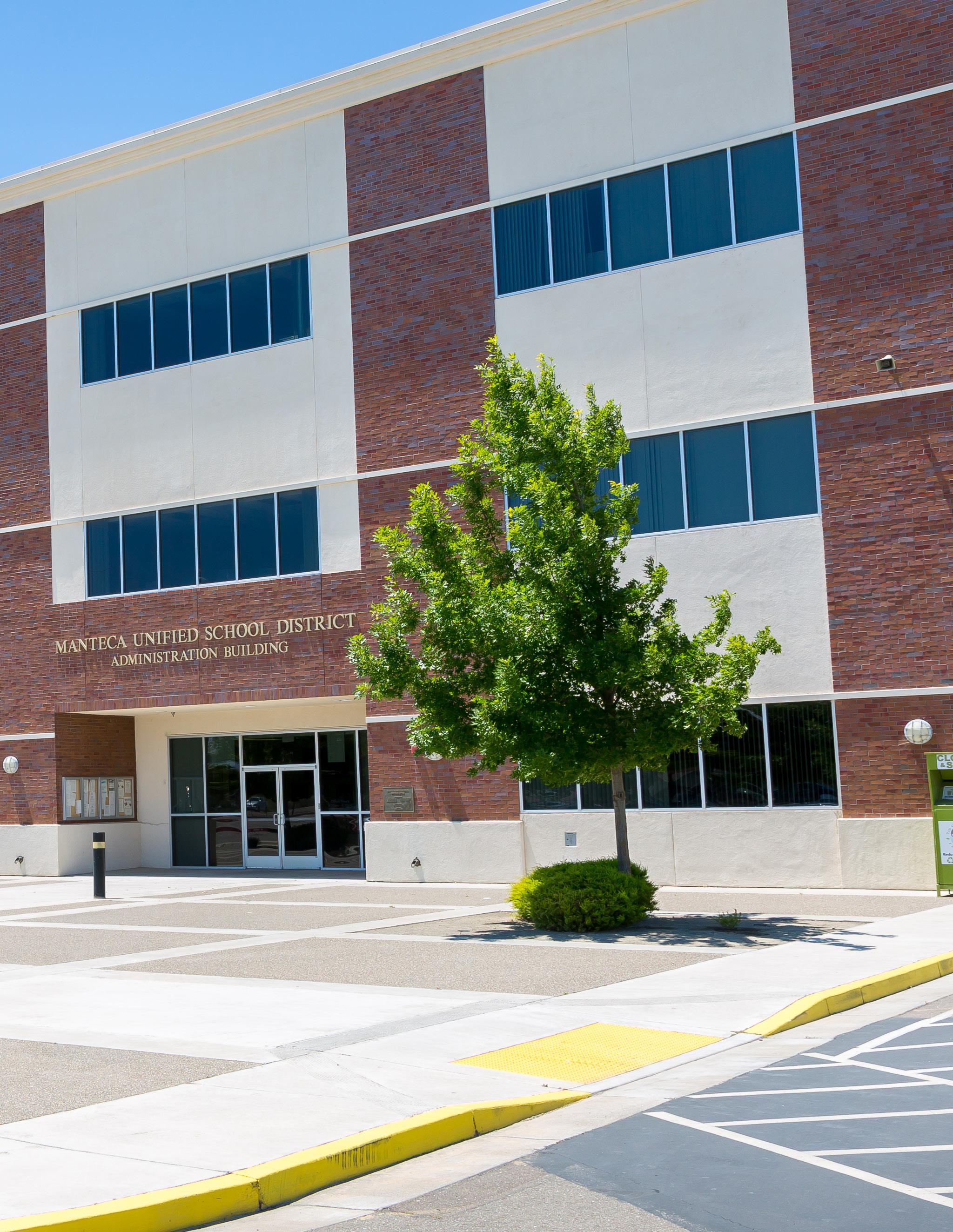
INNOVATION AND IMPROVEMENT CONT.
Wraparound Services Students Served.......................................................98 Tier 1 Support Hours.............................................54.6
Tier 2 Support Hours..........................................278.2
Specialized Group Hours...................................162.3
Nutrition Education works hard year-round to promote good health through nutrition, physical activity, and education. Their team serves delicious and nutritious food in a clean and friendly environment, so the students at Manteca Unified School District can focus and thrive academically.
Community School Events........................................15 Fresh Produce Served on “Fresh Fruit and Vegetable Fridays”….............3,500+ Meals Served...............................................4,331,423
Specialized Diabetic Camp........................................1
The Purchasing Department oversees the processing of requisitions, credit card statements, warehouse stores, and mail delivery. All processes ensure the ordering and delivery of good/services for student and staff needs.

Classroom Furniture Refresh Negotiated Cost Savings…….....................$324,720 Stores Warehouse Orders processed…...........….584 Vendor Purchase Orders processed……...........5,327
SPECIAL EDUCATION
The Special Education Department supports and implements relevant, evidence-based practices by providing programs designed to foster the potential, purpose, and productivity of every student in Manteca Unified.
Special Education Classes Added…………….........….9 Students Receiving Special Education Services……..........................3,280
Students Serviced via the Extended School Year Program…..........................66
SPED Staff Adapted Physical Education Teachers……….............................…………3 Behaviorists…........................................………7 Behavior Support Program Assistants………………6 Coordinators of Special Education…….................… 2 Occupational Therapists….....................………………3 Program Specialists…….................................………..9 Psychologists…………................................….27 Special Education Teachers…............................…156 Speech Therapists….............................................….28
The Student Achievement and School Accountability (SASA) Department helps meet student needs while maintaining compliance with State/Federal mandates for supplemental funding.
Math Growth Projections Met..............................48% ELA Growth Projections Met...............................44%
Predicted CAASPP Student Proficiencies based on MAP Data
Math Exceeding Standard............................................8.9% Meeting Standard...............................................16.8% Nearly Meeting Standard.................................27.5% Not Meeting Standard.......................................46.8%
English Language Arts Exceeding Standard...........................................13.4% Meeting Standard..............................................24.6% Nearly Meeting Standard.....................................27% Not Meeting Standard..........................................35%
English Language Development English Language Reclassifications....................600+ English Learners Who Reached Reading Growth Target.....................................42.6% Total Students Receiving ELD Support...............5,439
The Student Services Department is focused on providing school site supports that align with Manteca Unified’s goals of standards, safety, and emerging students.

Coordination of Services Team (COST)
COST Interventions District-wide…..................1,721*
*Supports Provided: Academic Support, BASE SEL, Behavior Support Specialists, Counselor Support, Intervention TOSAs
Indian Education Support Program Student Enrollment.................................................122
Social-Emotional Learning BASE SEL Modules Completed............................6,150 Minutes Spent Completing BASE SEL Courses..........................................221,355 Staff Trainings..........................................................40 Site Support Visits…...........................................…..27
Manteca Unified’s Teacher Induction Program is a state-approved two-year induction program that begins in the teacher’s first year of teaching after the completion of his/her preliminary credential. Candidates receive structured support and formative assessment (observation and feedback) from an experienced teacher while working through an Individual Learning Plan.
Cleared Teaching Credentials……......................….45 Teachers in Pre-Induction Program...................….121 Teachers Participating in Program…………....……102
The Department of Professional Learning coaches, trains, and supports all educators with the necessary knowledge, skills, resources, and tools needed to be effective in meeting the needs of all students so they can achieve mastery of grade-level standards.
Training and Support Delivered by MUSD TOSAs Admin Support Visits…..........................................125
Admin/Instructional Specialist Trainings........….…46 Curriculum Pilot Trainings/Meetings…...................90 Demonstrations…......................................30 District-Wide PD ......…..............................................16
PLC/ Teacher Support Visits................................….124 Site Trainings.......…..............................................….50 Trainings Created…..................................................91
The Department of Transportation manages the logistics, safety, and efficiency of Manteca Unified’s transportation services. They are responsible for providing safe, reliable, and efficient transportation for students, ensuring safe and efficient transportation to and from school.
Students Transported Daily.................................1,900 Bus Routes................................................................50 Field Trips Driven....................................................900 Permanent School Bus Drivers.................................45 Square Miles Covered.............................................113 School Bus Instructors................................................3 Vehicles Routinely Serviced..................................520
